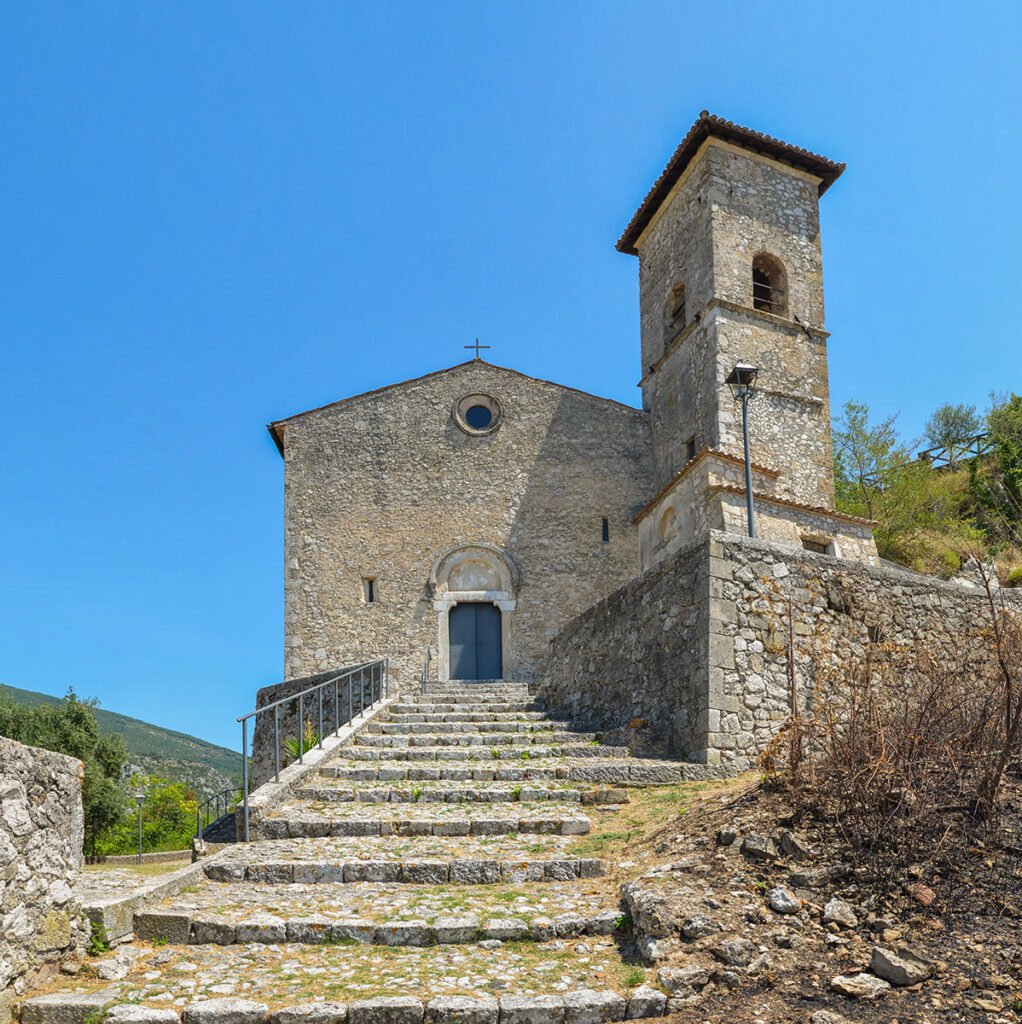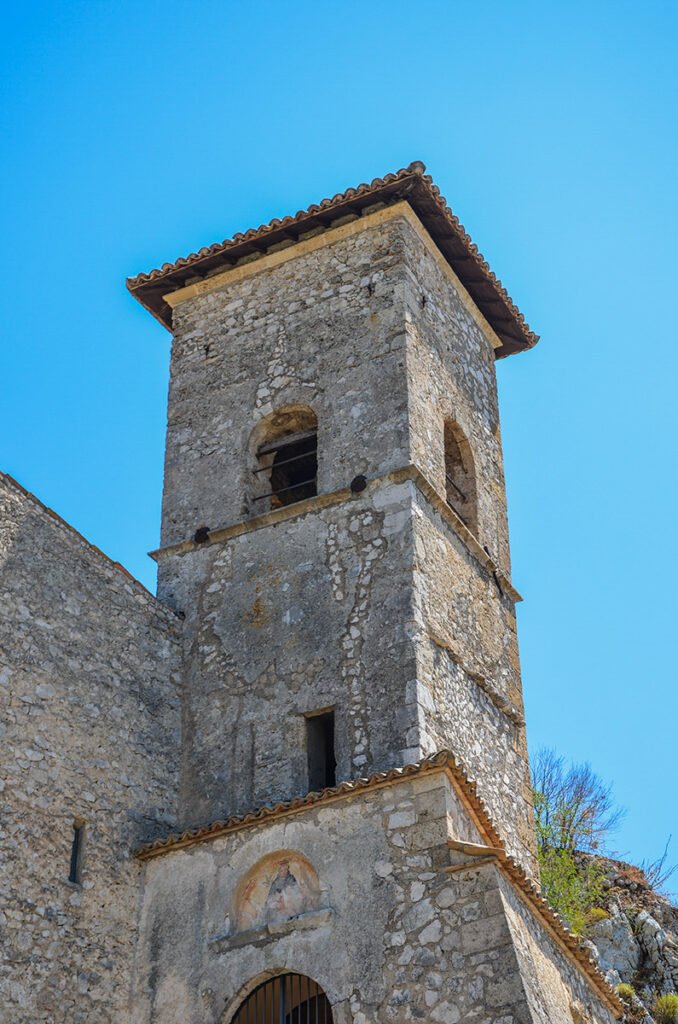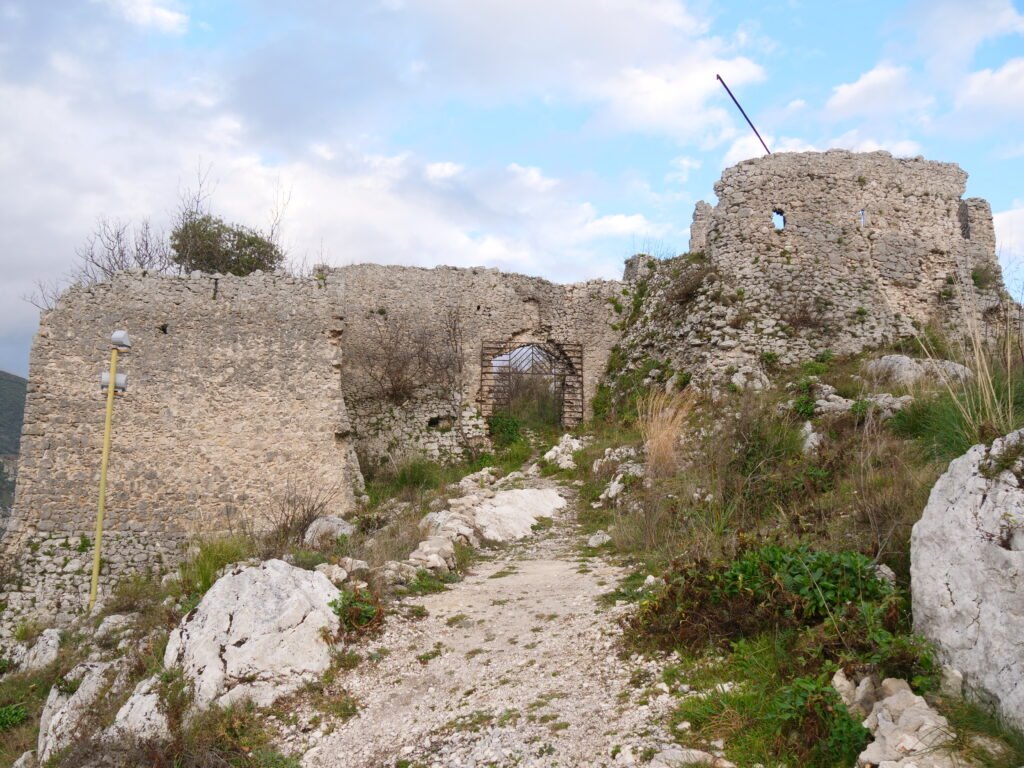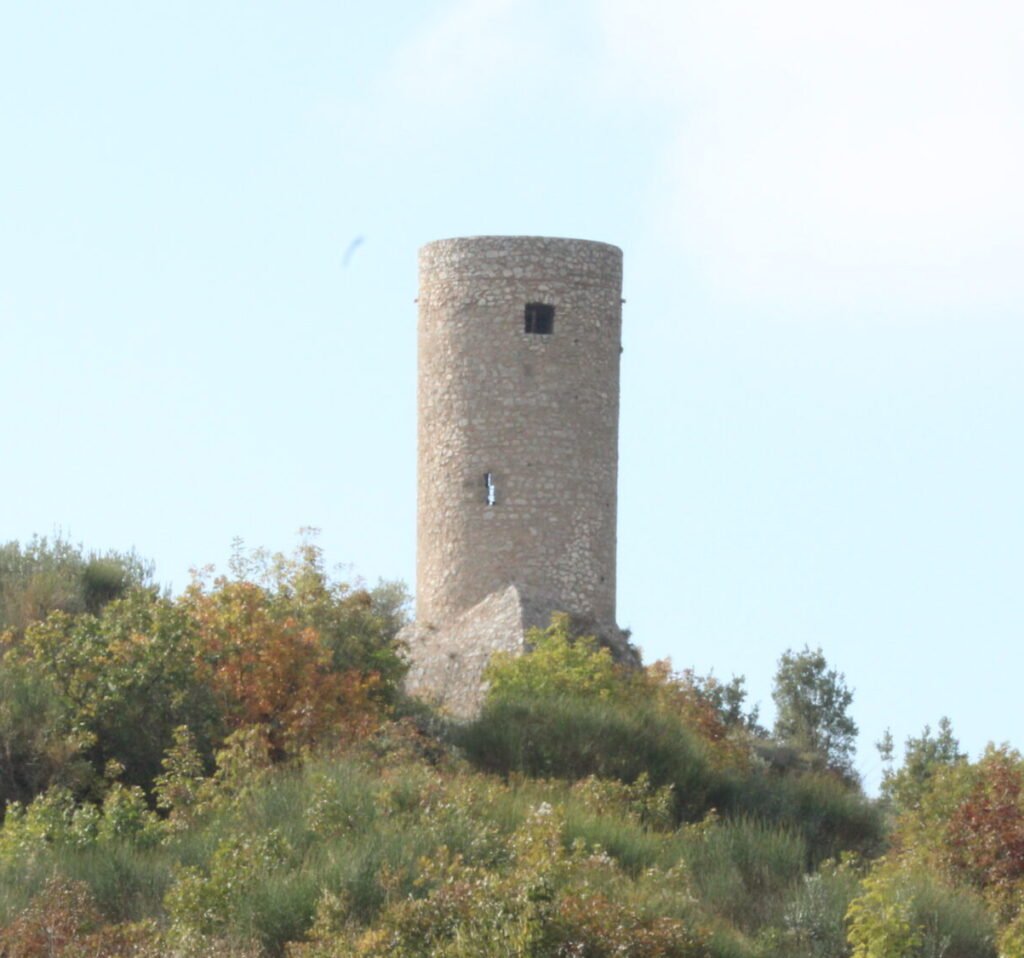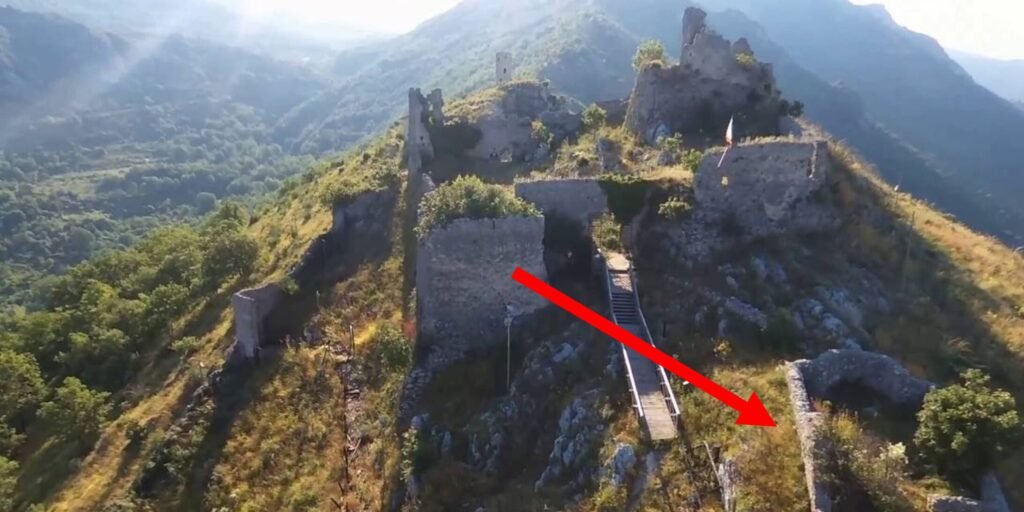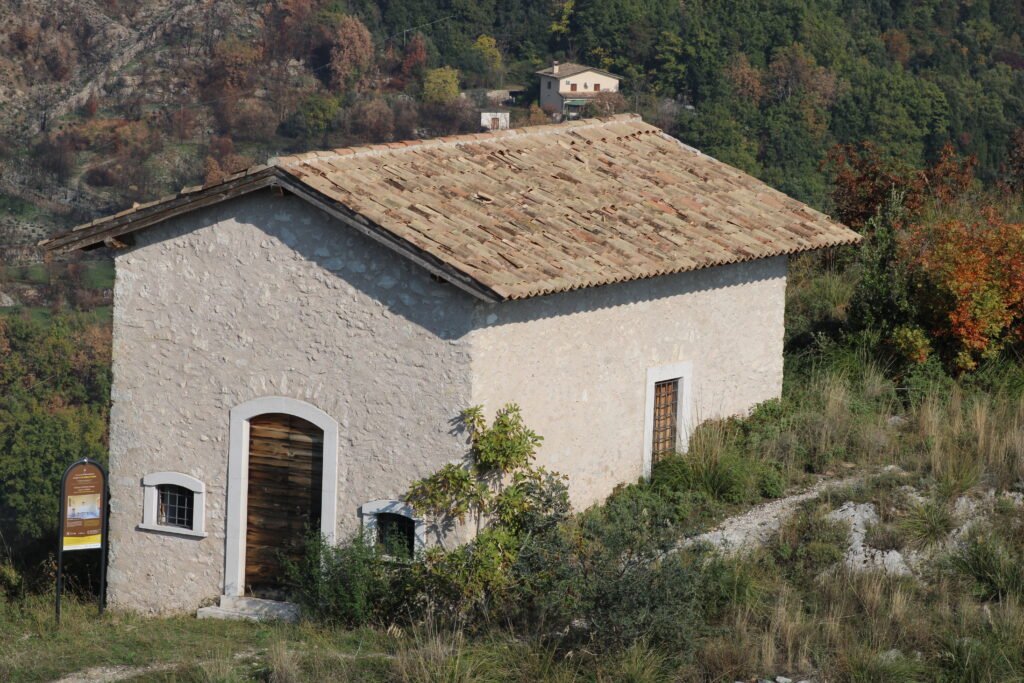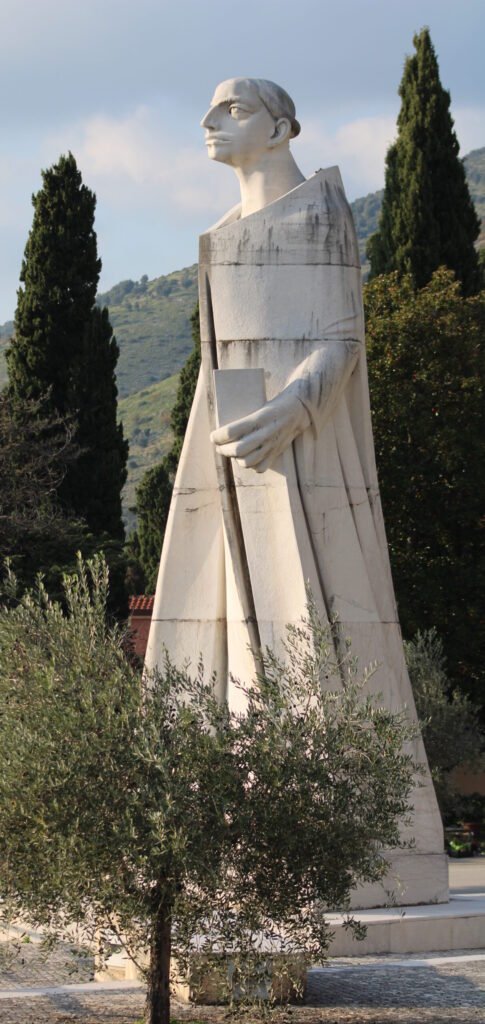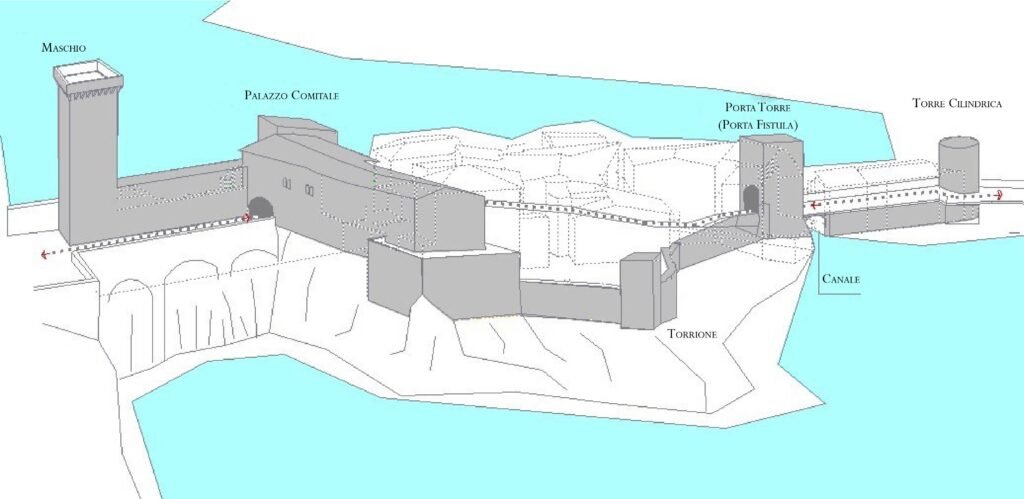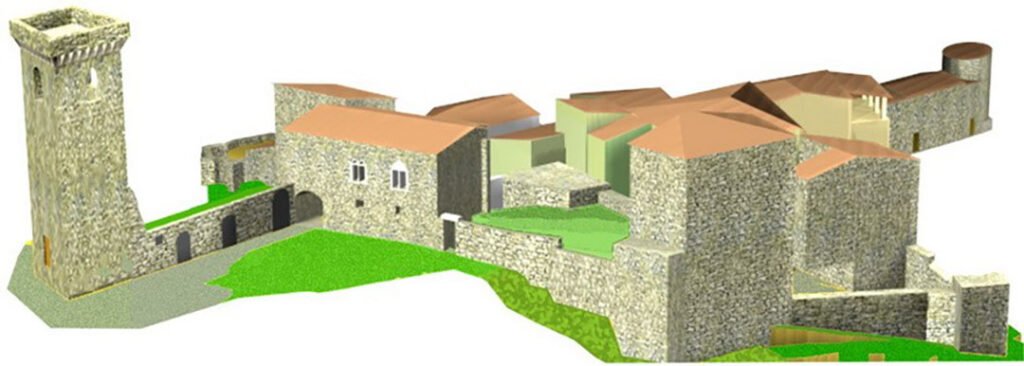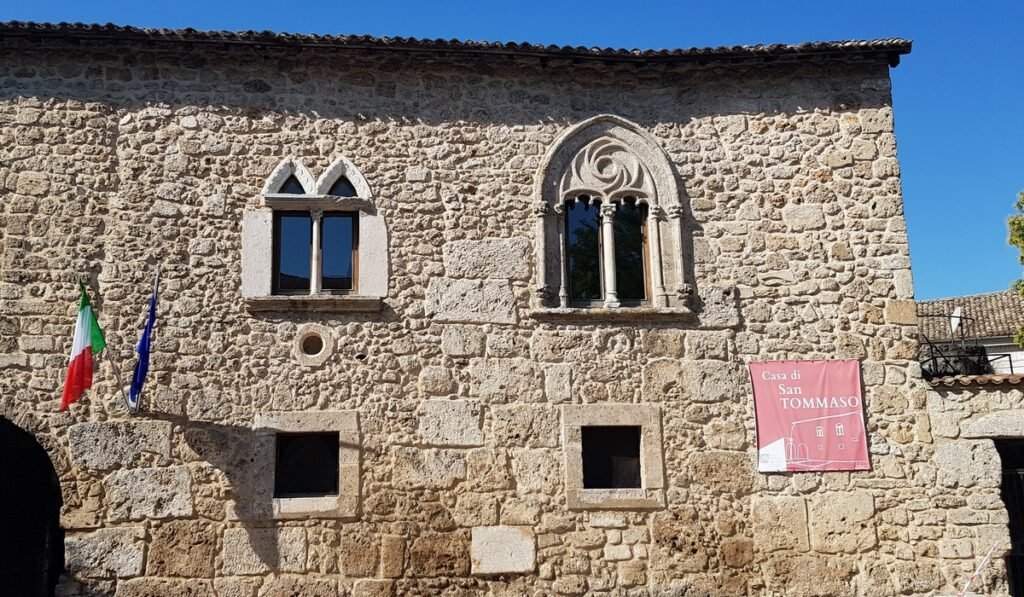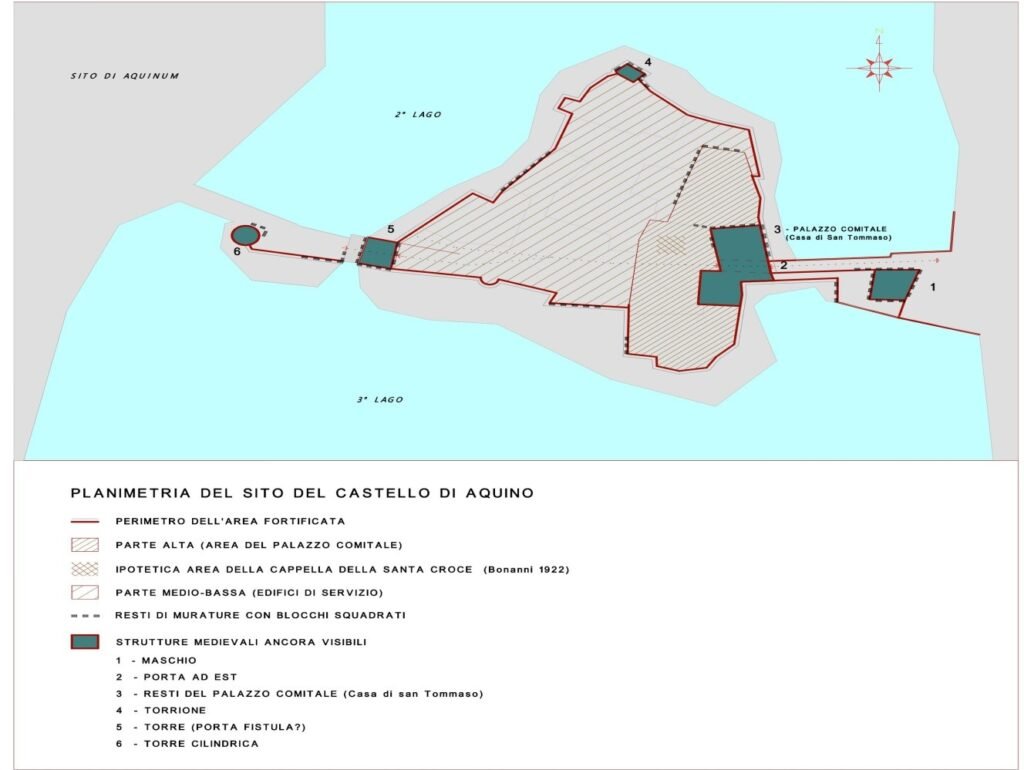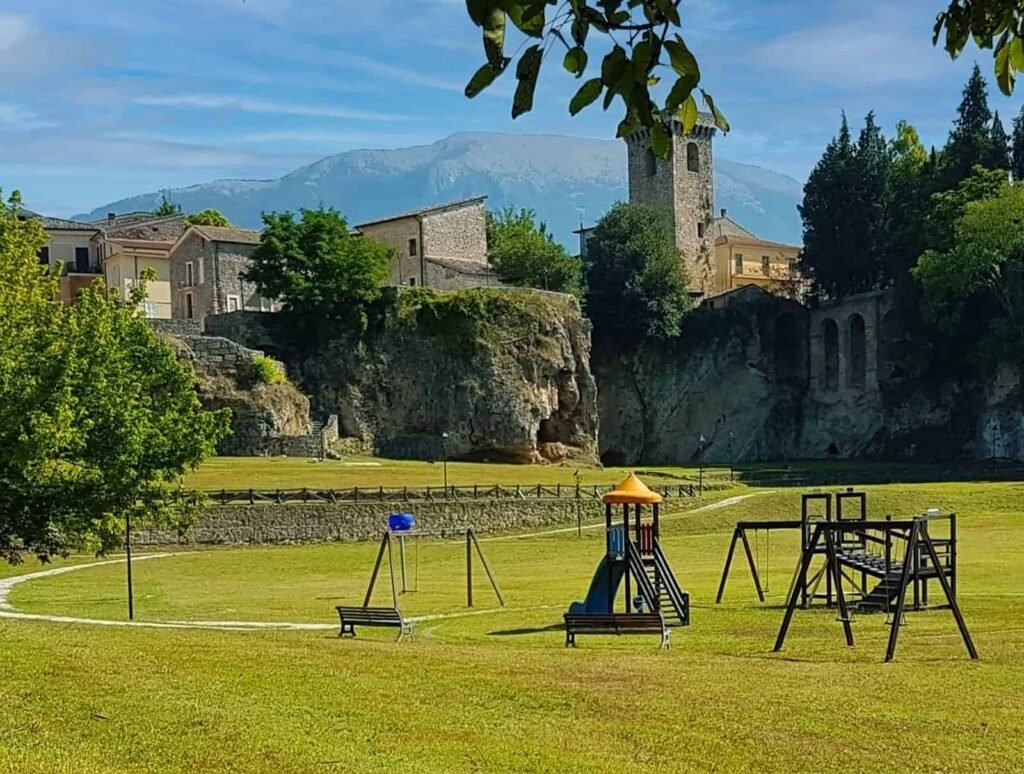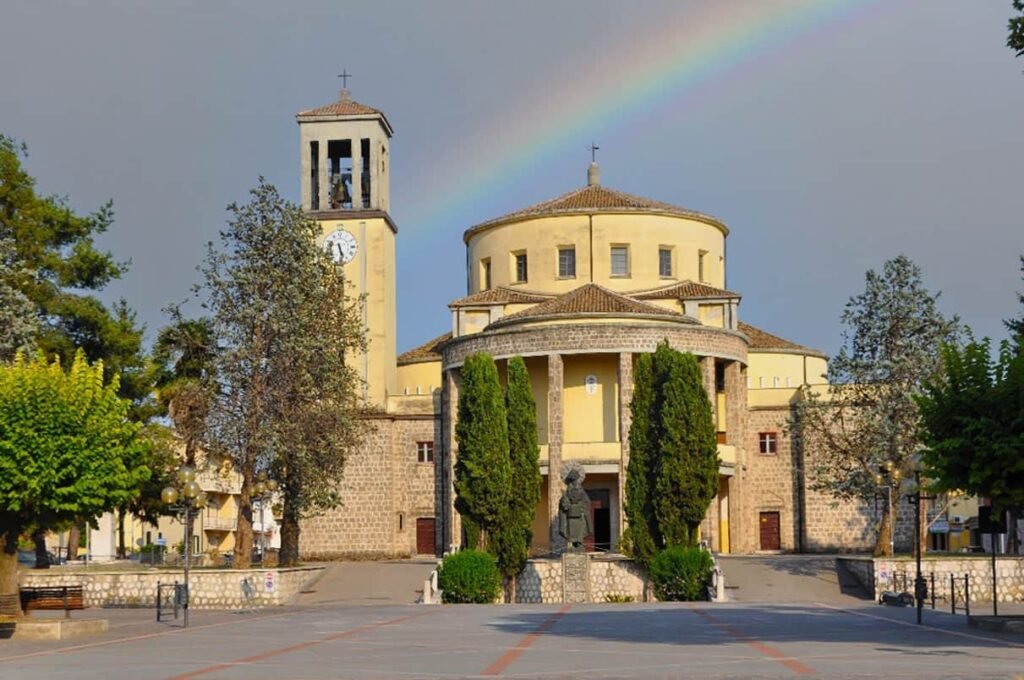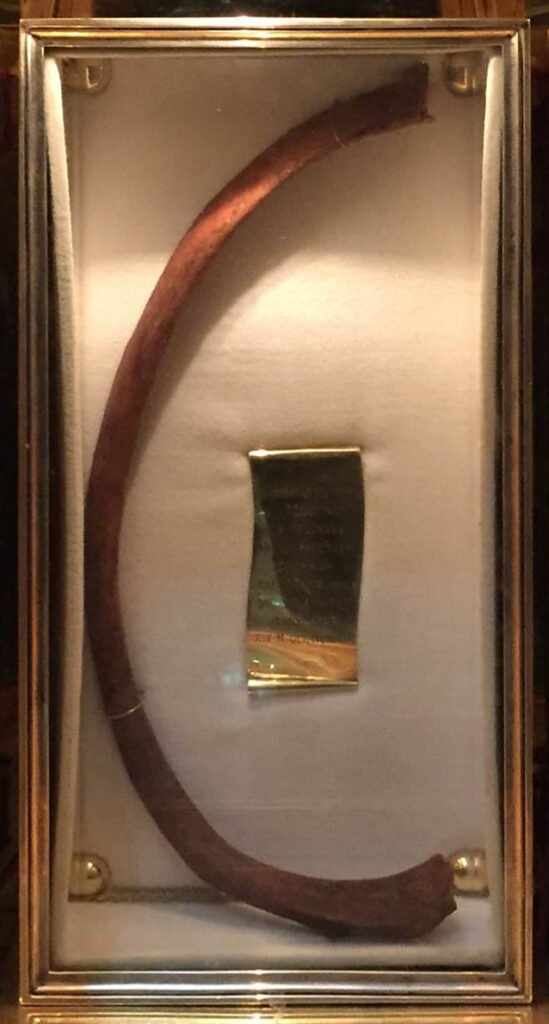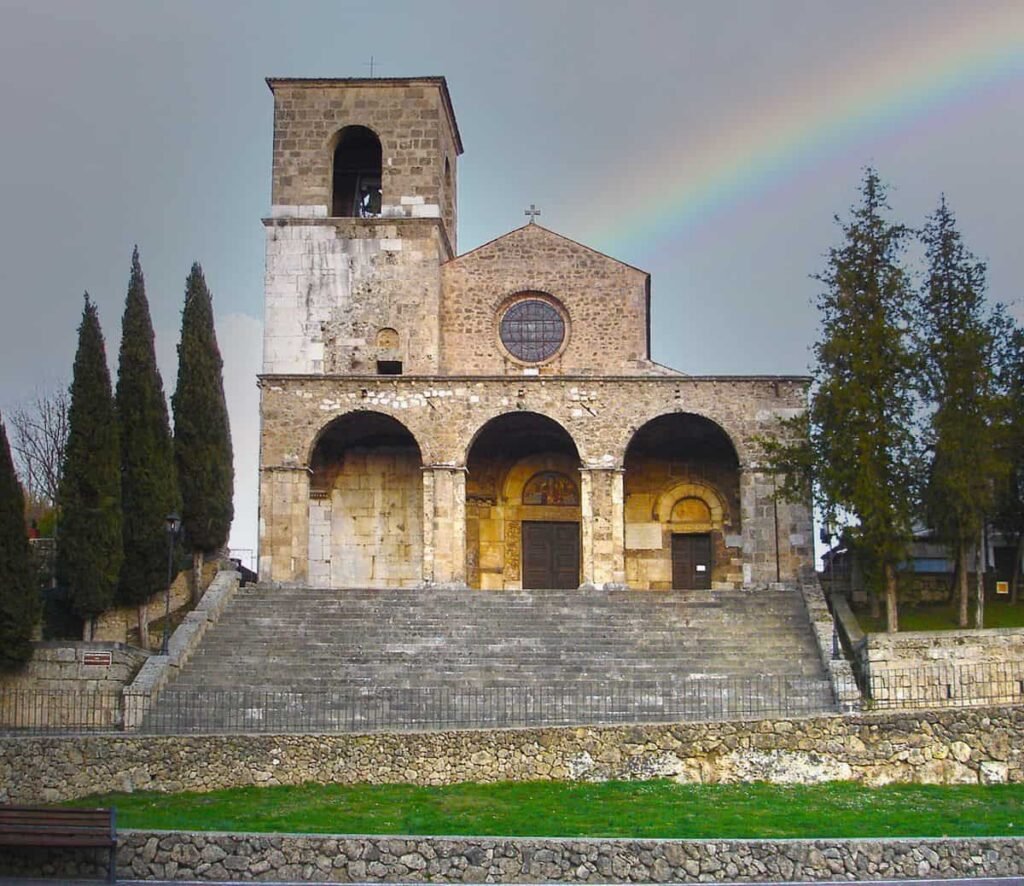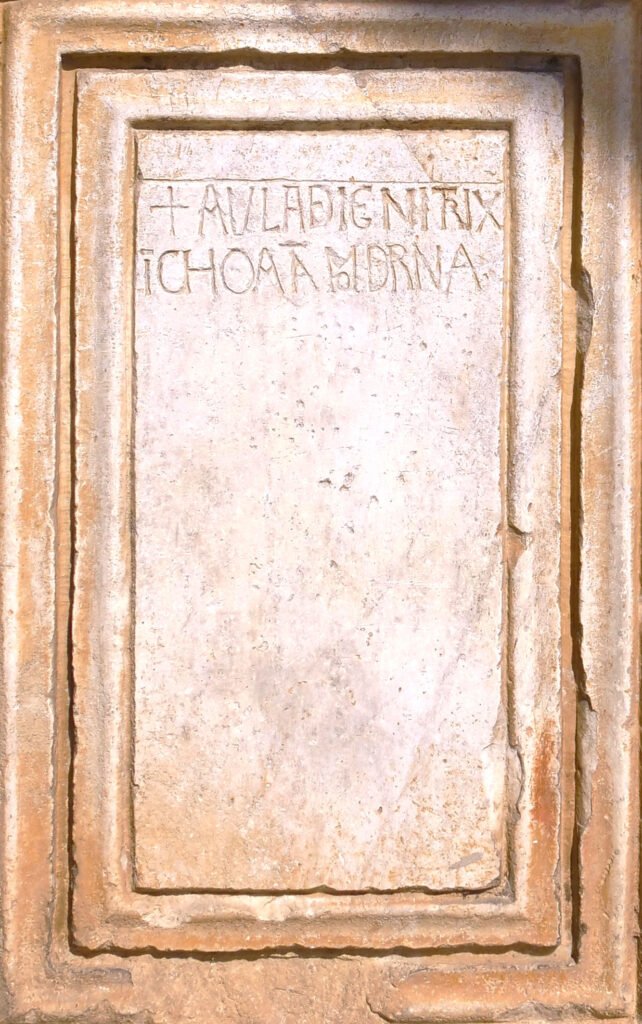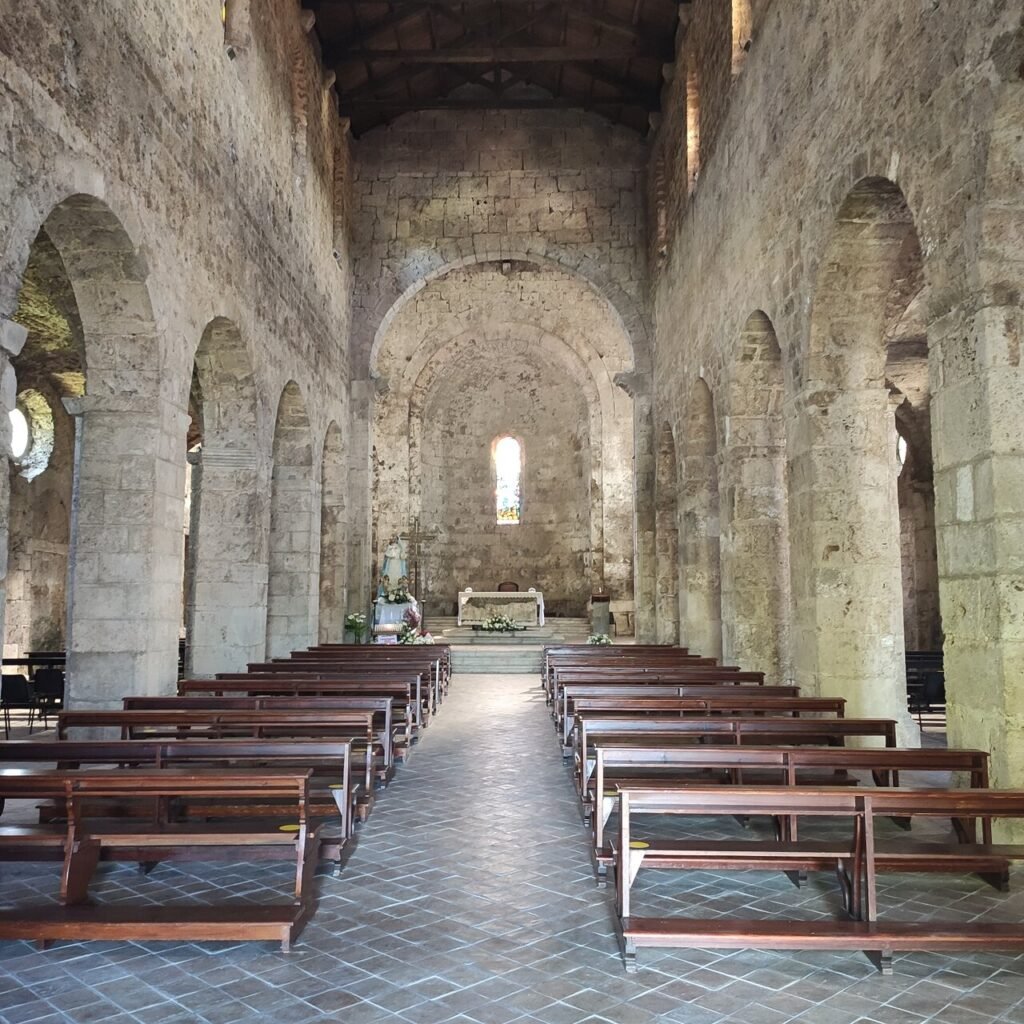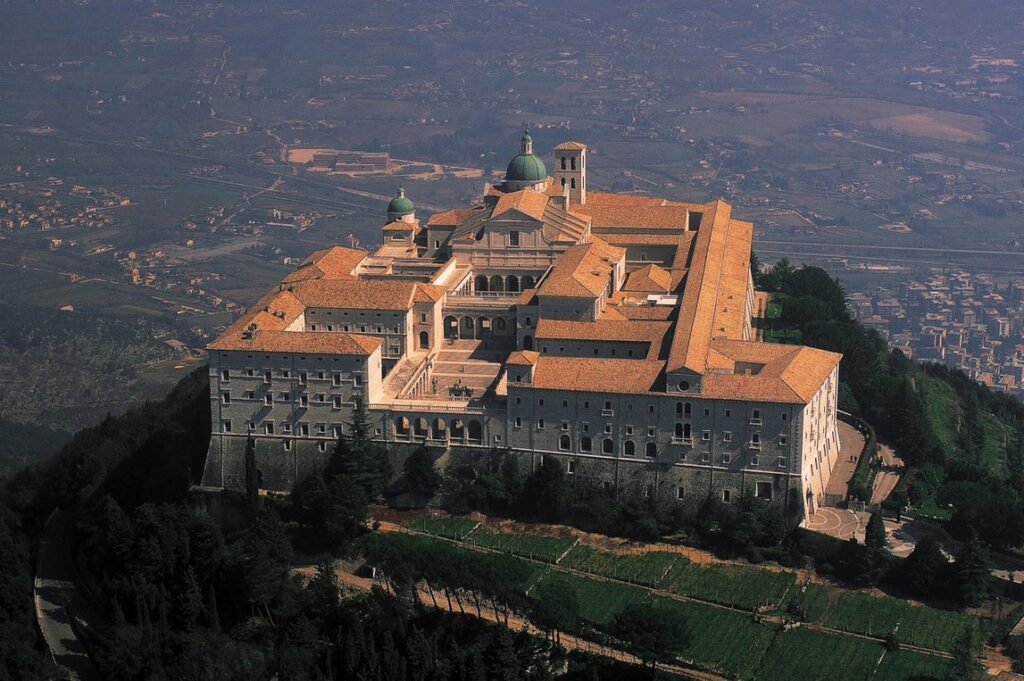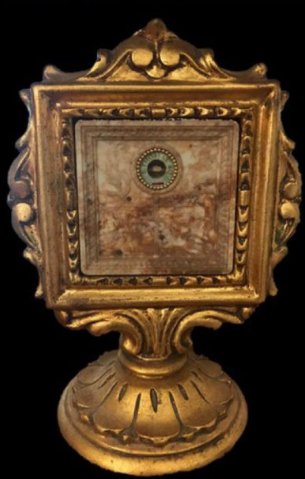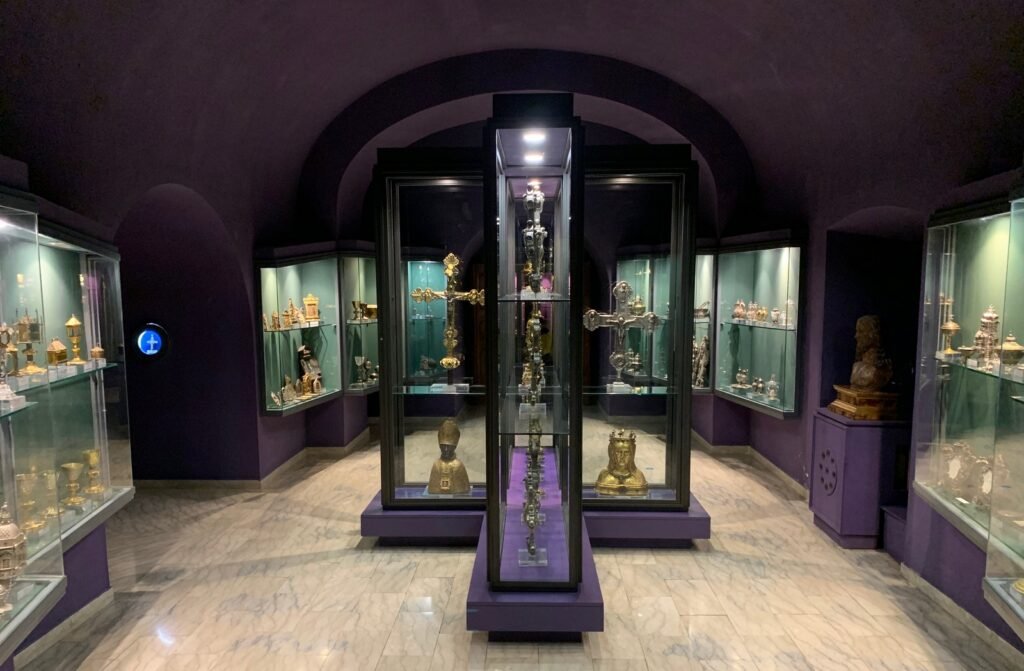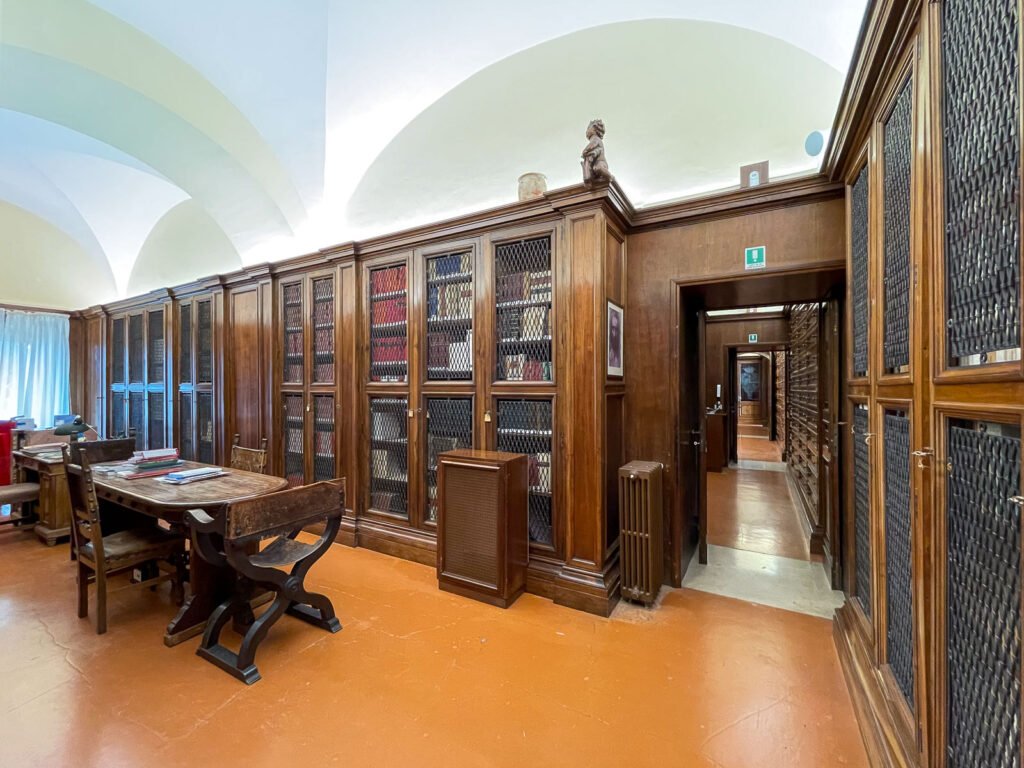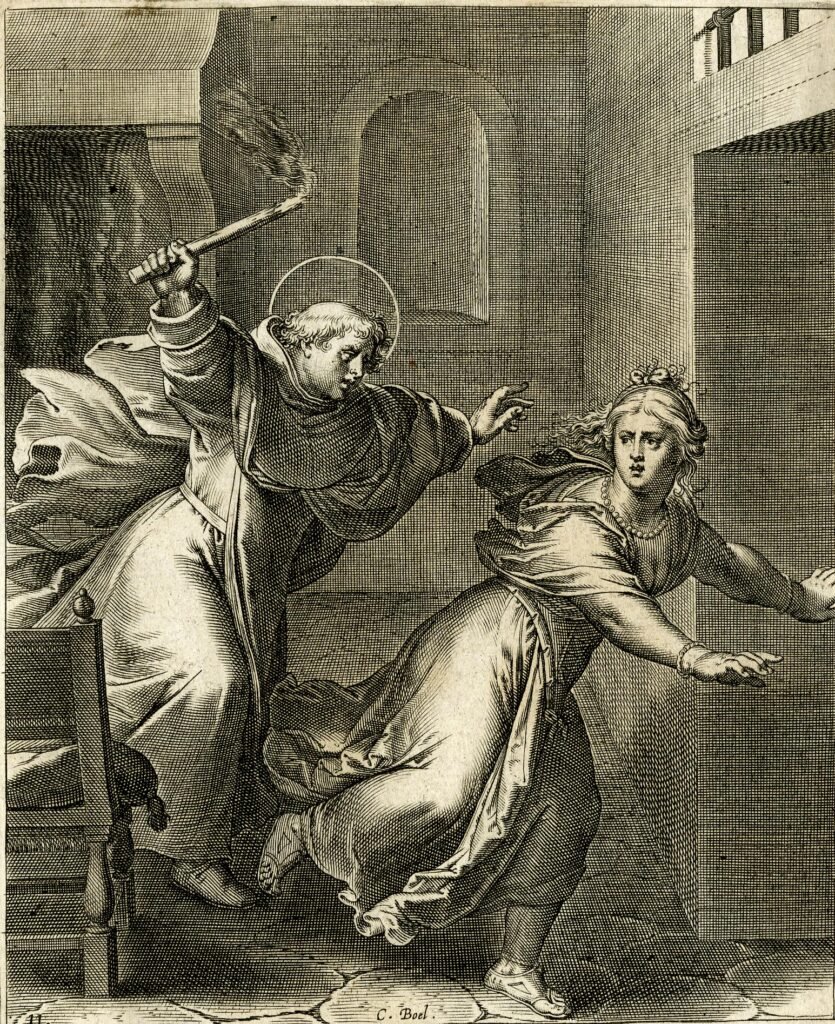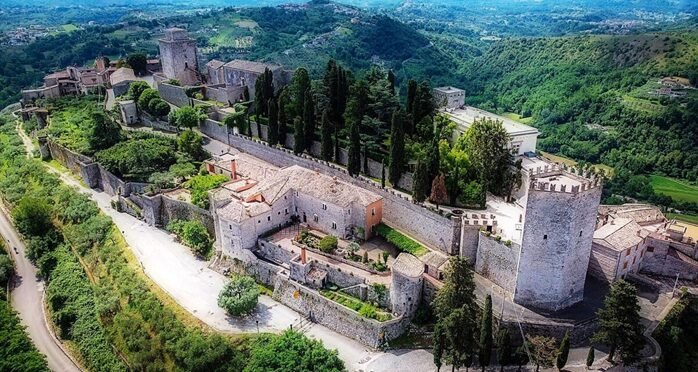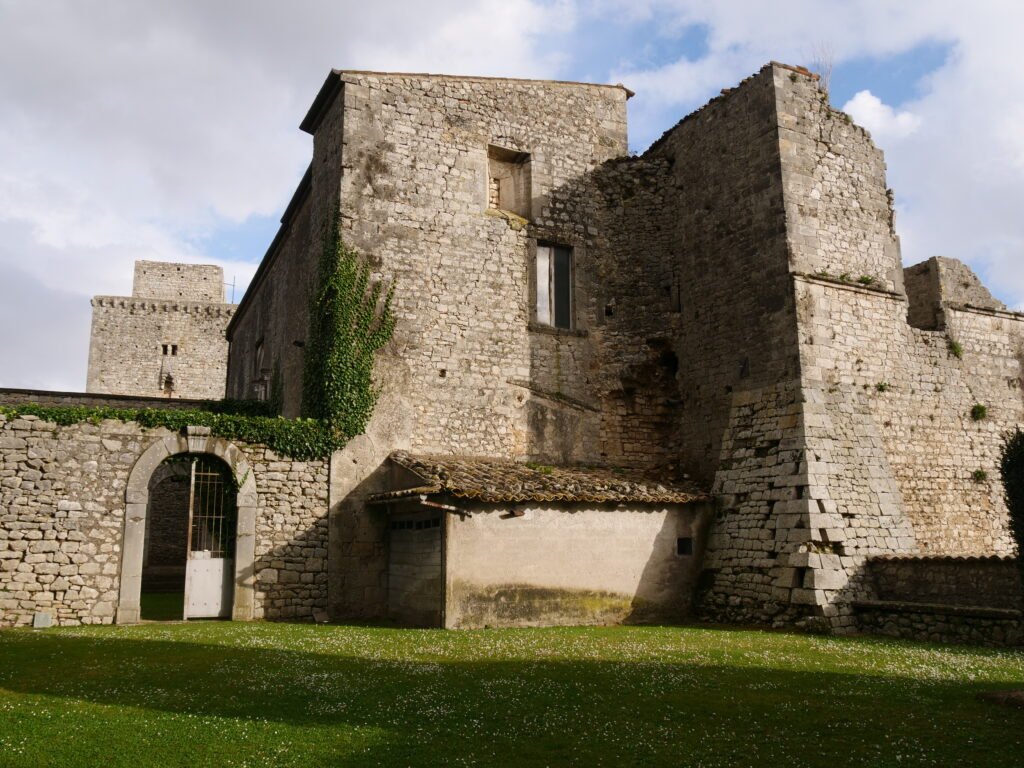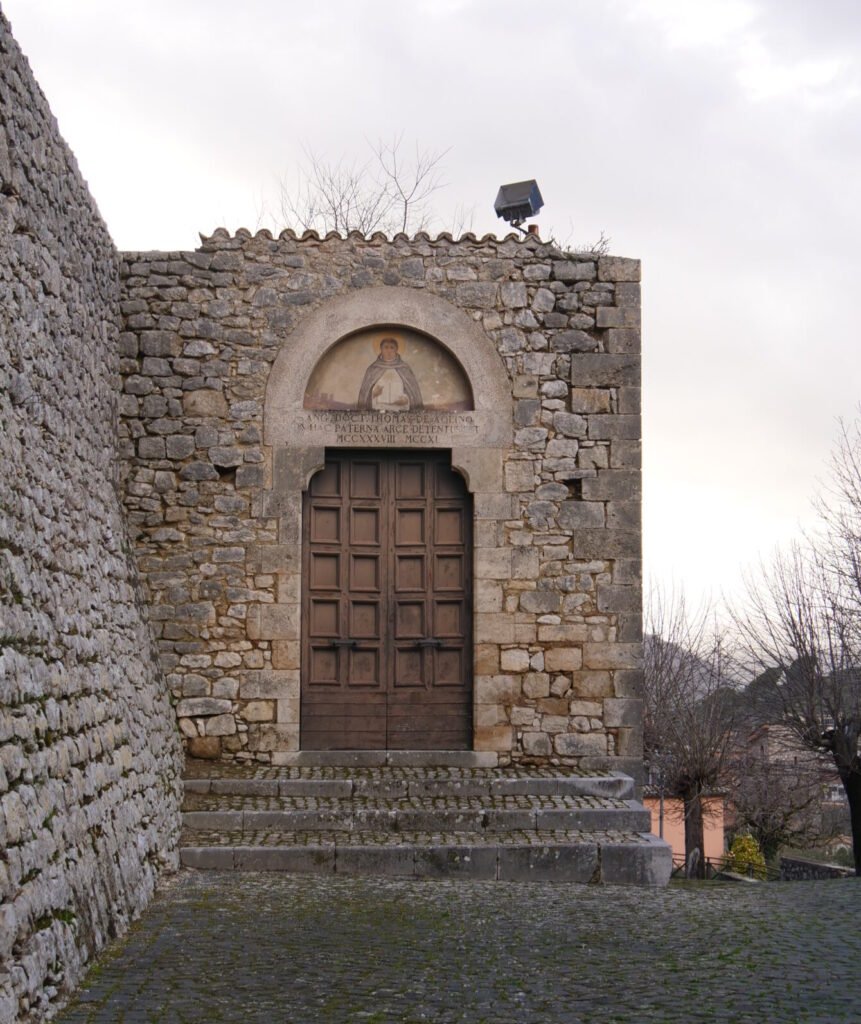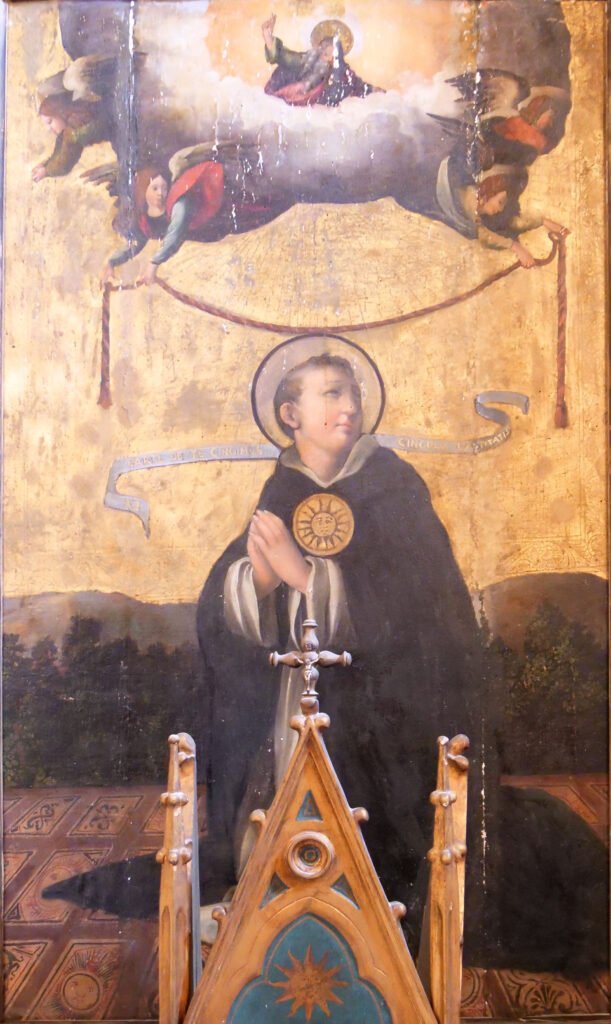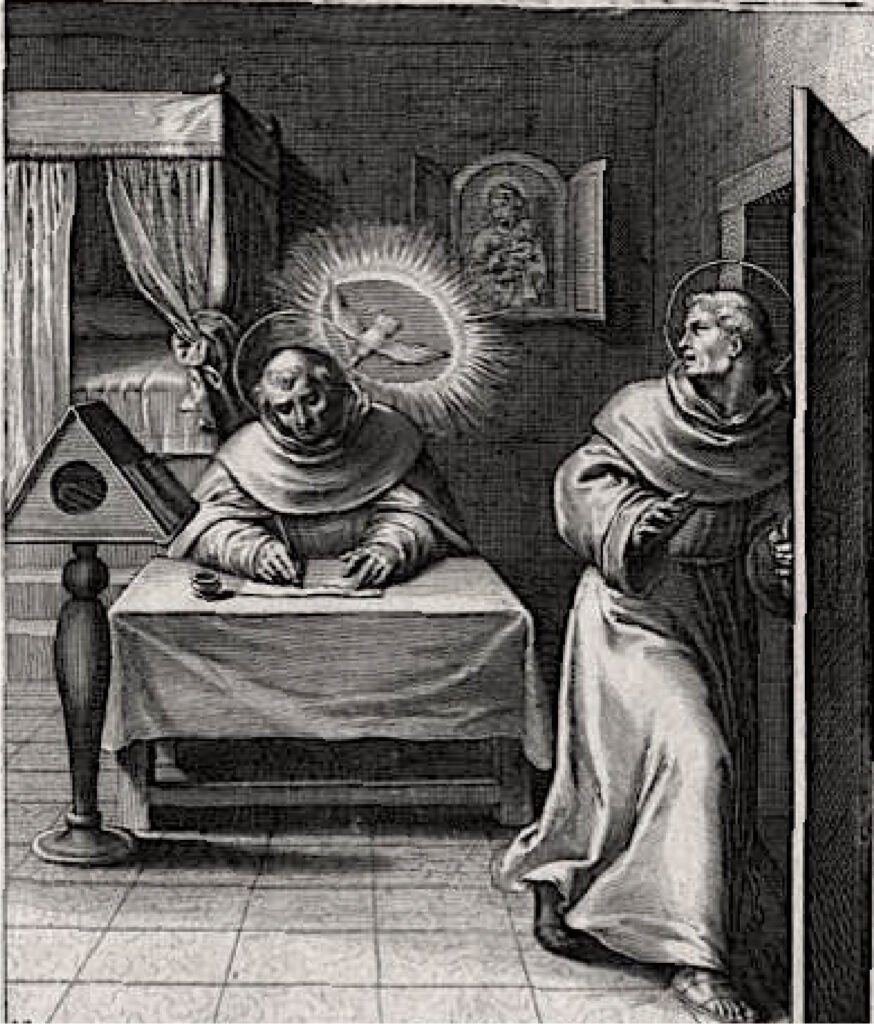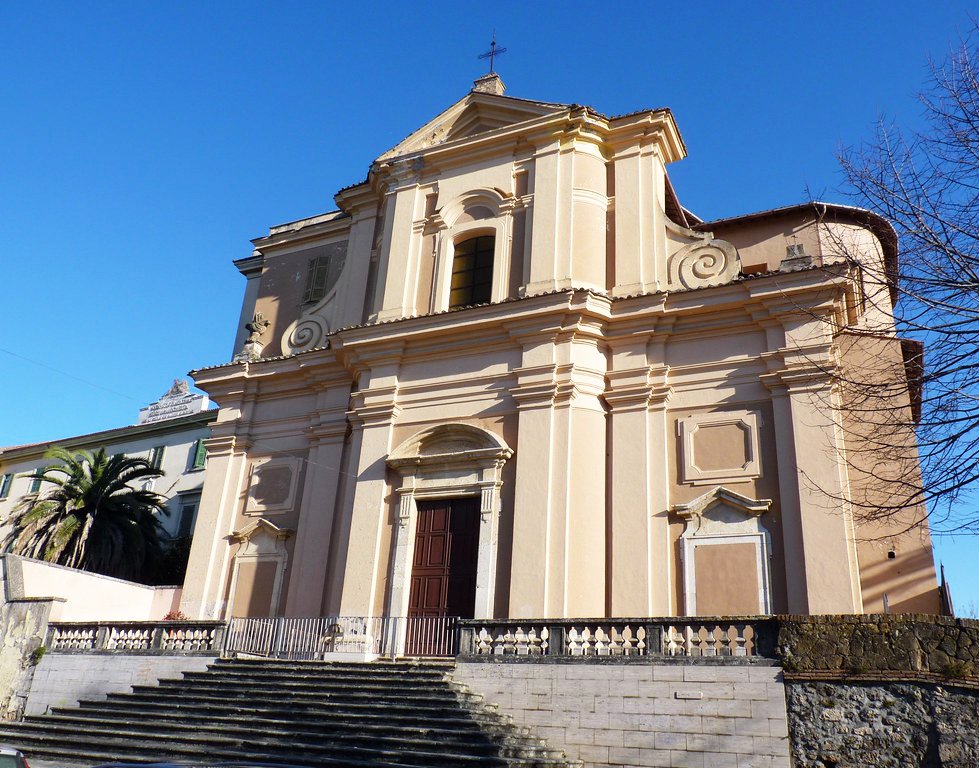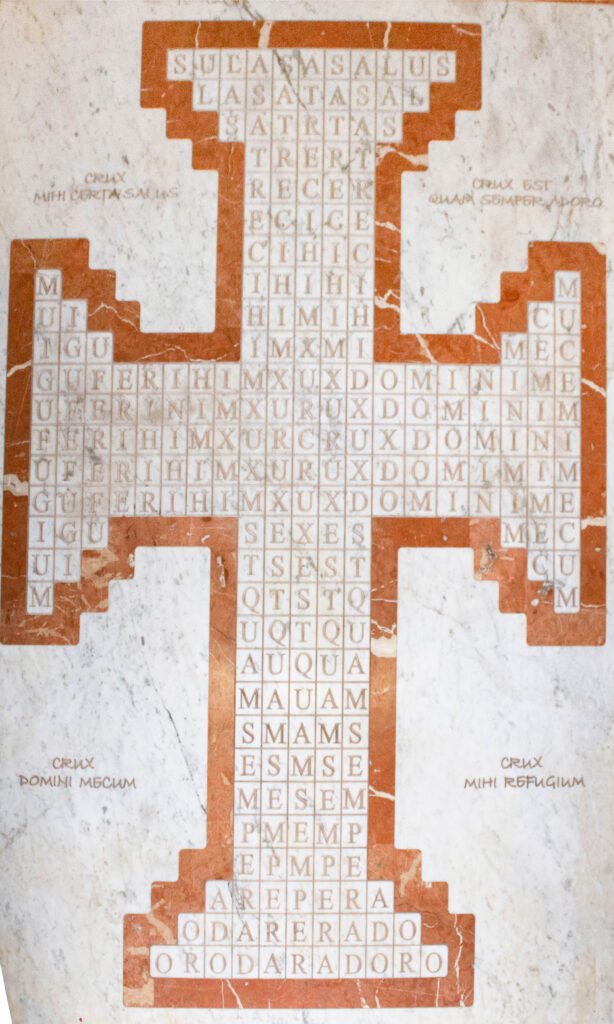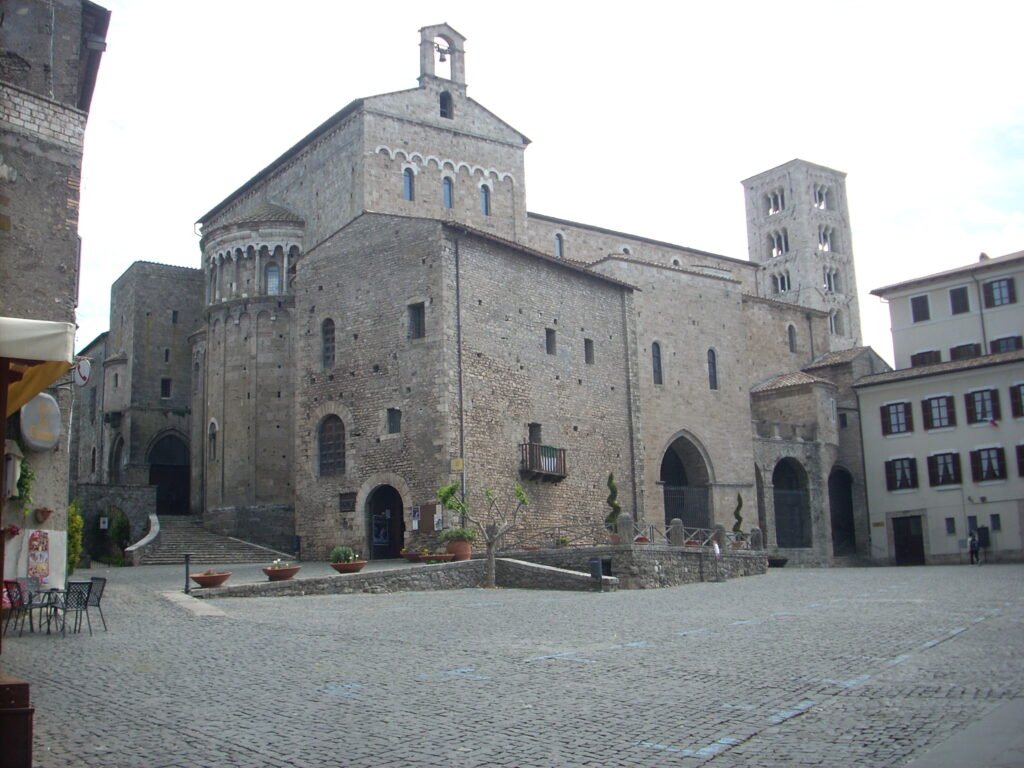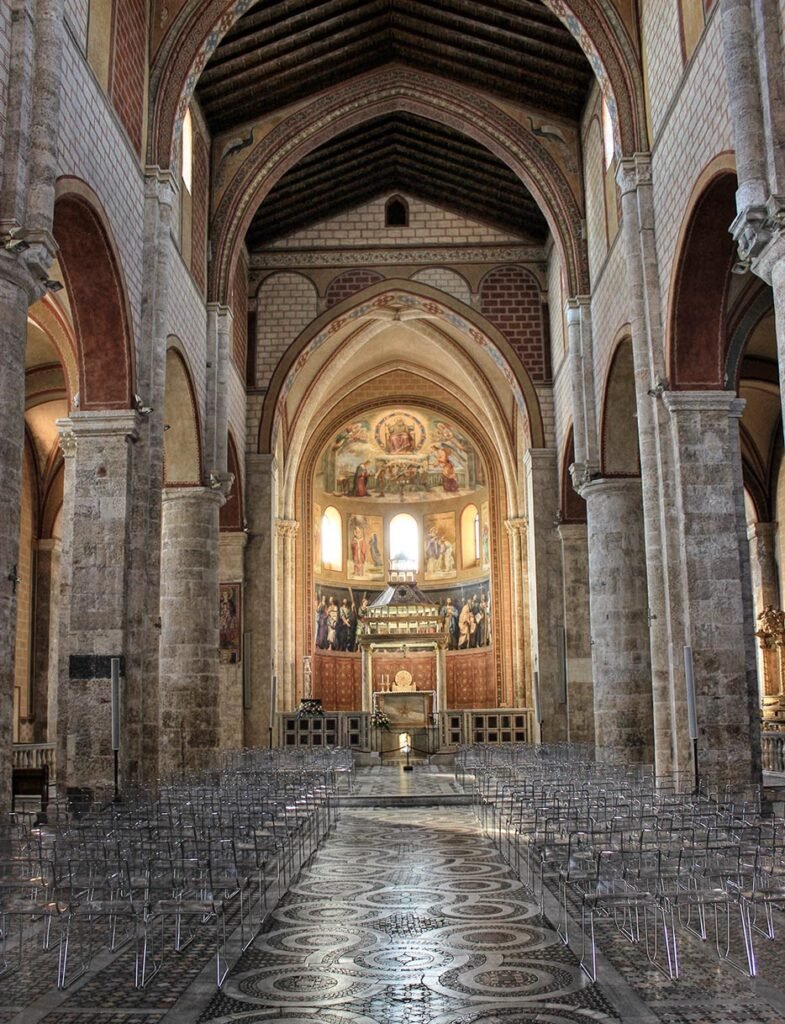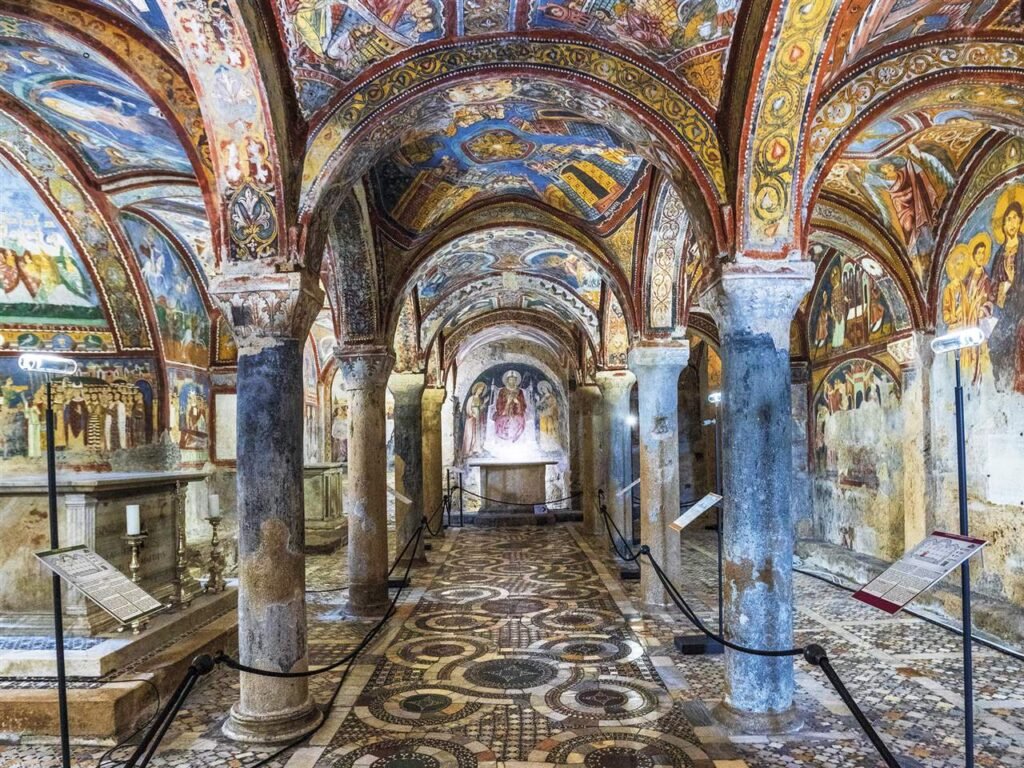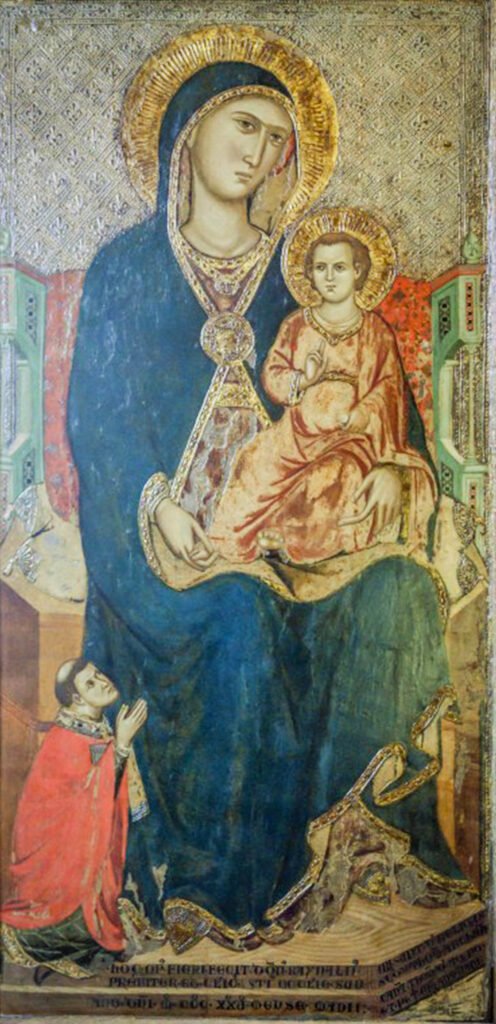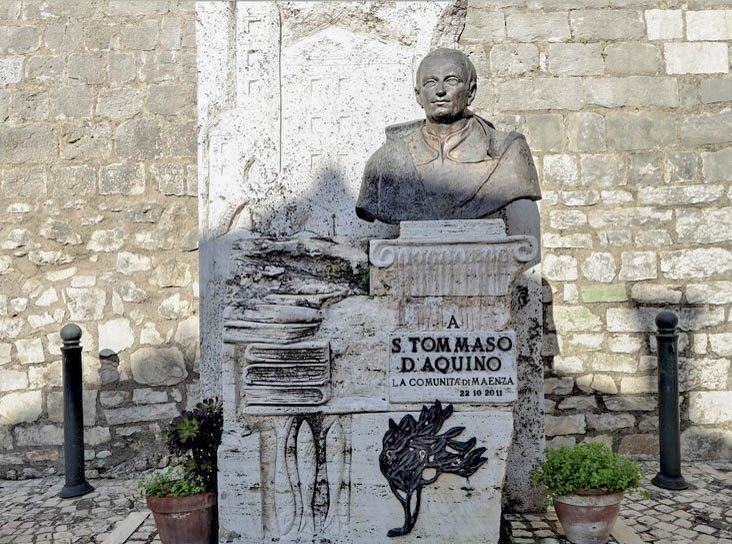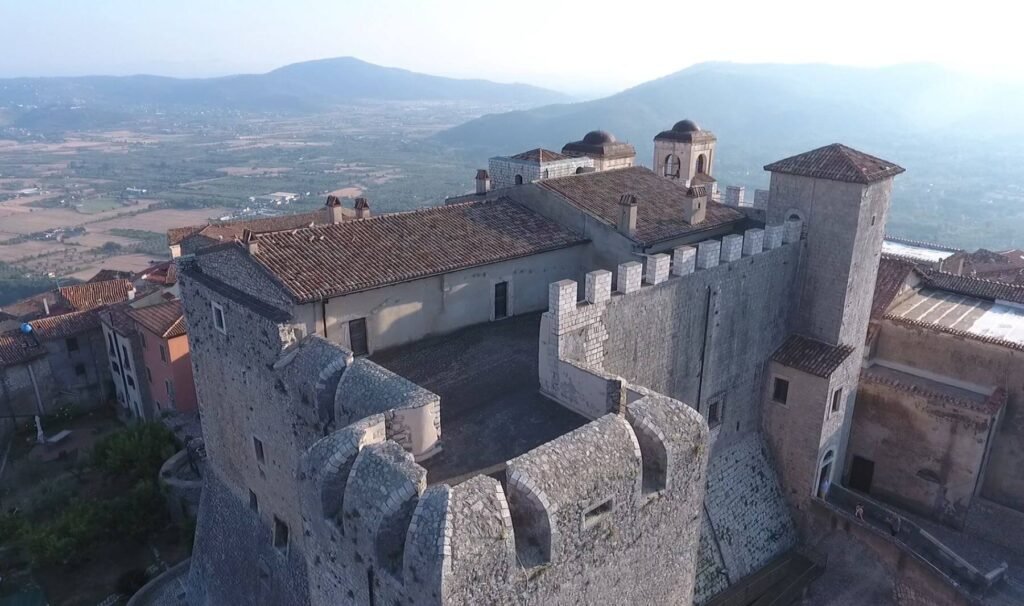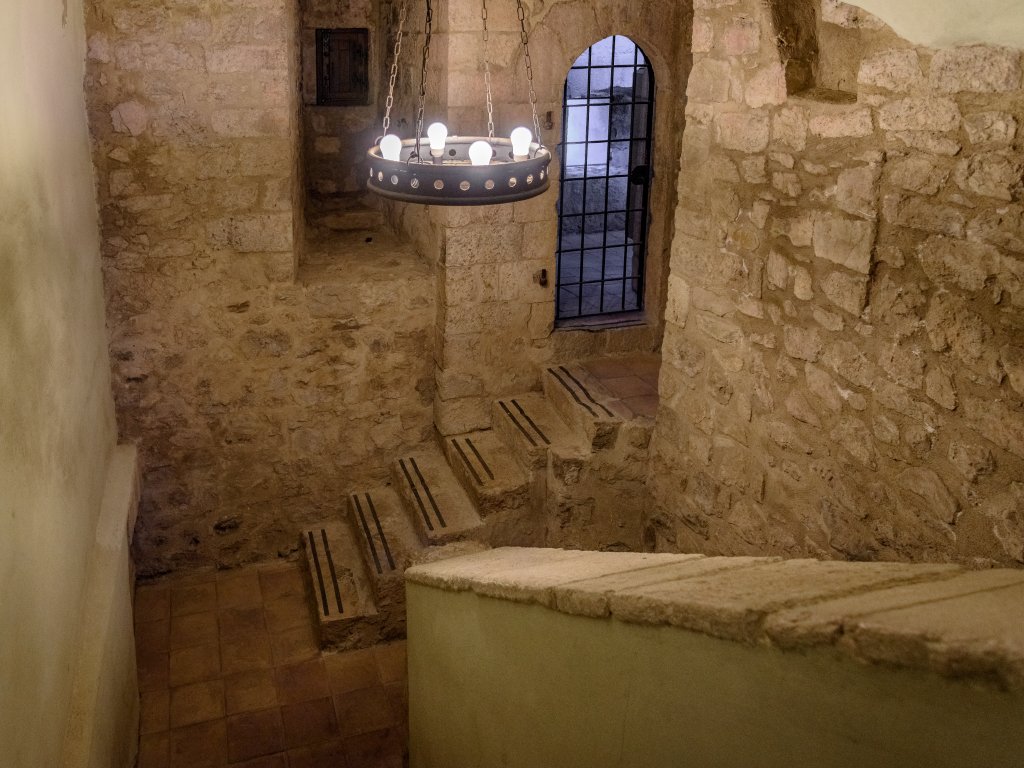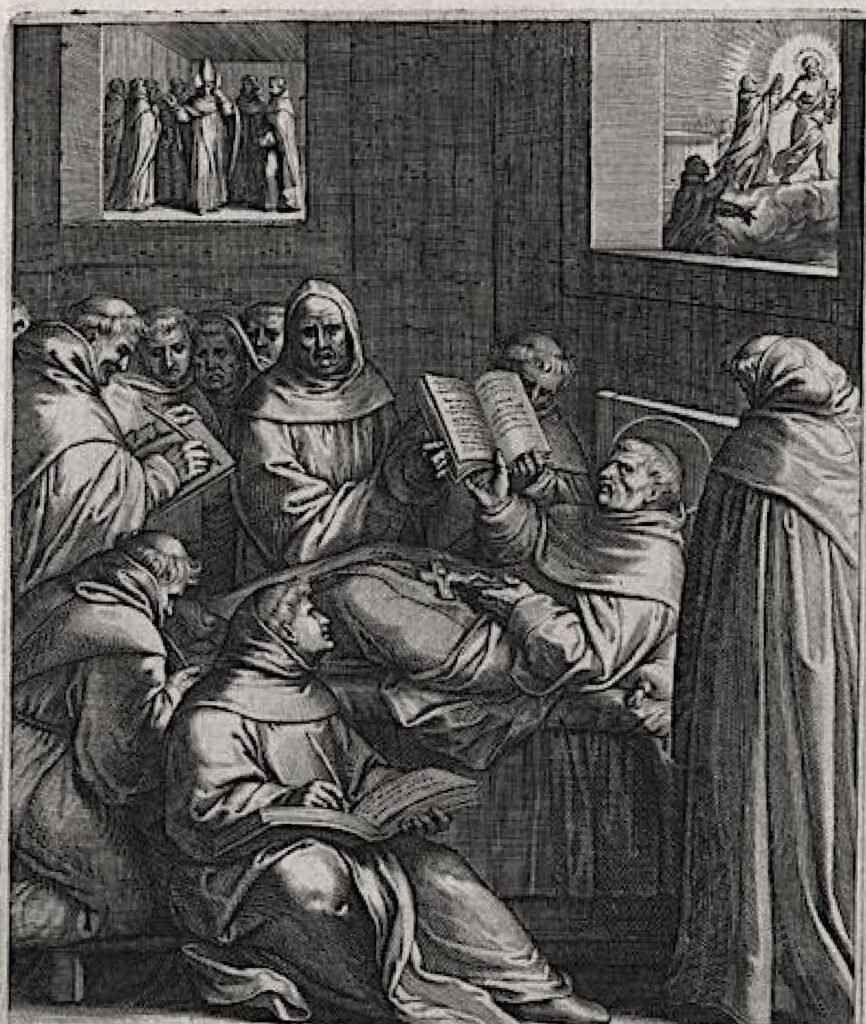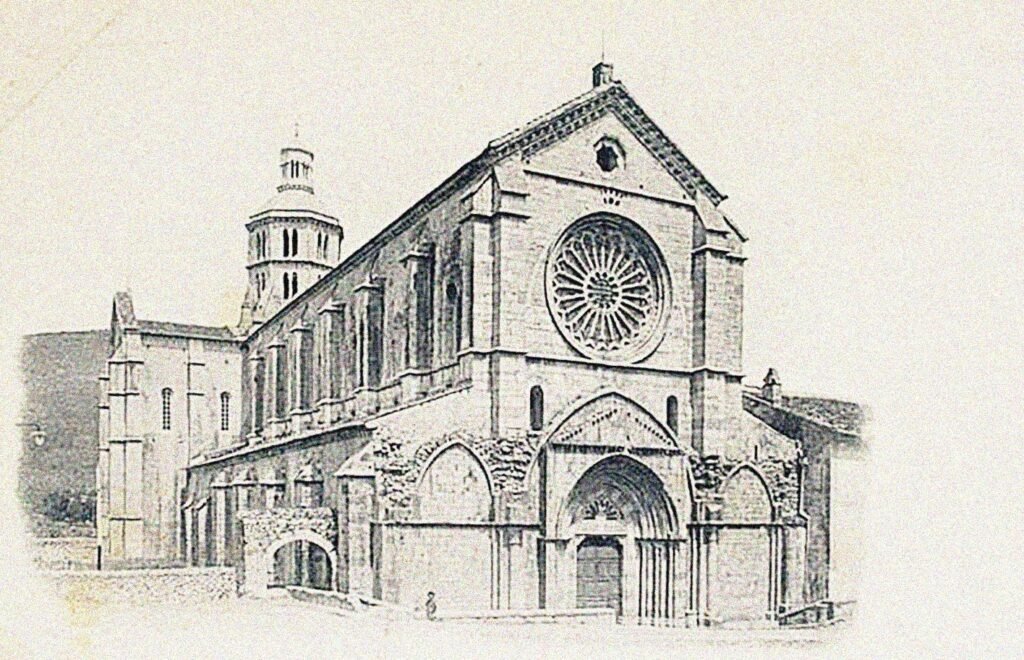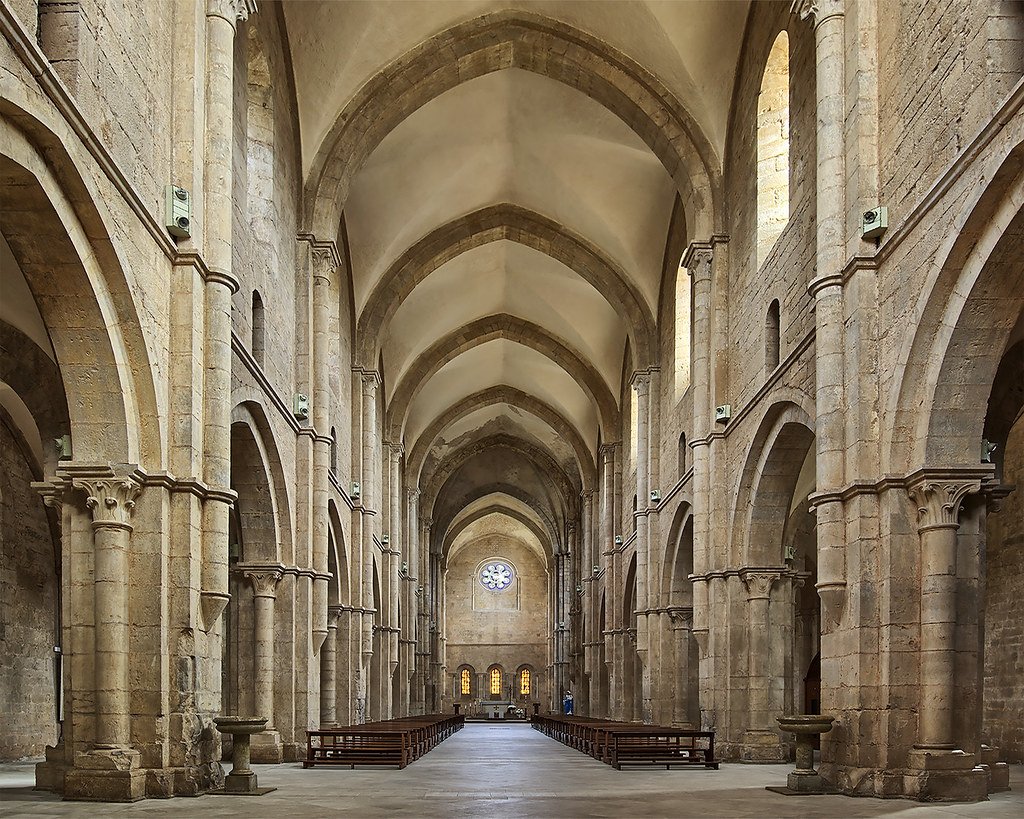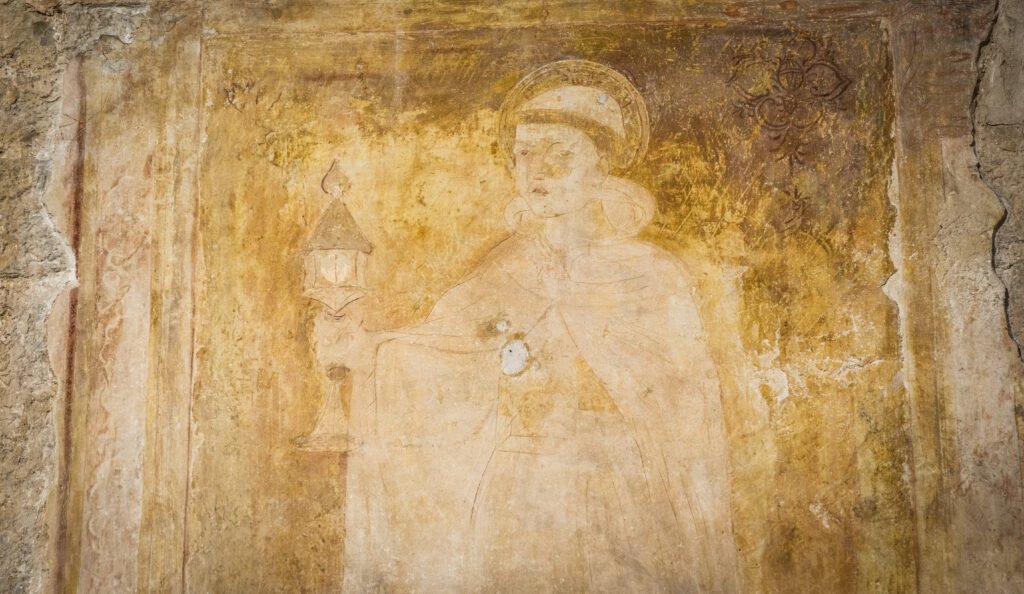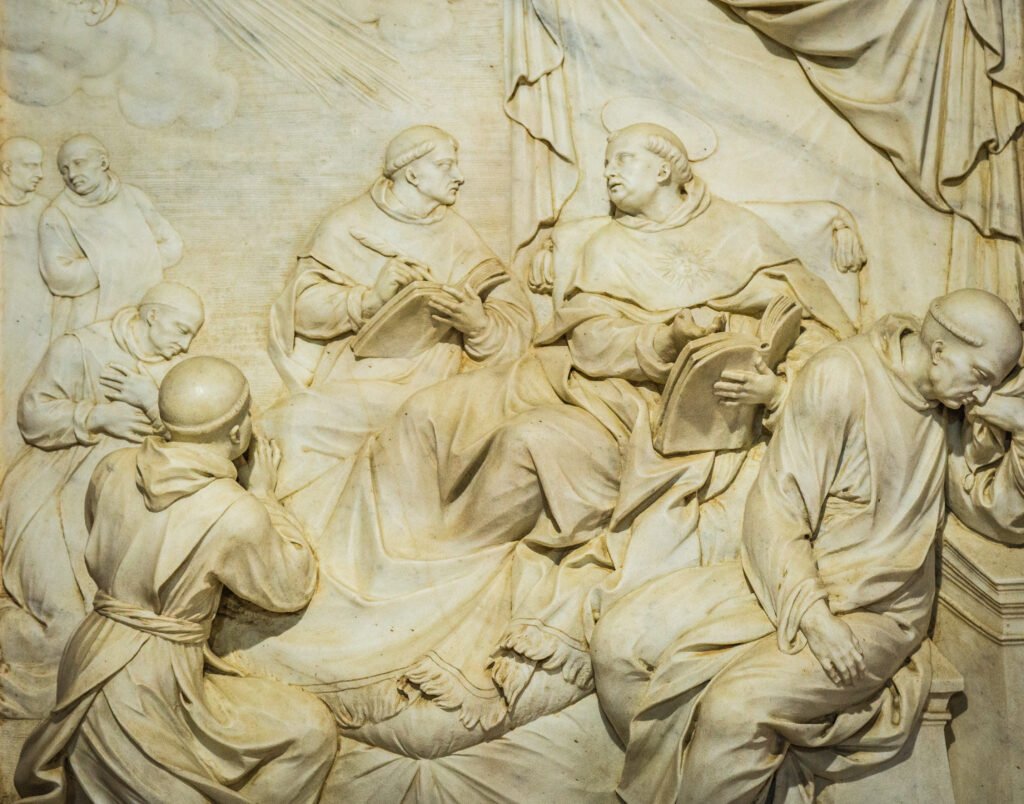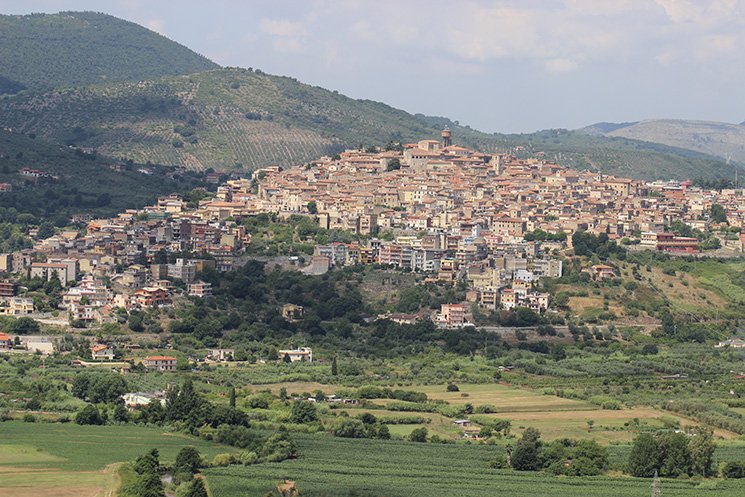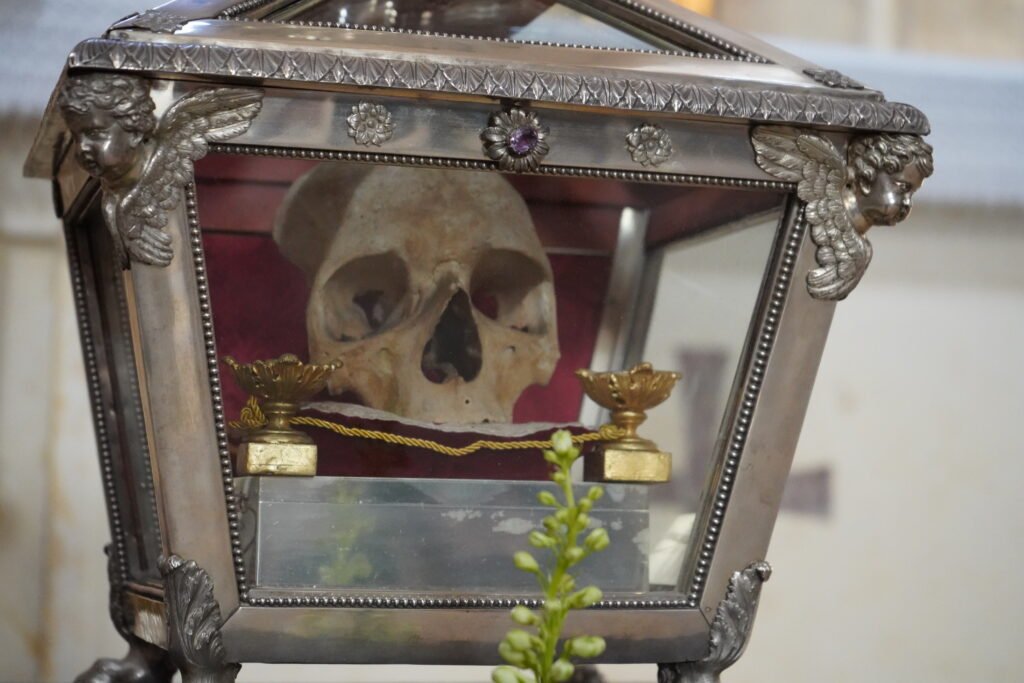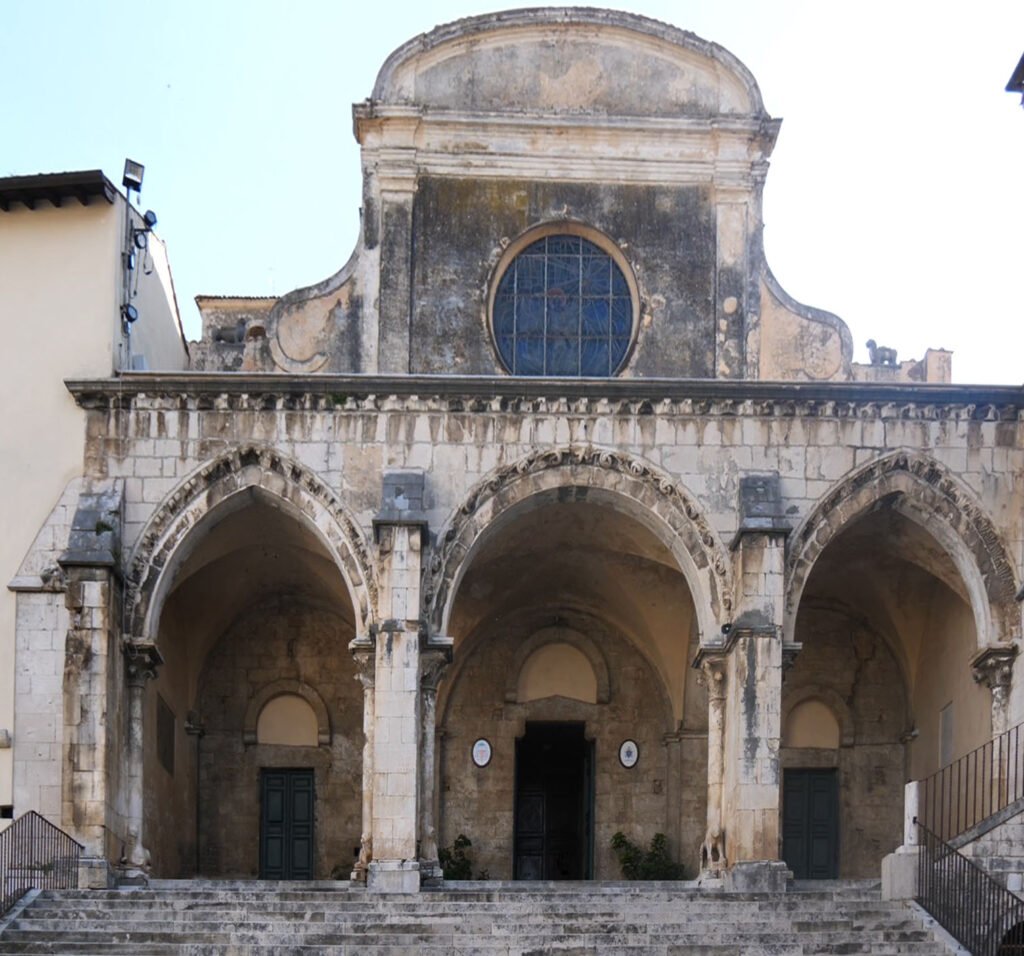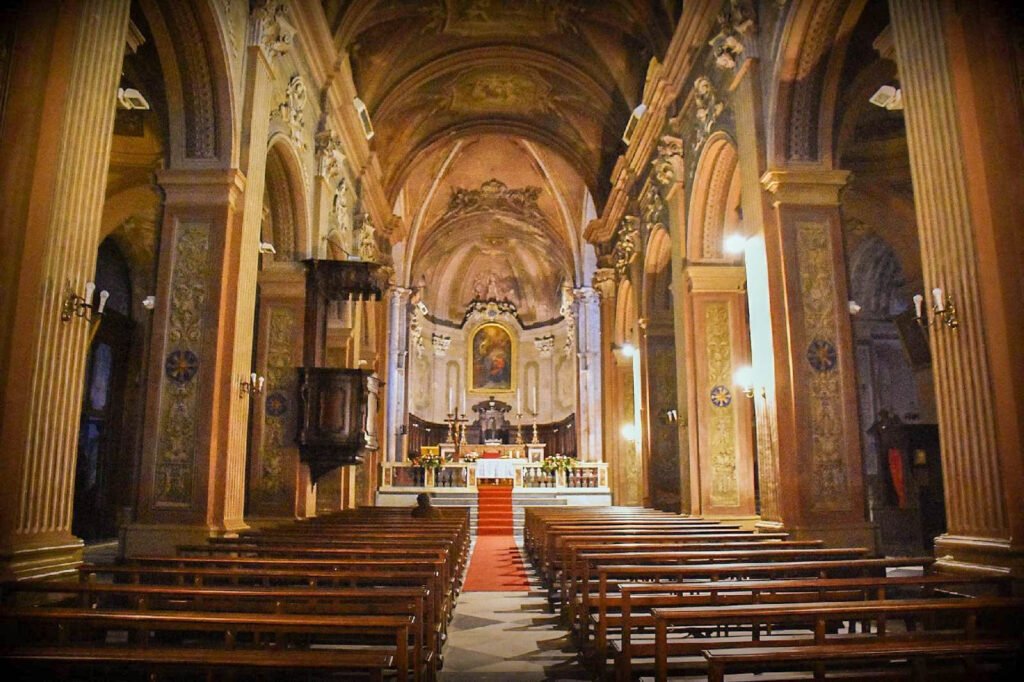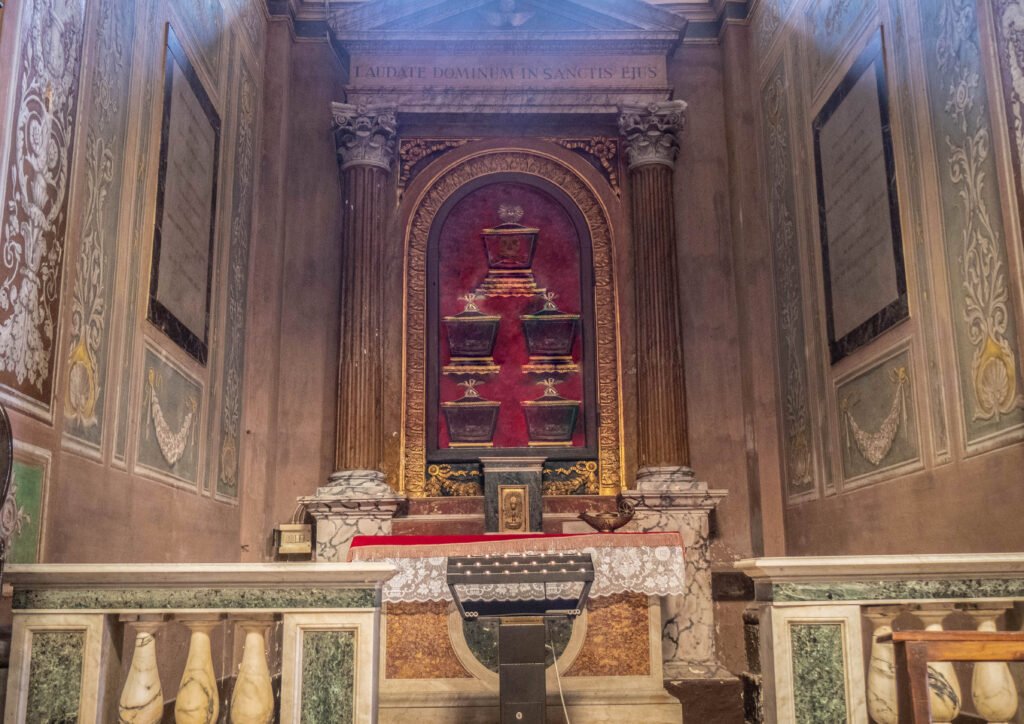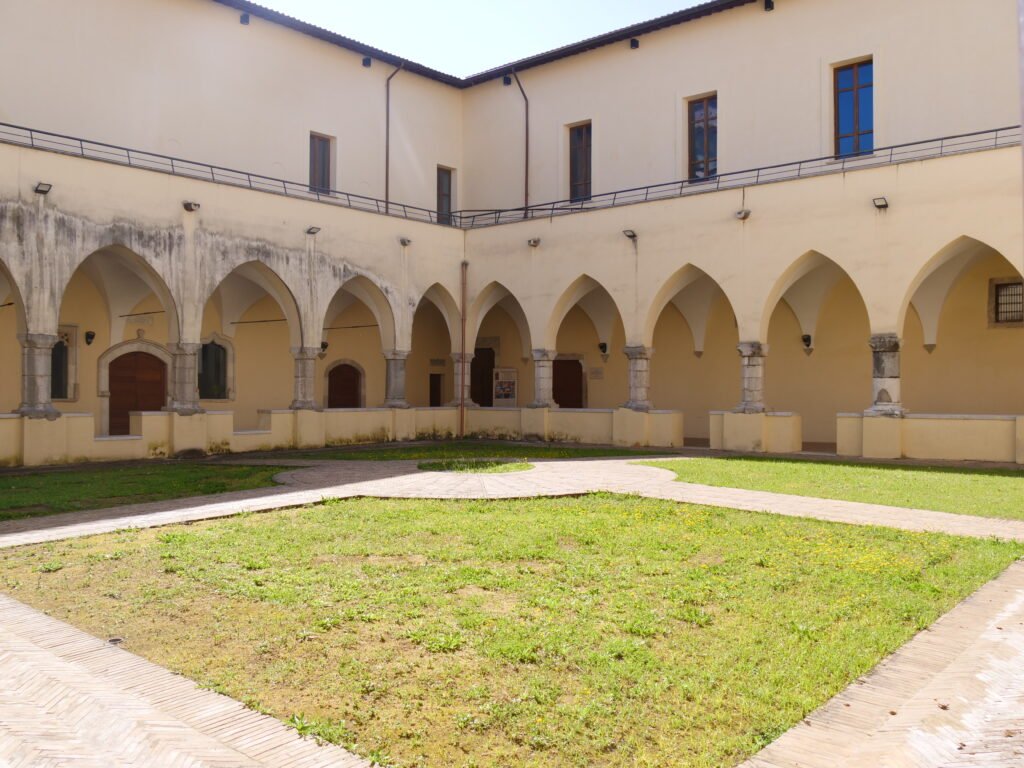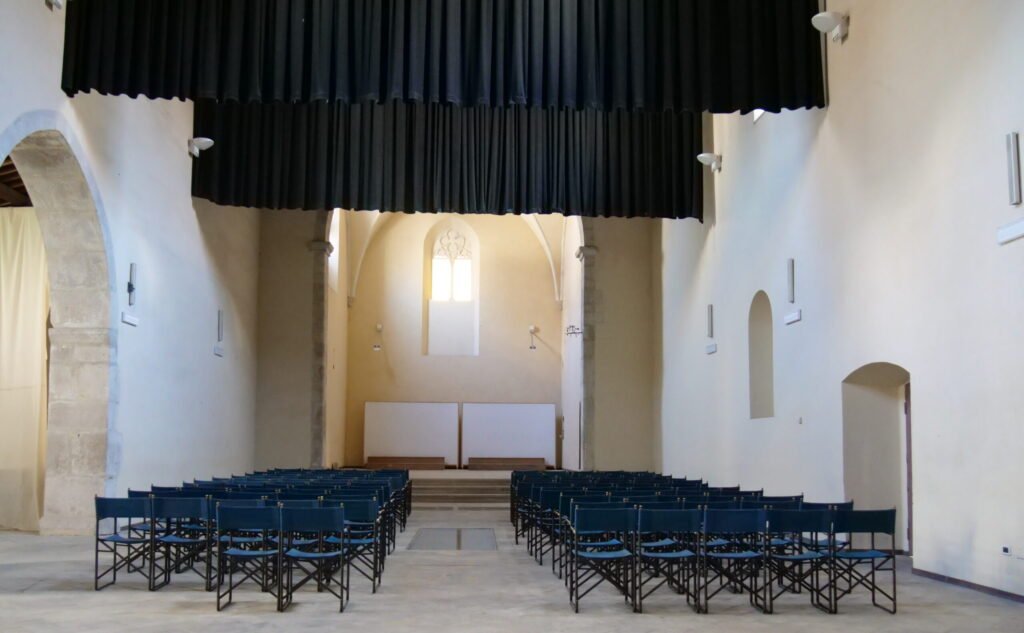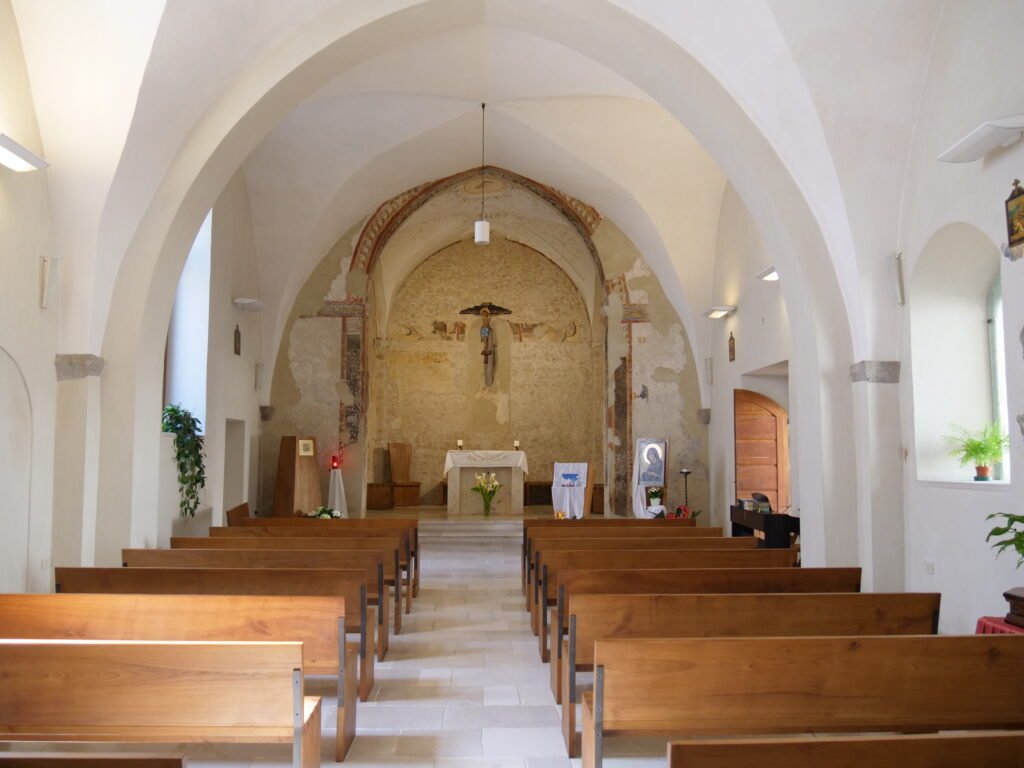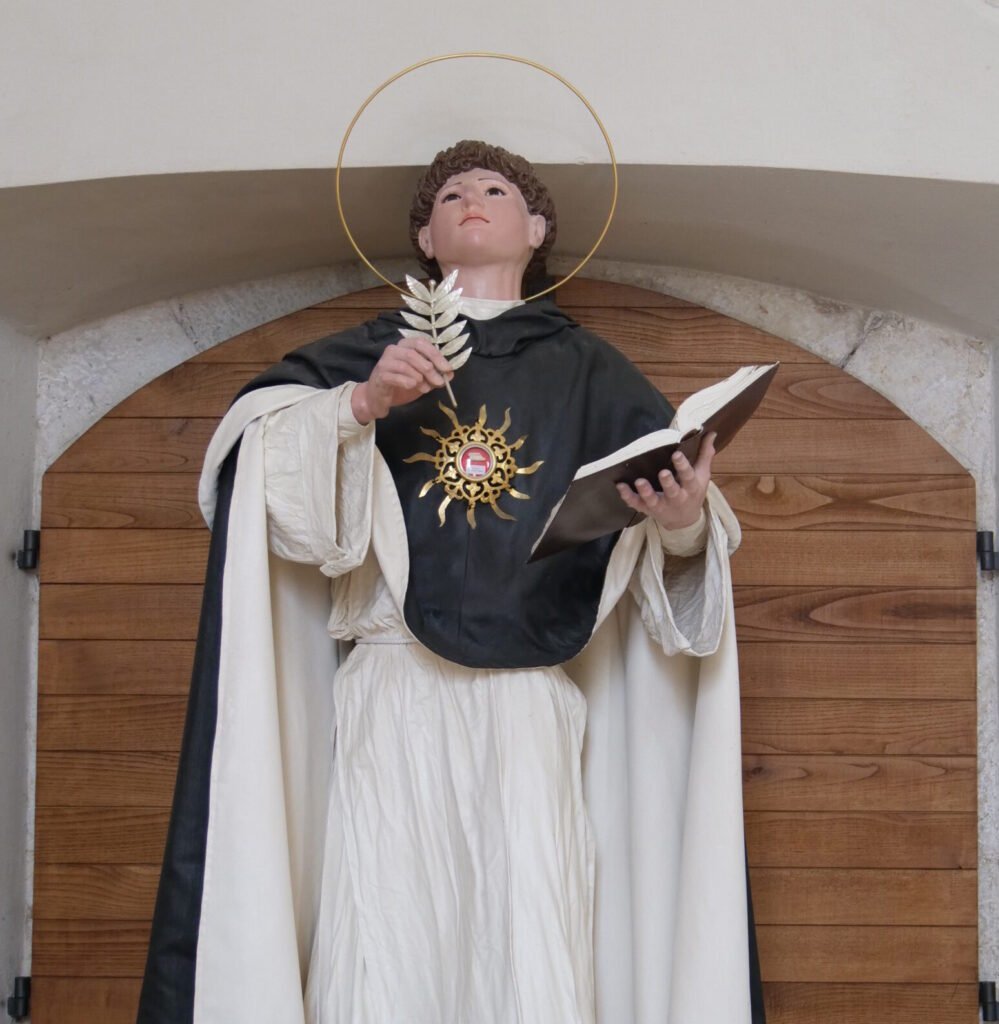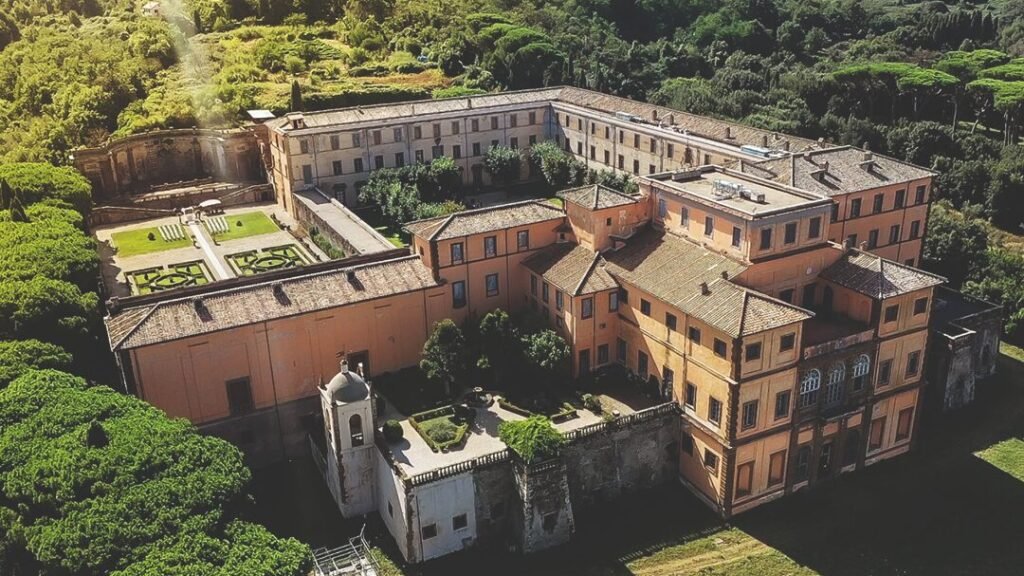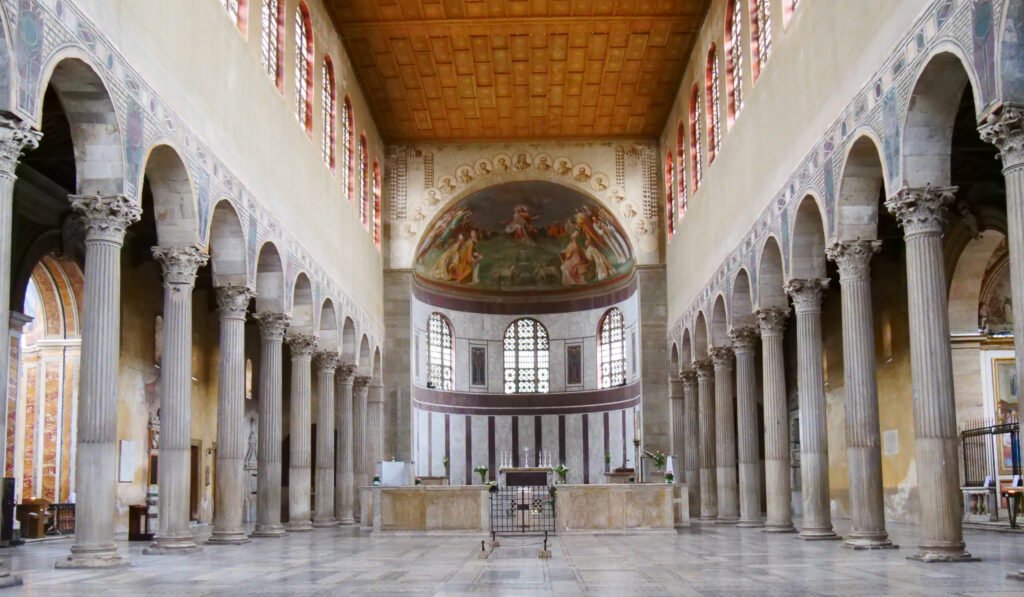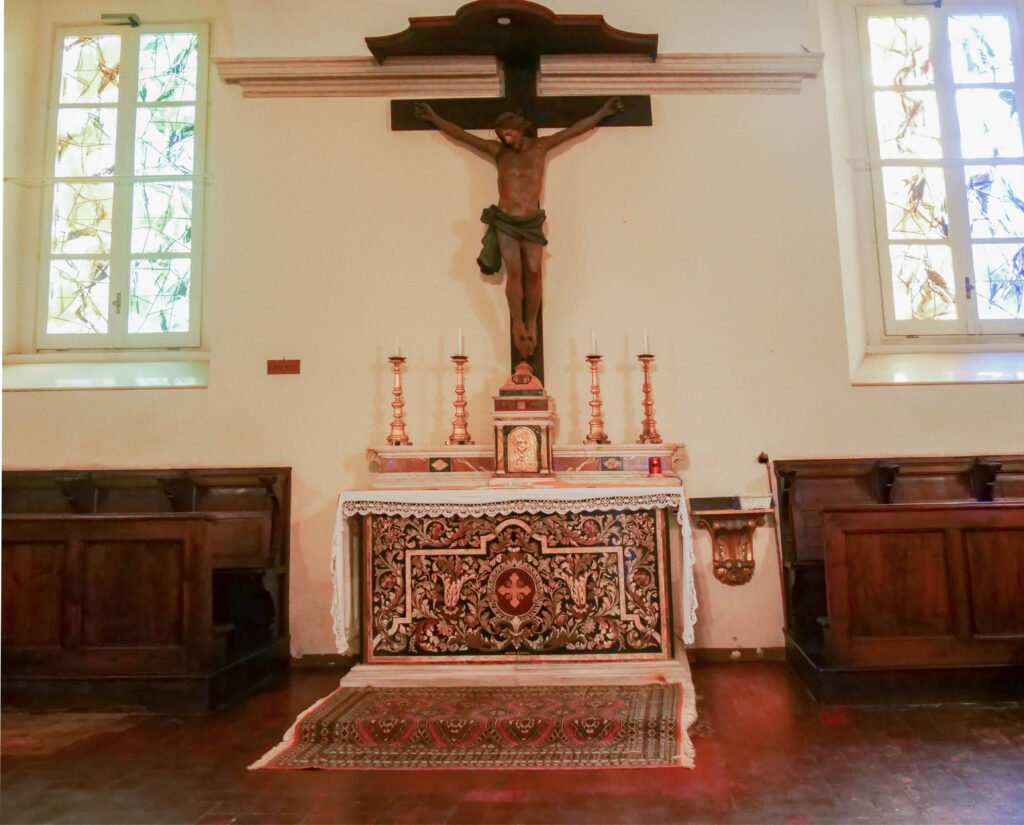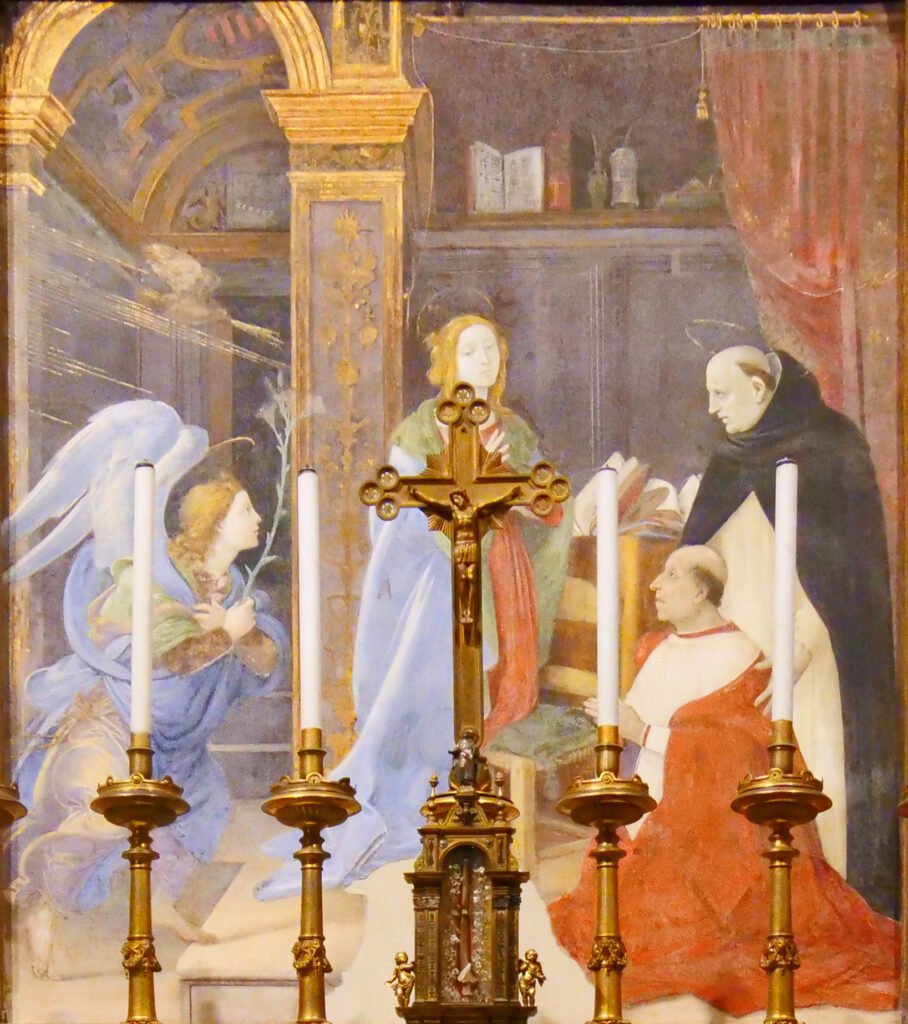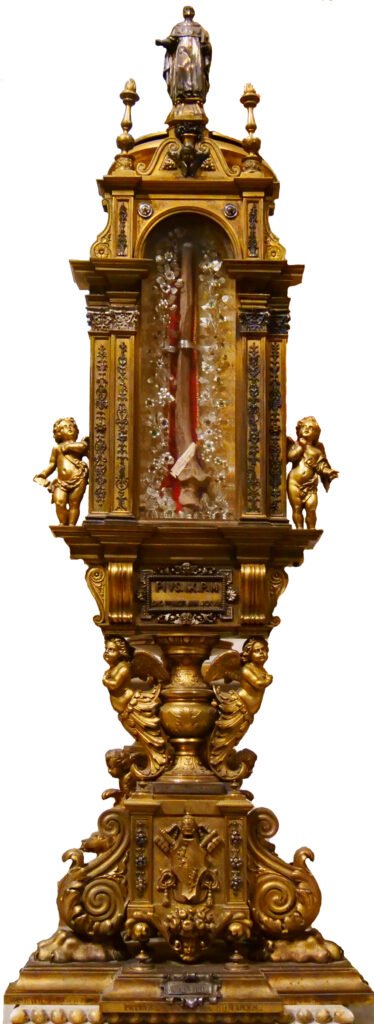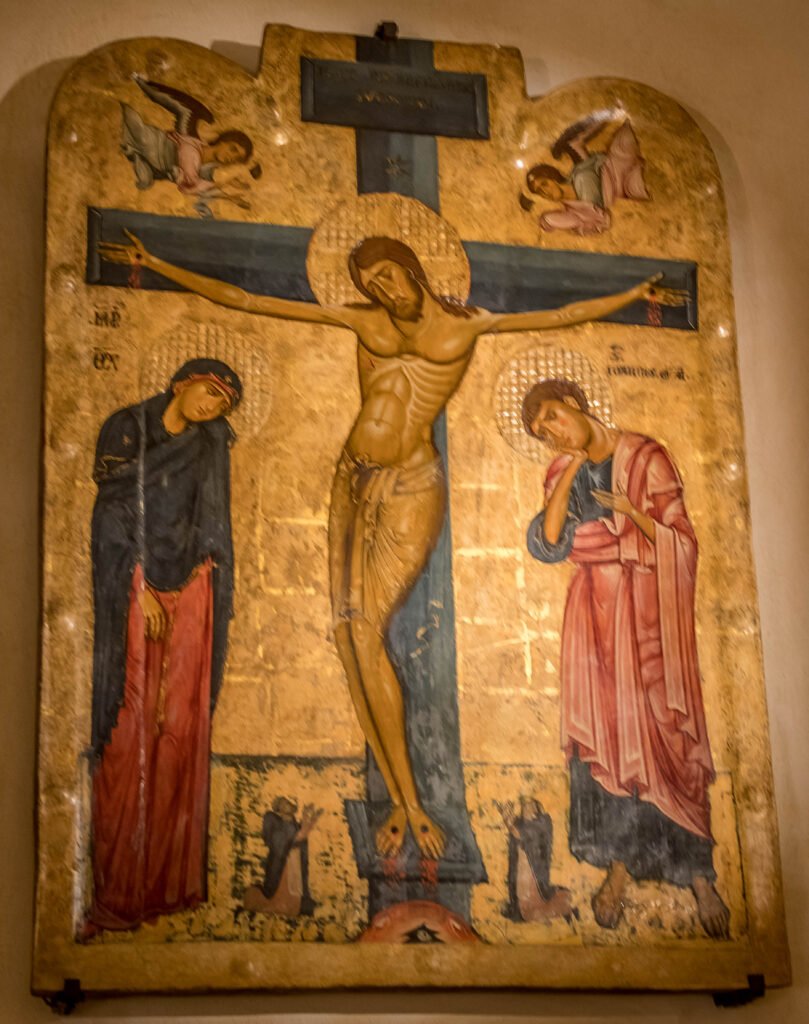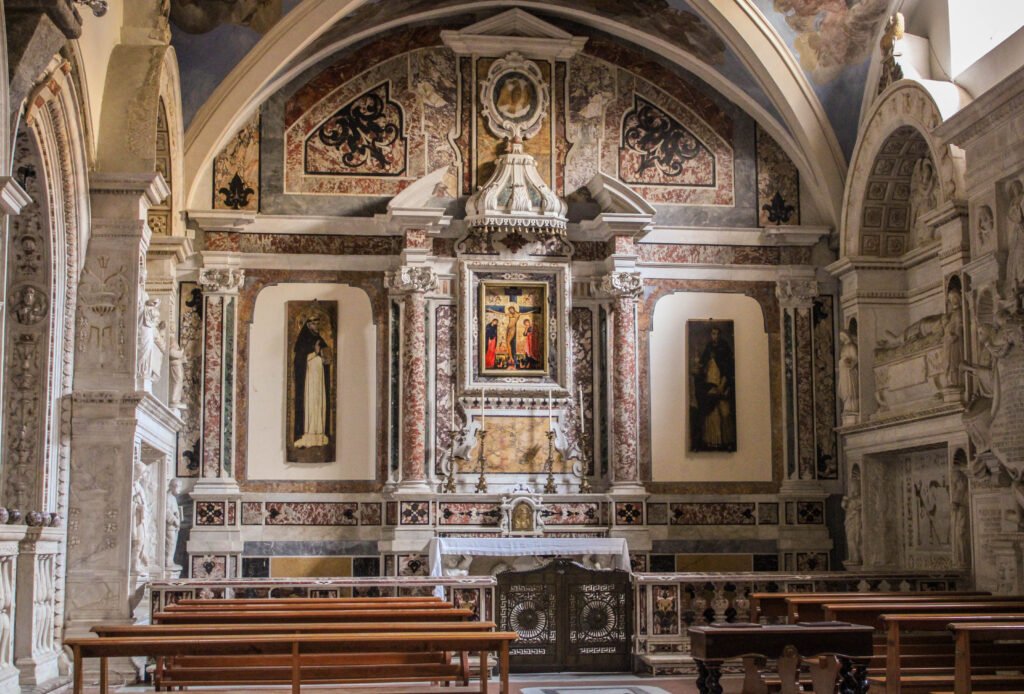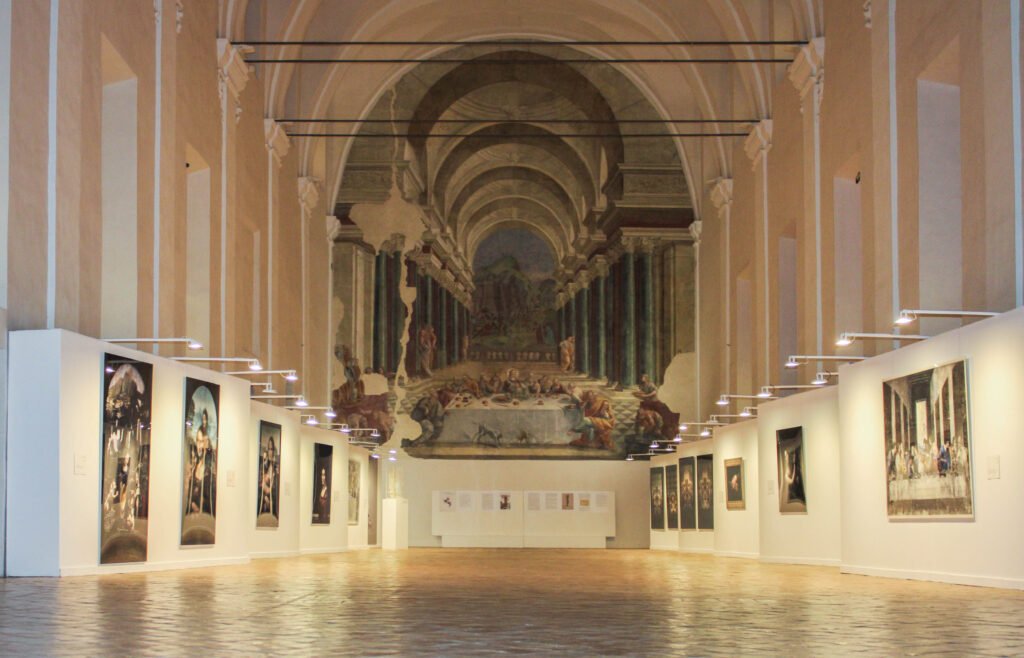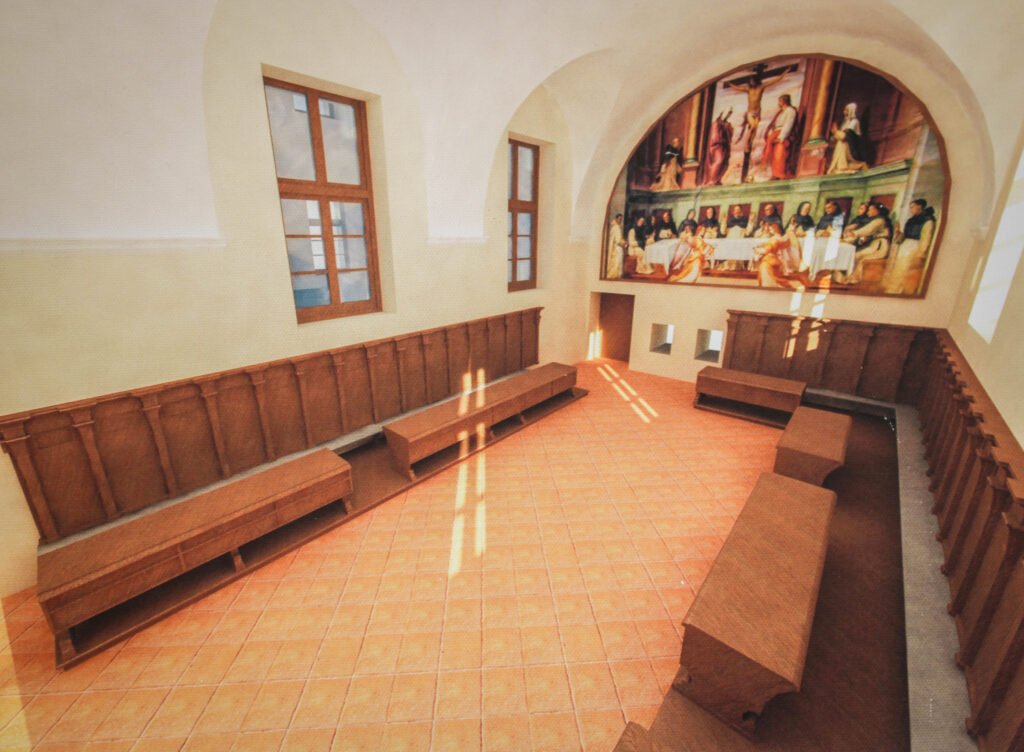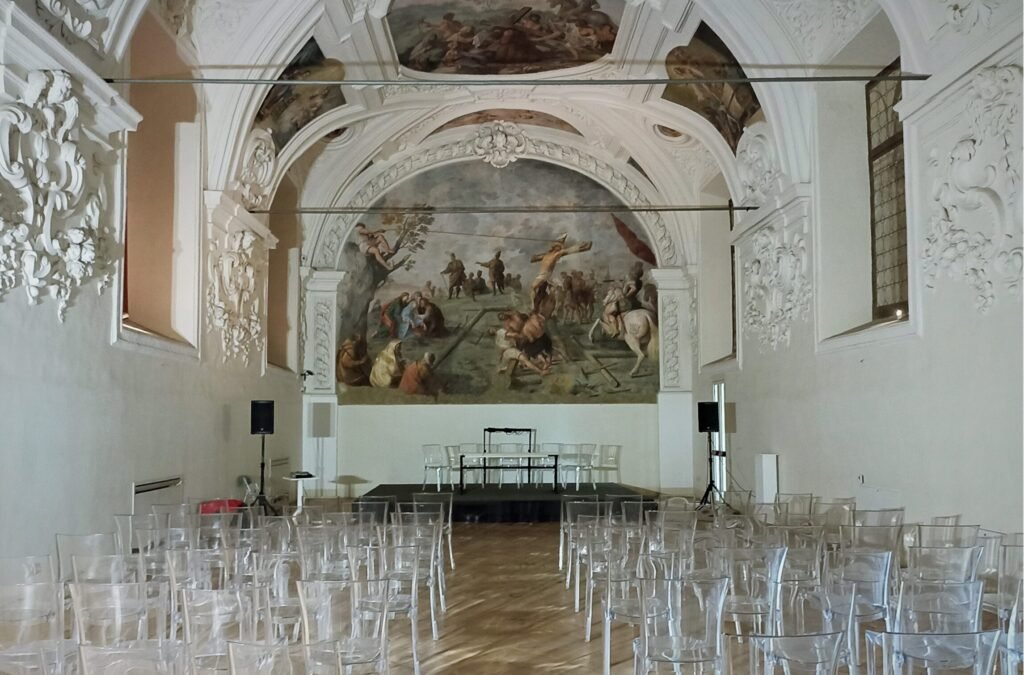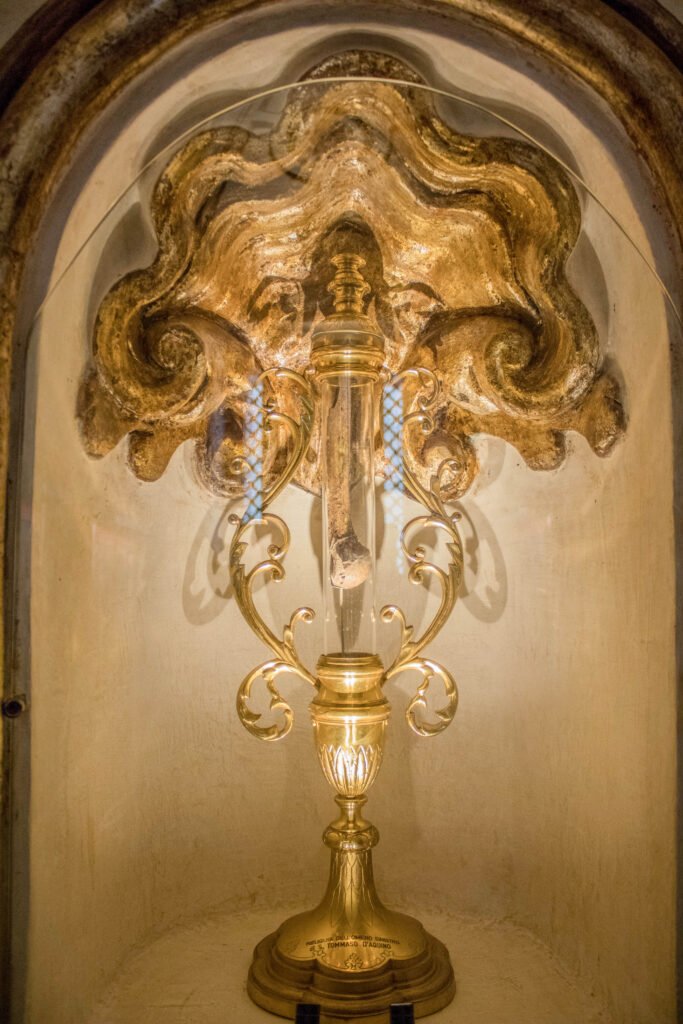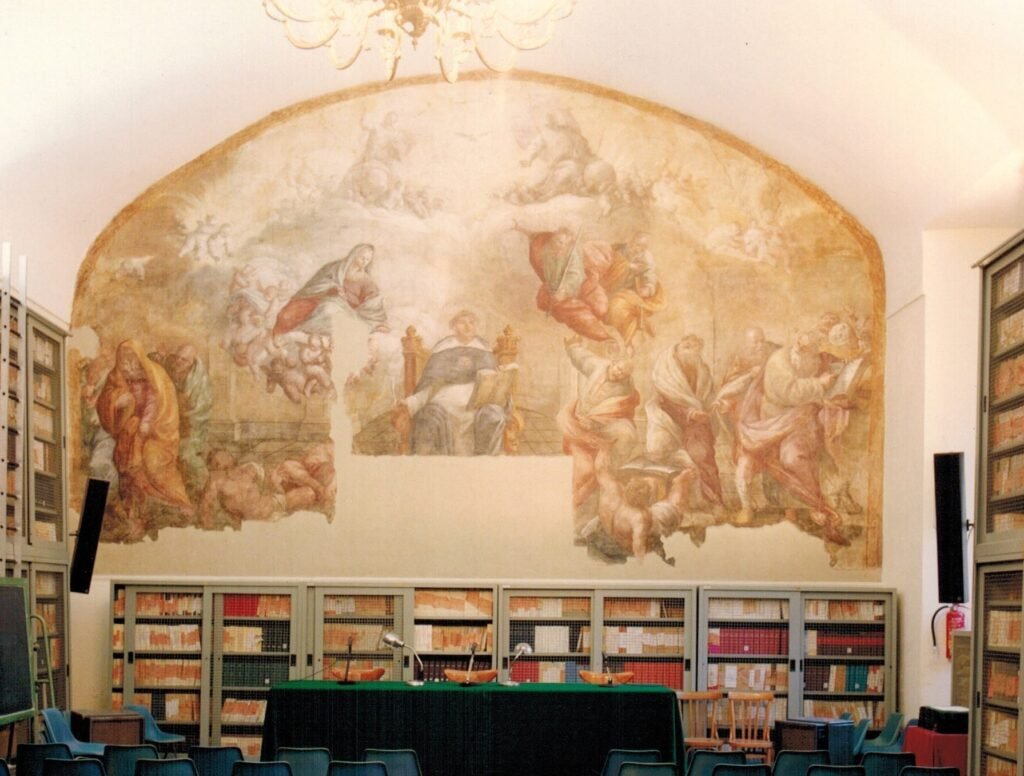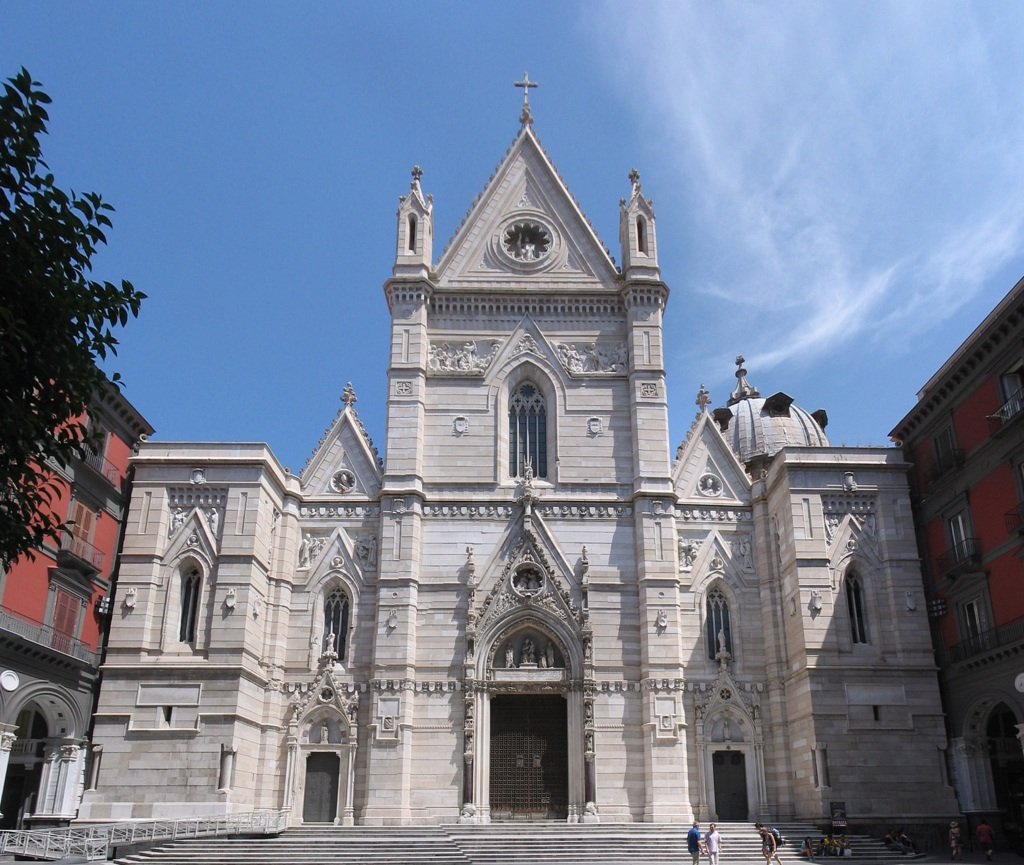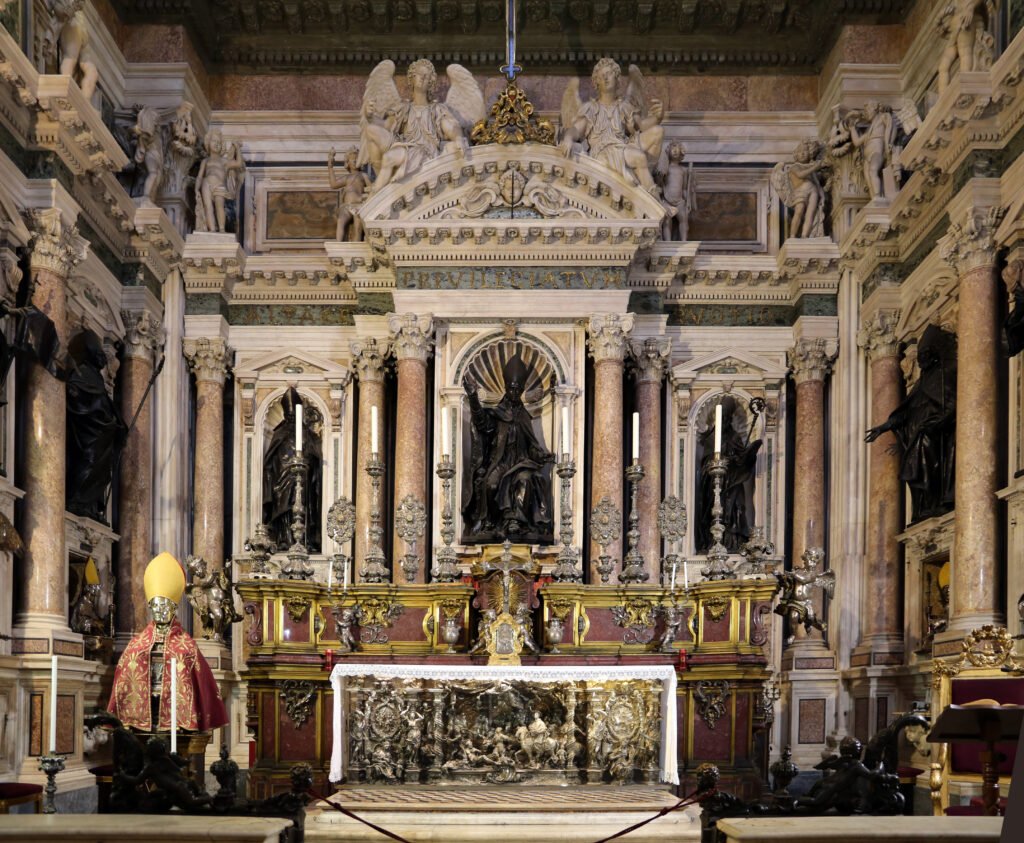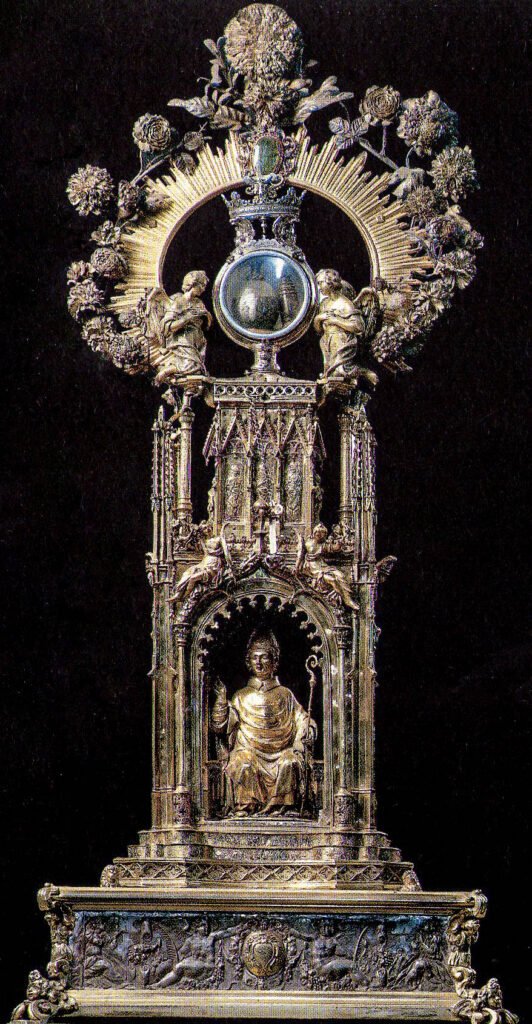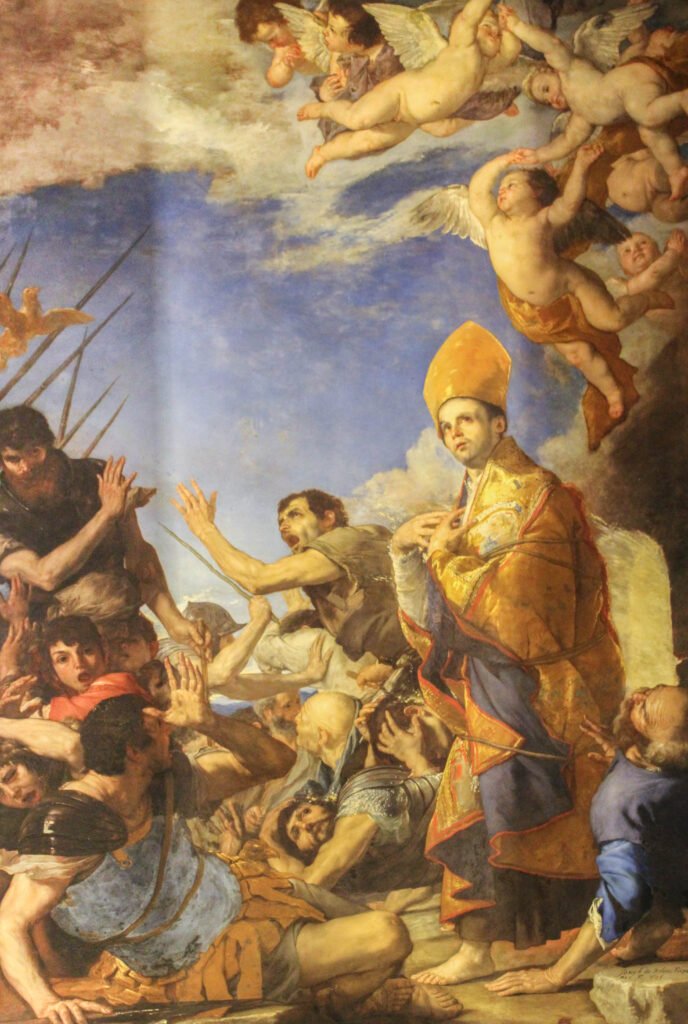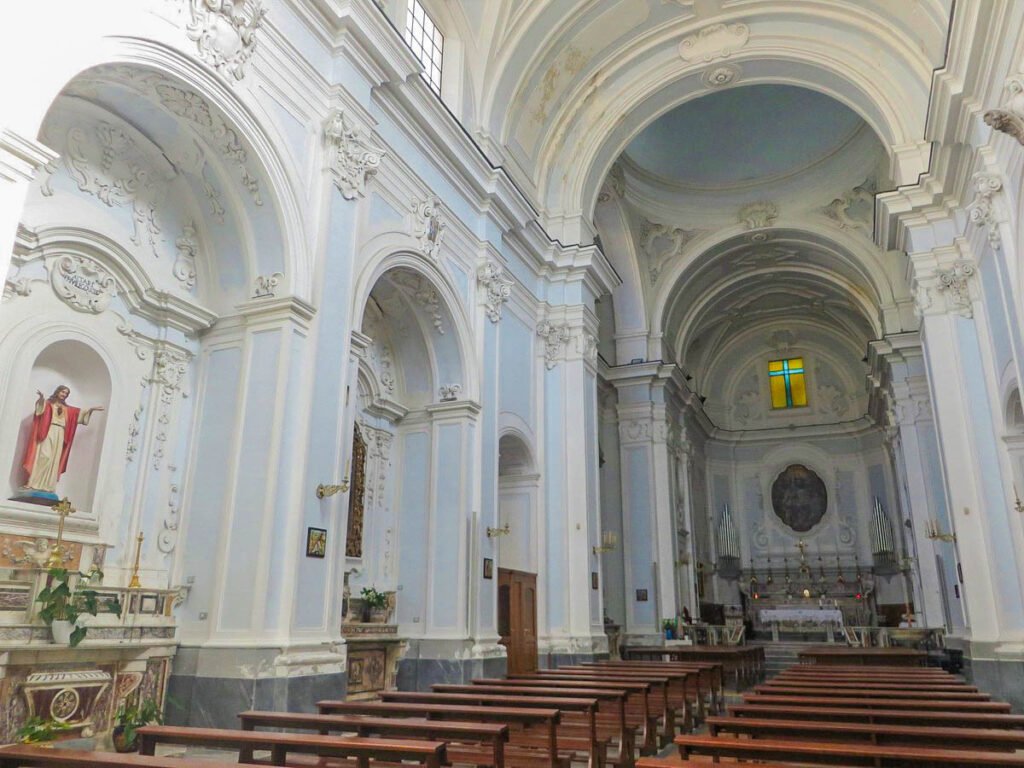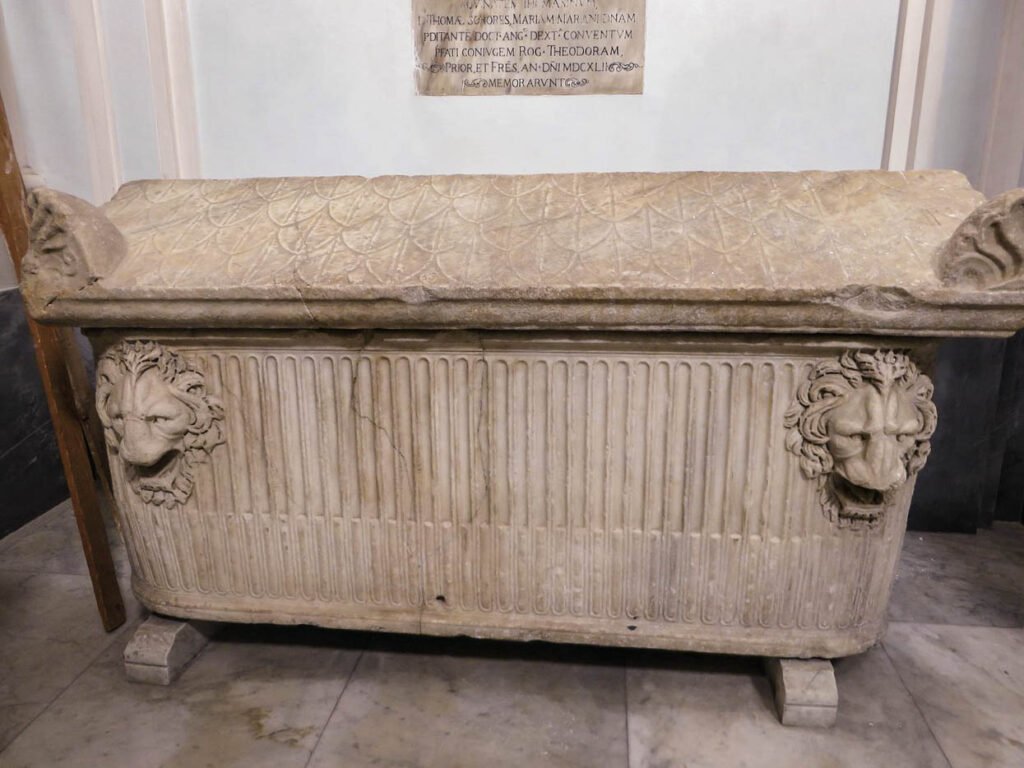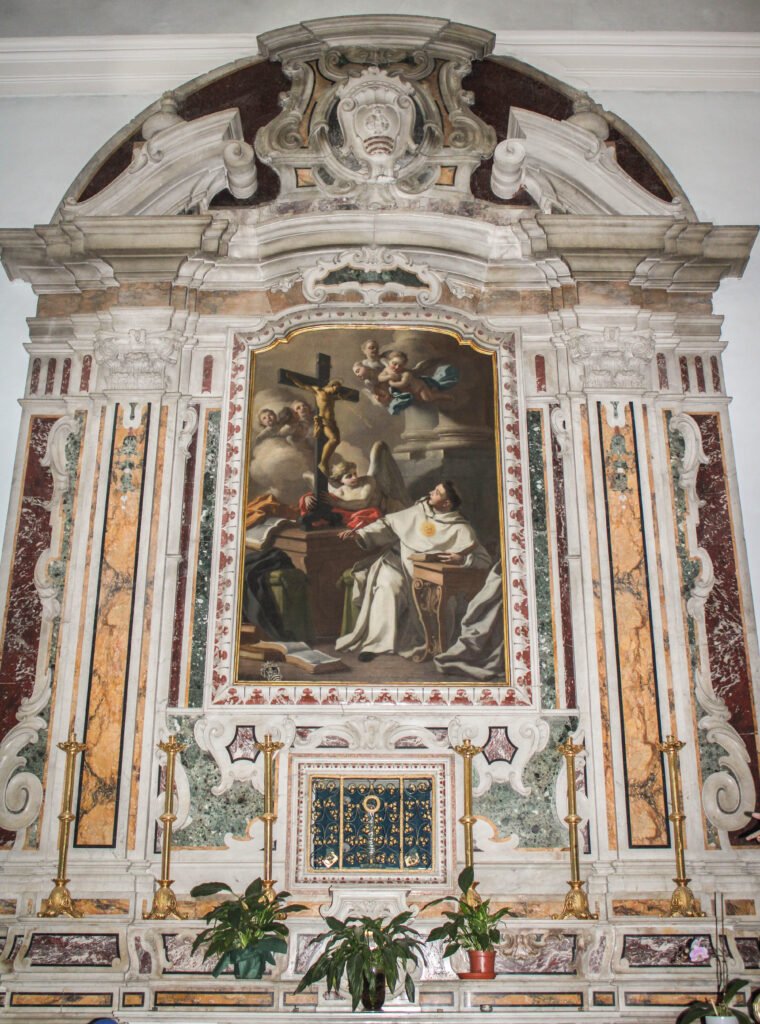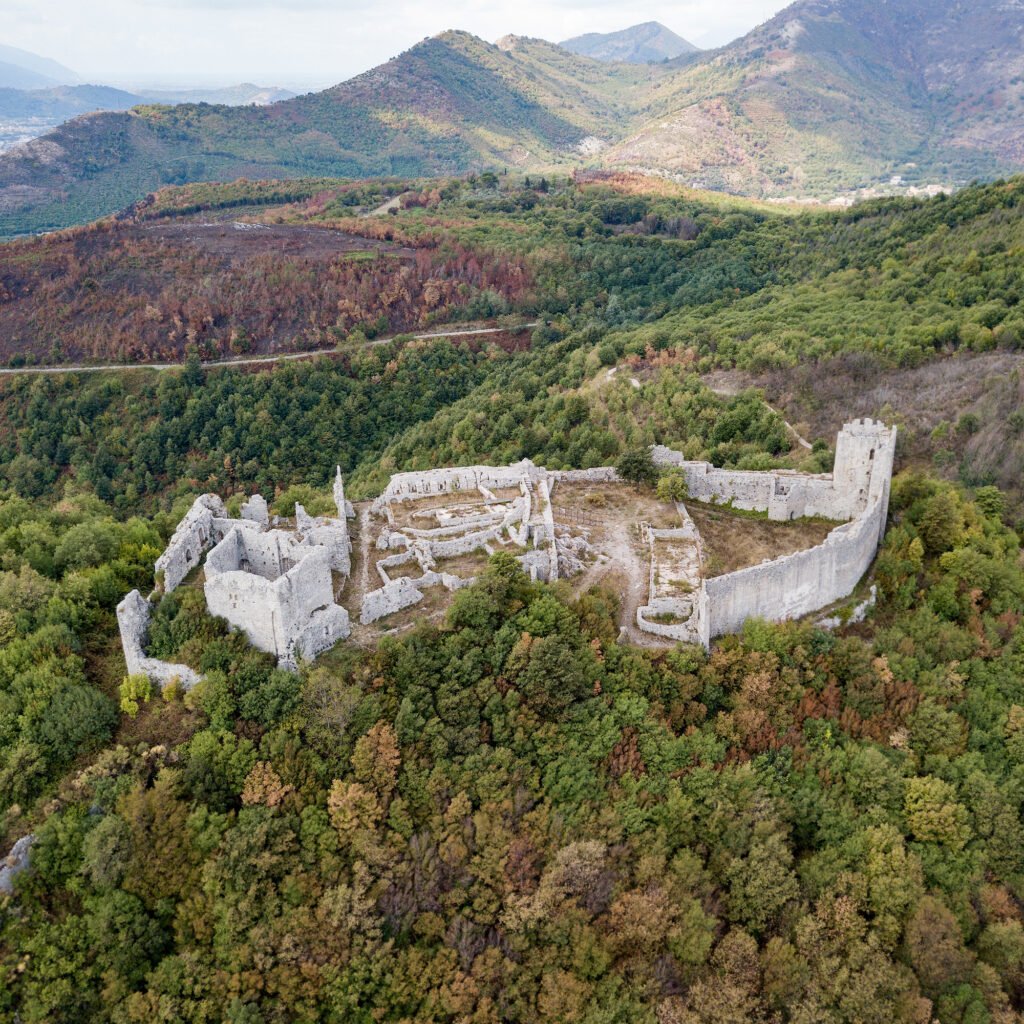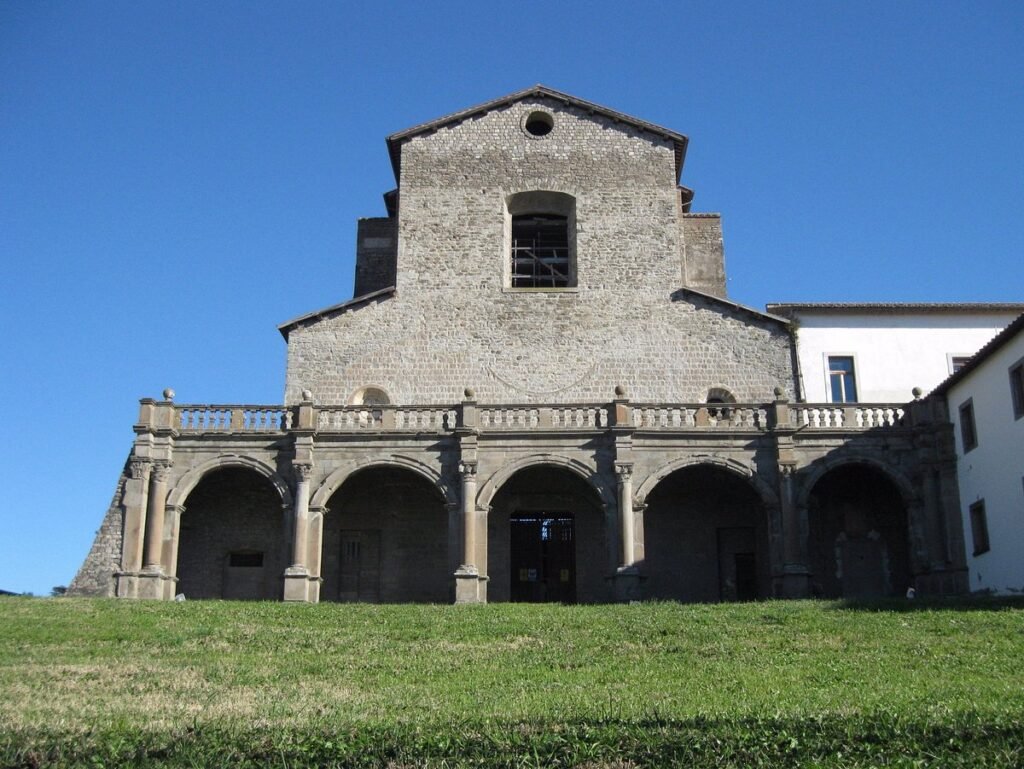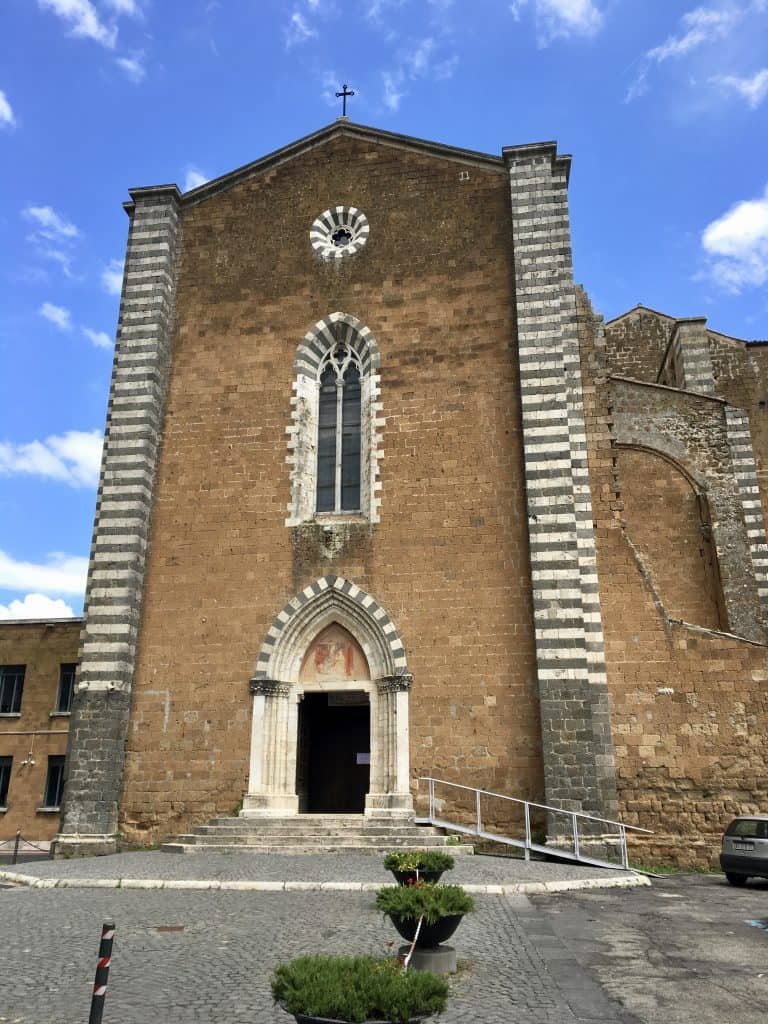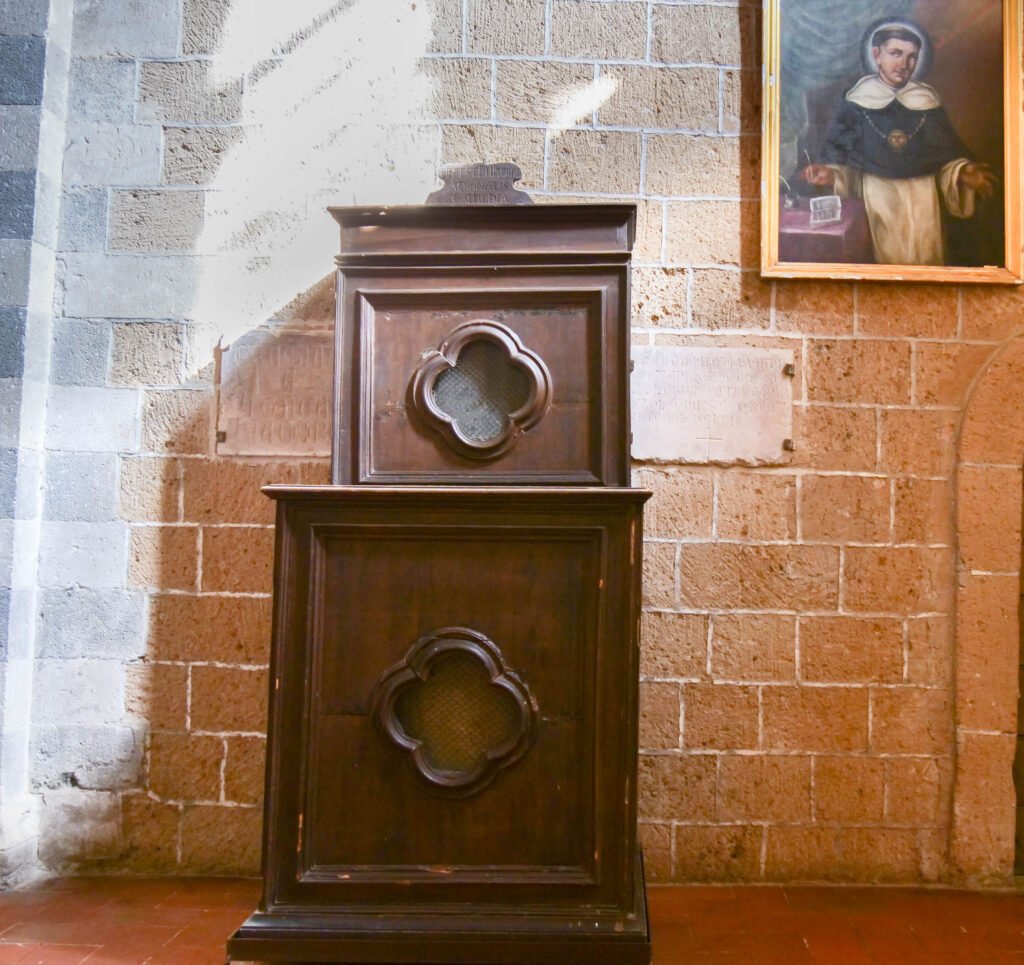I. Introduction
“In addition to personal study, we find that pilgrimages, cultural visits, and travel are means to help our intellectual and cultural formation…”[1]
St. Thomas Aquinas was undoubtedly a great theologian – if not the greatest – who defended and explained the divine truths of the faith with such great mastery that he earned the title “Luminary of the Church and of the Whole World.”[2] According to St. John Paul II, his methodology was to place “prior to the technical methodology of the teacher, the methodology of the saint, who lives the Gospel in its fullness, in which charity is everything. Love of God, the supreme source of all truth; love of neighbor, God’s masterpiece; love of created things, which are also precious chests filled with the treasures that God has poured into them: this was the inspirational force of all his zeal as a scholar and the secret impulse of his total self-giving as a consecrated person…Indeed, the gigantic intellectual effort of this master of thought was stimulated, sustained, and guided by a heart filled with love for God and neighbor. ‘Per ardorem caritatis datur cognitio veritatis.’[3]”[4]
The study of the works of Aquinas who “enlightened the Church more than all the other doctors”[5] and the veneration of the example of his holy life make him to be not merely one of the principal saints of our Institute, but in some way his doctrine and his virtue infuse our entire way of life and our mode of apostolate with the particular style that defines us within the Church. Indeed we can go so far as to say that without Thomistic philosophical formation, one would be nothing more than a caricature of what a religious of the Incarnate Word should be.
In truth, his works are cited in all the documents that make up our proper law and in the vast majority of the writings of our Founder, which together compose the patrimony of the Institute. Moreover, the deliberate intention to offer Thomistic formation finds its place among the non-negotiable elements of the charism. Thomism holds the highest importance in fulfilling the specific end of the Institute that requires discerning between the elements of a given culture so as to determine which ones correspond to the Gospel and can be assumed by it, in order to accept them, and which ones do not, in order to reject them.
A solid Thomistic formation is achieved not only by the personal and profound study of his life and works, but also, in its measure, becomes dynamic with “pilgrimages, cultural visits, trips, etc.”[6] I am pleased to present the Historical Tour guide especially prepared by the Religious Family of the Incarnate Word in the footsteps of the “apostle of truth.”[7]
The Guide has been carefully illustrated with full-color maps of the most important places in the life of the saint. It also includes photos of the memorials, works of art, and details that will make the experience even more enriching.
In addition, the Guide provides updated contact information, with a brief account of what occurred at the site, important details to keep in mind, visiting hours, and a helpful bibliographical list for further reading. An appendix contains a timeline of Aquinas’ life. All of which we trust will contribute to making the pilgrimage a journey in faith toward God.
Pope Francis recently referred to St. Thomas Aquinas as the “most illustrious Doctor of holiness and the study of sacred doctrine.”[8] Within this framework, we lift up our prayers so that, following in the footsteps of this distinguished “man of the Church.”[9] May we always go on pilgrimage in search of the Truth, supported by the staff of our faith and of his most excellent doctrine.
May Mary Most Holy, the Pilgrim Virgin, always accompany and help us so that running toward the goal[10] we too may attain from her Divine Son that which St. Thomas asked for: “Grant me, I pray, a will that seeks you, a wisdom that finds you, a life that pleases you, a perseverance that awaits you with confidence, and a trust that in the end may possess you.”
P. Gustavo Nieto, IVE
II. Brief Biography
Saint Thomas Aquinas was born in the Castle of Roccasecca d’Arce around 1225. He was the sixth child of the family of the Counts of Aquino.
When he was five years old, he was sent to study at the Benedictine Monastery of Montecassino. At 16 he went to the University of Naples (1239-1244) to study liberal arts. There he decided to join the Order of Preachers (the Dominicans).
St. Thomas faced opposition from his relatives for this decision; they had hoped he would become an influential abbot in Montecassino. They imprisoned him in the family Castles of Monte San Giovanni Campano and Roccasecca d’Arce (1244-1245). In 1245 he returned to the Dominicans. He continued his studies in Paris and Cologne for 11 more years.
In 1256 St. Thomas received accreditation as a theologian and began his career as a professor. He taught in Paris, Naples, Rome, Orvieto, Anagni and Viterbo.
Thomas worked with great generosity throughout his life. His days ended in a peculiar silence: on December 6, 1273, due to a mystical experience, he stopped writing. When asked the reason why he had put down his pen, he replied, “Compared to what I have seen, all that I have written seems to me as so much straw.”
In January 1274 he was invited by Gregory X to the Council of Lyon. On the way he suffered from an unusual ailment. The Countess of Ceccano, his niece, received him in the Castle of Maenza. He died on March 7, 1274, in the nearby Cistercian Abbey of Fossanova.
The mortal remains of the saint were kept in Fossanova for nearly one hundred years. On two occasions the relics of the Angelic Doctor were transferred to the residence of Count Onorato in Fondi.
After this episode, his health notably declined. His superiors ordered him to take a period of rest in the Castle of San Severino, the winter residence of his sister Theodora in the outskirts of Salerno.
The Master General of the Dominicans, Elias Raymond (1367-80), was charged with the responsibility of recovering the relics of the saint. After preserving them in the Dominican convent of Fondi for a short period of time, they were transferred via Viterbo and Orvieto to France. They finally came to rest in Toulouse, where they arrived on January 28, 1369.
In 1585 a relic of the head of St. Thomas was found in the abbey of Fossanova. It is currently venerated in the Cathedral of Priverno.
III. Regions of Italy Related to the Angelic Doctor
A. Roccasecca d’Arce
Roccasecca d’ Arce is located in the heart of the modern province of Frosinone. Its history is deeply linked to its geographical position, as this region in the Middle Ages was part of the Terra di Lavoro.[11]
- History
- St. Thomas Church
- Castle of the Counts of Aquino
- Statue of St. Thomas
1. History
The D’Aquino family[12] was of Lombard origin. Its historical progenitor was Rodiperto, who in 887 received the position of Gastaldo D’Aquino from Adenolfo, Count and later prince of Capua. This title included the functions of militia and jurisprudence. One of his descendants, Rinaldo I, was the Lord of Roccasecca d’Arce and of MonteSan Giovanni (1157-1169). St. Thomas, son of Landulf D’Aquino, descends from this branch.[13]
The date of birth of St. Thomas is calculated, by approximation, from his death. At present there seems to be a certain agreement in placing the date of birth between the years 1224 and 1225.[14]
His first biographer, William of Tocco (Guglielmo da Tocco), recounts the announcement of Thomas’ birth as follows:
When his mother Lady Theodora, renowned for the purity both of her manners and her lineage, was at Roccasecca within the confines of the Kingdom of Campania, there came to her in spirit a Brother, good in name, and of better life and religion, who for a long time had led an eremitical life together with others on the mountain of the said Rock, and who was considered a saint by the men of that region. He said to her: “Rejoice Madam, for you have conceived, and will give birth to a son whom you will call Thomas; and you and your husband will wish for him to become a monk in the Monastery of Montecassino, in which the body of St. Benedict rests, in the hope that your substantial revenues granted to that monastery will bring your son to the highest degree of prelacy. But God will provide otherwise, because he will be a brother of the Order of Preachers, and of such notable science and sanctity of life, that in the world there will not be found another equal in his time.” To which the Lady replied: “I am not worthy to give birth to such a son; may God do according to the good pleasure of his will.” And all that was prophetically spoken was truthfully fulfilled. In fact, the fruitfulness of the mother and the joy of the newborn was immediately evident, and the name already mentioned, which was contained in that vision, was imposed on him, so that there could be no doubt that all the things that had been announced by way of a promise would be fulfilled in the child.[15]
Little is known in depth about the father of Thomas and his family. Nevertheless, we know that Landulf married Theodora, a lady who belonged to the Rossi branch of the Neapolitan family of Caracciolo. There were at least nine children, four boys: Simon, Rinaldo, Landulf, and Thomas; and five girls: Marotta, who later became abbess of the convent of St. Mary of Capua; Theodora, wife of Roger, Count of San Severino; Maria, and Adelasia. The name of the fifth sister is unknown because she died from a lightning strike in early infancy. Little Thomas, who slept next to his wet nurse, was saved from the same fate.[16] This is how the story of the incident reaches us:
It happened then that, in that same castle, as a horrible storm suddenly arose in the air. Lightning struck the tower and killed the child’s sister and the horses that were in the stable. The mother, who had more solicitude for the care of the boy than for that of the girl, came fearfully to the bed in which the nurse slept with the infant, and having found him healthy in her hands, gave thanks to God who was gradually beginning to fulfill in her son what He had promised.[17]
In April 1244 Thomas received the Dominican habit in Naples. His family was at odds with his decision, so his mother sent her son Ronald and Pier delle Vigne to intercept the saint at Acquapendente. There they captured him, put him on horseback, and took him to Monte San Giovanni, a family castle north of Roccasecca (see page 58). He remained there for a brief period, being quickly transferred back to Roccasecca. The family’s purpose in keeping him there was to change his mind about the Dominicans, but it would be an exaggeration to describe him as mistreated. It was a forced stay rather than an imprisonment. Thomas could come and go, receive visitors, talk to his sisters. It was during this time that he convinced his sister Marotta to become a nun. William of Tocco reports that on this occasion he took the opportunity to pray, to read all of Sacred Scripture, and to study the Sentences of Peter Lombard.[18]
2. St. Thomas Church
- GOOGLE MAPS: St. Thomas Chruch
- Address: Largo Arciprete, 1, 03038 Roccasecca FR.
- Schedule: by appointment with the guide.
- Contact: Angelo Ciampa, the guide.
- Phone (WhatsApp): +393203480383.
- Note: The church is usually closed, so we advise calling the guide at least two days in advance to coordinate the visit. Mass can also be celebrated with advance notice. The Church and the Castle are located on the same property, so we recommend reading the notes on page 28.
Built between 1323 and 1325, the Church of St. Thomas in Roccasecca was the first church built in his honor. It was constructed in Gothic style using local stone. This original building was destroyed by the bombings of World War II along with the Dominican convent that was adjacent to it. Only the bell tower was left standing.
Reconstruction began in 1972, and the church was reopened in 1980. Its rectangular plan is 20 meters long and 10 meters wide and is divided by a semicircular arch. The presbytery houses several fifteenth century frescoes from the Church of San Pietro a Campea, all of which are in the style of the Cassinese school. Among them an image of St. Michael the Archangel is prominent, depicted with a rod in his right hand and a scale in his left.[19] The back wall of the presbytery, on the left, has a niche in which a delicate fresco of the late fifteenth century depicts the Madonna of the Rosary with Child.
To the right of the church façade rises the bell tower, adorned with a lunette that protects a fresco of the holy Doctor (1477).
3. Castle of the Counts of Aquino
- GOOGLEMAPS: Castle of the Count of Aquino
- Address: Largo Arciprete, 1, 03038 Roccasecca FR.
- Schedule: Unrestricted.
- Note: The Castle, being in ruins, has no specific visiting hours. Due to the location and the terrain, we recommend wearing comfortable shoes. It is accessible only by climbing a small hill. If one makes contact with Angelo to enter the church, we advise asking him to accompany your group for the climb to the Castle.
At an altitude of over 500 meters, on the slopes of Mount Comario adjacent to Mount Cairo, stand the ruins of the medieval castle known as the Castle of the Counts of Aquino.
In 994, Guido of the family of the Counts D’Aquino and Counts of Pontecorvo donated Mount Asprano and the church of Sant’Angelo to Mansone, the abbot-baron of Montecassino. A year later, Mansone built a fortress called “seca” (“dry”) because of the scarcity of water, as a lookout for the defense of the Abbey of Montecassino. This fortress had an important strategic value because it was located on the border between the Papal States and the territories of Emperor Frederick II, who disputed—among other things—control over the Abbey of Montecassino. Such a political-geographical situation condemned the family of Thomas to oscillate constantly between Pope Gregory IX and the Emperor, which implied inevitable conflicts.[20]
The main entrance to the Castle was located on the west side. In the center was “the keep,” the area surrounded by thick walls, inside of which were guard houses for the garrison and large shelters used in case of danger. Some of the buildings served as stables, others as food and fuel depots.
The Counts moved their residence to the keep in times of siege. Its upper part was accessible by stairs that could be drawn in from the interior. The towers that reinforced the external wall had the same characteristics.[21]
Outside the walls stands a circular watchtower, recently restored, and known as del Cannone (“of the cannon”). It is a very high fortification built as a lookout and defense point.
For a long time, it was claimed that this tower was the dwelling of St. Thomas during the time of his captivity, but recent studies show that the construction of the Torre del Cannone was later.
To the right of the entrance to the main square are the ruins of the family chapel dedicated to the Holy Cross. The devotion of the Counts D’Aquino to the Holy Cross is well-known, as they also built a church with the same name in Aquino. It is probable that Saint Thomas was baptized in this chapel.
A few meters from the castle walls is another church, which for many centuries was the main church of the village. Today it is known as “della Santa Croce” and has been completely restored.
4. Statue of St. Thomas
- GOOGLEMAPS: Statue of San Thomas
- Address: Statua di San Tommaso, Via S. Maria Nuova, 16, 03038 Roccasecca FR.
- Note: Although the statue is located at the entrance of the village, we recommend visiting it at the end of the tour in order to spend more time at the Castle.
At the entrance to the village stands the statue of St. Thomas, made entirely of local stone by Giuliano Vangi. It is 8 meters high and was dedicated to the saint in the Jubilee Year 2000 by the local government.[22]
B. Aquino
Aquino is a community in the province of Frosinone located in the Lazio region of Italy, 12 km west of Cassino.
- History
- The Medieval Castle of Aquino: The House of St. Thomas.
- The Vallone D’Aquino.
- 3. Co-cathedral Basilica of Saints Constantius Bishop and Thomas Aquinas.
- Church of Santa Maria della Libera.
1. History
Most of the biographers of our saint prefer the hypothesis that he was born in the Castle of Roccasecca. Some, however, maintain that he was born in Aquino.
Historical records of the D’Aquino family show that they resided in these lands as early as 887. A first branch of the family remained in possession of the county of Aquino until 1137. It is from this family connection that Thomas acquires his patronymic.[23]
Thomas certainly visited Aquino as he set out for France to participate in the Council of Lyon, which he did not reach because death met him on the journey. The letter that Thomas wrote from Aquino to the Abbot of Montecassino on that occasion is still preserved in Montecassino.[24]
2. The Medieval Castle of Aquino: The House of St. Thomas
- GOOGLEMAPS: The Medieval castle: The house of St. Thomas
- Address: Via S. Costanzo, 4, 03031 Aquino FR.
- Contact: Elisa Canetri.
- Phone: (WhatsApp): +393498157065.
- Note: Contact with Elisa is necessary in order to enter the house.
The castle complex is located in the southeast sector of the city. It includes the Palazzo Comitale, the so-called House of St. Thomas Aquinas, the pseudo-square tower (also called the maschio), that was built to defend the eastern side, the only one devoid of natural defenses; the piazza, and other residential and service structures that extend along an imposing travertine rock wall.[25]
Reconstruction of the city of Aquino[26]
The castle, originally conceived of as a fortress, was built in the tenth century by order of Athenolfo II. From the end of the thirteenth century a real center began to develop around the palace.
In the eighteenth century, with the construction of the Cathedral of St. Constantius, Bishop, the tower became a bell tower. The Cathedral was destroyed during the Second World War.
3D Image of the Castle of Aquino[27]
On the façade of the house of St. Thomas are two mullioned windows (windows with a double opening at the top) dating from the fourteenth and fifteenth centuries. One of them is in the Gothic style, the other in Aragonese-Catalan style.
Of this house only a large room containing an exhibition of images depicting the life of the saint can be visited.
The builders of the palace developed the defensive system consisting of two concentric walls made of large blocks of travertine, material extracted from the ancient Roman city or from nearby quarries.
Planimetry of the city of Aquino[28]
In the lower part of the settlement, you can see the remains of the large cylindrical tower, where Porta Fistula previously stood. This tower was built to defend a passage that allowed for an easy water crossing, taking advantage of a natural bottleneck formed in the embankment. This passageway is not easily distinguishable now, due to the location of current structures, but it would have been located in what today is the entrance to the Natural and Historical Park of Vallone.
3. The Vallone D’Aquino
- GOOGLEMAPS: The Vallone D’Aquino
- Address: Via S. Costanzo, 03031 Aquino FR.
- Note: An open outdoor park, good for a picnic lunch, rest, etc.
The Vallone is currently a park that occupies the esplanade extending below the foot of the medieval Castle of Aquino. The park houses parts of a Roman quarry dating back to the first century.
This esplanade was formerly a moat, a body of water used for the defense of the castle. At that time, the moat was supplied by water diverted from a nearby lake (no longer in existence).
4. Co-Cathedral Basilica of Saints Constantius Bishop and Thomas Aquinas
- GOOGLE MAPS: Cathedral Basilica of Saints Constantius Bishop and Thomas Aquinas
- Address: Piazza S. Tommaso, 1, 03031 Aquino FR.
- Hours: Monday to Saturday – open by appointment; Sundays from 9:30AM to 6:30PM
- Phone (WhatsApp): +393288092204.
Dedicated to St. Constantius, the sixth century Bishop of Aquino, the present Cathedral church is a post-World War II reconstruction, the original having been destroyed in the war. In 1974 the Cathedral was also placed under the patronage of St. Thomas Aquinas, on the occasion of the seventh centenary of the death of the Angelic Doctor (1274-1974). Pope St. Paul VI visited Aquino that same year and elevated the cathedral to a minor basilica.
The Cathedral had five different periods of constructions throughout its history. The original church dedicated to St. Peter is known to have survived at least until 1137. Later there was a building dedicated to St. Mary of the Angels, and then another dedicated to St. Constantius, although the precise dates are not known.
In 1664, the Cathedral was moved to a small church dedicated to St. Peter because of the decline of the population in the nearby area. The relics of St. Constantius were also moved to this new church, near the left bank of the Lesogne stream. The place corresponds today to the Vallone d’Aquino.
The fourth cathedral was located in the area between the medieval tower and the monument to the Immaculate Conception. It was destroyed on July 14, 1944 in an aerial bombardment. Ten years later, on June 6, 1954, the reconstruction of the new cathedral began in its present location. The work lasted several years, until its solemn consecration on October 19, 1963 presided over by the diocesan bishop, Monsignor Biagio Musto. The bones of St. Constantius, re-discovered after the bombing, were placed in the new church.[29]
On the occasion of the consecration of the new Cathedral of Aquino, the Church of Toulouse (France) donated the relic of the rib that protected the heart of our saint.[30] Today it is found embedded in the base of a large polychrome statue of St. Thomas on the left side of the cathedral.
As part of the anniversary celebrations of 1974, a Thomistic Congress was held in Rome and in Naples, from April 17-24. The participants of the congress stayed in Aquino. Among them was the Cardinal Archbishop of Krakow, Karol Wojtyla, the future Pope St. John Paul II.[31]
5. Church of Santa Maria della Libera
- GOOGLE MAPS: Church of Santa Maria della Libera
- Address: Via Madonna della Libera, 03031 Aquino FR.
- Hours: Open daily from 9:00AM to 6:00PM.
The church of Santa Maria della Libera in Aquino is a great artistic treasure of medieval times. It was built in the first quarter of the twelfth century and (though not all historians agree) shows signs of a link with the Desiderian abbey church[32] of Montecassino.
According to an old local tradition, there had been an ancient temple there dedicated to “Hercules the Liberator,” the source of the subsequent title of Madonna “della Libera.”
The church was built by two pious women in fulfillment of a vow they had made, although both died without seeing the church completed. These two were Maria and her sister in-law Ottolina dell’Isola, wife of Adenulf II D’Aquino, Second Count of Alvito. These two benefactors are remembered in the mosaic of the lunette of the main portal, where the figures of Ottolina and Maria with the Virgin and Child are represented. The initials V(otum) F(ecit) can be read on the sides of a cross.[33]
Another interesting detail is the epigraphy engraved on the left lintel of the church doorway. Two overlapping inscriptions can be seen there. The first dates from the beginning of the construction of the church. The complete inscription reads as follows:
AVLA(M) DEI GENITRIX I(N)CHOA
Birth-Giver of God, begin this temple.
When the construction of the Church was finished, another inscription was overlap that reads:
A(VLAM) M(ATER) D(EI) ORNA
Mother of God, embellish this temple.[34]
Inside the church one can see numerous fragments of reused funerary monuments on the walls. It was once richly ornamented with cosmatesque mosaics and a cycle of frescoes, small fragments of which can be seen on the walls.
Next to the church is an Honorary Arch from the Augustan period, built in the middle of the first century BC.
C. Montecassino
Montecassino is a Benedictine abbey situated on a hilltop in the Valle Latina (“Latin Valley”), about 140 km south of Rome and one kilometer west of the town of Cassino. It is located in the southern Italian region of Lazio.
- History
- The Monastery
- The Sacristy: Chapel of Relics
- The Museum
- The Library
1. History
The Abbey of Montecassino was the scene of St. Thomas’ early consecration to God. He arrived at this monastery between 1230 and 1231; he must have been five- or six-years-old at the time.[35]
Thomas’ parents nurtured the hope that he would one day become abbot of the abbey.
According to the customs of the thirteenth century, children were admitted to the monastery only as oblates.[36] The daily life of the oblates was the common life that governed the entire monastery, with the adaptations appropriate to their age. A wise master guided each one in the spiritual and disciplinary life. Education advanced through frequent readings and instruction. Learning to read and write went hand in hand with learning moral and religious principles and obligations. Reading exercises were taken directly from the liturgical books and Sacred Scripture. The psalms were learned by heart. The Rule of the holy patriarch of Montecassino was given to the oblates not only to serve as a reading exercise, but also to impress itself strongly on their minds. Later, St. Thomas will draw upon some passages of the Rule of St. Benedict in the second part of the Summa Theologiae.
St. Thomas curriculum included grammar, rhetoric and debate as parts of the trivium; as well as the notions of music, which was part of the quadrivium. He also practiced the art of writing script or calligraphy. His handwriting is described as inintelligiblis by many scholars, yet the graphologist Moretti discovered musicality in his analysis of Aquinas’ handwriting.[37] In addition to Latin literary studies and the various scientific disciplines, he also studied the vernacular language of his times.
Ptolemy of Lucca (Tolomeo Fiadoni, 1236-1327), for his part, affirms that while at Montecassino St. Thomas made progress in logicalibus et naturalibus (in logic and the natural sciences), studies that already indicated a higher degree in the arts.
It was at Montecassino that Thomas approached the purest sources of divine grace. He probably received Jesus in the Eucharist for the first time there.[38]
Unfortunately, the peace that the monastery enjoyed was disturbed by new struggles between the Church and the Emperor Frederick II, which arose around 1236. Landulf, following the advice of the new abbot, Stephen of Corbario, decided to shelter his son from the easily foreseeable problems.
According to biographers William of Tocco and Bernardo Gui, the abbot of the monastery recognized the intellectual qualities of the young man, and likely advised Landulf to place his son in an environment where he could more easily devote himself to study. After considering it together, the parents decided to send the adolescent Thomas to Naples to give new impetus to his studies there. It is likely that upon his arrival in Naples Thomas stayed for some time in the small monastery of St. Demetrius, a religious community dependent on Montecassino.[39]
Thomas probably made the move from Montecassino in the spring of 1239. He was then 14 or 15 years old and, although at that age he could have already professed in the ordo monasticus, no document attests to him having done so.[40]
St. Thomas did not forget those who had done him so much good during his childhood. He kept in touch with the Abbey of Montecassino even in his mature years, for the deep Cassinese heritage accompanied him for the rest of his life. Thomas probably visited Montecassino for the last time in February 1274, on his way to the Council of Lyon. It was then that he left a letter to Abbot Bernard commenting on a passage from the Moralia of St. Gregory the Great. The short work deals with the conversion of sinners and the divine presence. Its doctrine is authentically Thomistic.[41]
2. The Monastery
- GOOGLE MAPS: Montecassino
- Address: Abbazia di Montecassino, Via Montecassino, 03043 Cassino FR.
- Hours: Summer schedule (April 1-October 31): daily, 9:30AM to 6:30PM.
- Winter schedule (November 1-March 31): Sundays, 9:30am to 5:15pm; Monday to Saturday, 9:30am to 4:50pm.
- Note: Mass Schedule: Sundays, 10:30am and 12:00pm. Mass is sung in Gregorian chant. Visits are suspended during the celebrations.
- Guided tours: guide@abbaziamontecassino.org.
- Phone (WhatsApp): +390776311529 (to book a guided tour).
- https://abbaziamontecassino.it
- Guided Tour of the Monastery Complex:
- Small Groups (1-5 people), 35€ total (ancient area included).
- Large Groups (6 or more people), 6€ per person (ancient area included).
- Guided Tour of the Monastery Complex with Entrance to the Museum:
- Small Groups (1-5 people), 45€ total (ancient area included).
- Large Groups (6 or more people), 8€ per person (ancient area included).
- Note: In winter (November 1 to March 31), the Museum is only open on Sundays and holidays, 9:30am to 5:15pm.
The monastery was founded by St. Benedict (480-547). It became the center of the spread of his rule and his spirit throughout a prodigious and fruitful history of over a thousand years.
It was destroyed around 577[42] by the Lombards and rebuilt at the beginning of the VIII century, experiencing a period of great splendor until 883, when the Saracens devastated it again.[43] In the eleventh century the monastery reached its greatest splendor.
In the year 1349 a violent earthquake knocked it to the ground. Without delay the reconstruction began. That 14th century monumental and outstanding appearance was preserved until February 15, 1944, the date of the well-known bombing that totally destroyed it.[44] What we can see today has been rebuilt from the foundations, with the exception of the lower part of the southwest corner.
The monastery has the shape of an irregular quadrilateral (200 m x 100 m approximately). Its profile dominates the mountain and all the wide and fertile Cassinese plain like a majestic citadel of the spirit. The church, in splendid baroque style, houses the mortal remains of St. Benedict and of his sister St. Scholastica.
3. The Sacristy: Chapel of Relics
- Hours: on Wednesdays only, with an entrance fee.
- Small Groups (1-5 people), 18€ total.
- Large Groups (6 or more people), 3€ per person.
- Small Groups (1-5 people), including the guided tour and the visit to the sacristy, the total cost for the group is 45,00 €.
- Large Groups (6 or more people), including the guided tour, the museum, and the sacristy pay 9,00 € per person.
When standing at the base of the stairway leading to the presbytery, one finds the sacristy located to the left. Of great artistic value in its own right, the wooden decoration is a reproduction of what was destroyed in the eighteenth century. Above the altar there is a Crucifix of the Sienese school from the end of the fourteenth century, placed between two images of the Apostles Peter and Paul. There is a venerable relic of the Holy Cross above the tabernacle. On the side walls, numerous reliquaries house the precious remains of many different saints. Among them, the first-class relic of St. Thomas Aquinas stands out.
The monks did not neglect to dedicate a chapel to St. Thomas For the sixth centenary of the canonization of Aquinas, celebrated in 1924, a chapel was dedicated to him. This chapel was restored and adorned with an altarpiece painted by Arduino Scaccia of Veroli. The chapel and the altarpiece disappeared in the tragic bombing of February 15, 1944.
Just as St. Thomas Aquinas remained spiritually united to the religious heritage of Montecassino, the monks of St. Benedict have perpetually preserved a household memory of the illustrious son of St. Dominic.[45]
4. The Museum
- Hours: Summer schedule (April 1-October 31): daily from 9:30am to 6:30pm.
- Winter schedule (November 1-March 31): open only on Sundays and holidays, 9:30am to 5:15pm.
- Email: guide@abbaziamontecassino.org (to book a guided tour).
- Phone (WhatsApp): +390776311529 (to book a guided tour).
- Note: Entrance to the museum (without a guided tour), 6€ per person.
Leaving the church, the entrance to the Museum is on to the right. It is divided into two floors and offers the visitor a testimony to the different phases of the history and art of the monastery.
The current location of the museum was established in 1980 and has been continuously renovated over the years. The exhibition is not monothematic, but brings together in the same structure several sections covering a period of time ranging from approximately the pagan era of the sixth century BC to the present day. There is an archaeological section, a medieval section, and finally a section of miniatures and prints. Some copies of manuscripts and printed books preserved in the archives of the abbey are also on exhibition. There is also a section dedicated to painting, goldsmithing, and sacred ornaments.
5. The Library
- Hours: Visits are available only for research purposes (with the necessary documentation) and by reservation.
- Monday to Friday, 9:30am to 1:30pm.
- Email: bmn-mnc@beniculturali.it.
- Telephone (WhatsApp): +390776 311529.
The origins of the collections date back to the first half of the sixth century. Most of the manuscripts preserved in the library were produced in the abbey’s own scriptorium, making them a rare example of the organic development of a library collection. The collection of old printed books, on the other hand, results from a campaign by the monks in the 17th and 18th centuries to expand the library holdings. Even today, the old printed books still preserve the order given by the librarians of those centuries. In addition to the ancient heritage, the Montecassino library has a vast modern collection, which is constantly updated in the sections of law, history, literature, theologyreligious sciences, and art.
The library also has the text of the last writing attributed to our saint, the Responsio ad Bernardum, abbatem casinensem, written in a margin of the manuscript of the Moralia of St. Gregory the Great.[46]
The final destruction of Montecassino by bombing (1944) during the Second World War caused incalculable damage to the library’s holdings, of which only a small part could be saved. Before the destruction, the library had 120,000 volumes; in 1955 only 20,000.
At present, the Montecassino library holds about 30,000 volumes of the antique collection (dating before 1830), about 100,000 volumes of the modern collection and 380 periodicals and journals. Some codices date back to the sixth and seventh centuries. Among the numerous parchments, the Placito Cassinese (960) is especially of note since it is considered to be one of the oldest documents of Italian literature.
D. Monte San Giovanni Campano
Mount San Giovanni Campano is located in the area of the Hernici Mountains, 438 meters above sea level. A town called by the same name is located on its summit and slopes; the Aquino family owned a castle there.
- History
- Castle of Monte San Giovanni Campano
1. History
It was here that St. Thomas spent a period of seclusion imposed by his family, during which his brothers tried to dissuade him from his decision to become a Dominican friar.
William of Tocco narrates that while he was held there, a prostitute was introduced into Thomas’ room to induce him to sin. When the Saint saw her, he took up a burning brand from the fire to drive her out of his room. After having thrown the young woman out, he engraved the sign of the cross on the wall, asking God for the grace of perpetual purity. While he was praying, he fell asleep. Two angels appeared, encircling his waist on both sides and saying to him: We now gird you on behalf of God with the girdle of chastity that you begged for, which cannot henceforth be dissolved by any attack. What cannot be obtained by the merit of human virtue, is granted to you by the mercy of divine munificence.[47] Divine Providence allowed this episode so that Thomas could obtain an even more glorious triumph as a result of this struggle.
2. Castle of Monte San Giovanni Campano
- GOOGLEMAPS: Castle of Monte san Giovanni Campano
- Address: Via Corte, 3, 03025 Monte San Giovanni Campano FR.
- Hours: By appointment only; at least three days in advance.
- Contact: Pietro Loretta (more responsive to calls than to texts)
- Phone (WhatsApp): +39348 515 6245.
- Note: Mass can be celebrated in the chapel if reserved in advance.
The ancient residence of the Counts of Aquino, also known as Castello Ducale, is located on the highest point of Monte San Giovanni Campano. With an imposing and severe appearance, it is a fortress difficult to access. Once, in fact, the whole village was known as simply Castelforte.
In the past, the castle had numerous towers. Due to two earthquakes (1703 and 1915), however, most of these no longer exist. The castle preserves only two very solid towers: the first is quadrangular and the second is pentagonal. One enters the castle through a Romanesque portal.
The Dukes of Avalos transformed the room where St. Thomas was imprisoned into a private chapel, and renovated it several times. Above the altar there is a triptych of the Neapolitan school of the sixteenth century, which was formerly located in a niche in the wall. Each painting represents a different episode of the saint’s life:
The central painting shows St. Thomas kneeling at the moment of receiving the belt of chastity by four angels with joined hands. St. Thomas wears the sun on his chest and his head is turned backwards. Behind him are clouds and the figure of the Eternal Father, and a ribbon which reads:
EX PARTE DEI TE CINGIMUS CINGULO CASTITATIS:
We gird you, on God’s behalf, with the cincture of chastity.
In the painting on the left, St. Thomas is praying to the Apostles Peter and Paul. From a cloud descends a waving ribbon on which is written:
O FELIX DOCTOR CUI DIVINAE SCRIPTURAE CAELI CLAVICULARIUS APERUIT OSTIUM:
O happy doctor, to whom the gatekeeper of heaven opened the door of the divine Scriptures!
In the painting on the right, St. Thomas adores a crucifix. A ribbon expresses the words addressed to him by Christ:
BENE SCRIPSISTI DE ME THOMA:
You have written well of me, Thomas.
E. Anagni
Anagni is a municipality in the province of Frosinone, located in southern Lazio. The ancient city is located in the hills east of Rome.
The city is known for the infamous affront of Anagni. This outrage took place on September 7, 1303 when Sciarra Colonna, a general of King Philip IV “the Fair” of France, slapped Pope Boniface VIII, and held him prisoner for three days.
- History
- San Giacomo Church
- Cathedral of Santa Maria
1. History
The Dominicans founded a convent in Anagni in 1240. Thanks to its location, this convent would also serve as a meeting point for the friars, especially when they made the journey back and forth between Rome to Naples. Some of his biographers affirm that St. Thomas Aquinas also stayed here at different times in his life, including between 1259 and 1261 after his time as a professor in Paris. He also made a brief visit there again a few years later on September 8, 1265, for the occasion of the provincial chapter.[48]
William of Tocco relates the following anecdote that occurred in this place:
It is also told of the saintly doctor that in the convent of Anagni, Brother John del Juez, a man of great devotion who had the cell [of Thomas Aquinas] next to his own chamber, often heard him talking to someone; and more often [as if] disputing, although he always stayed there alone and without any company. Indeed, it would not otherwise have been possible for one and the same master to write so many truths had not one of the citizens of heaven revealed to him what he should write.[49]
2. Church of San Giacomo
- GOOGLE MAPS: Church of san Giacomo
- Address: SP25, 39, 03012 Anagni FR.
- Hours: Sundays, 7:00am to 1:00pm; Tuesdays, Thursdays, and Saturdays, 4:00pm to 8:00pm.
- Contact: Don Francesco Frusone (to arrange guided tours).
- Email: francescofrusone86@gmail.com
- Telephone (WhatsApp): +39 331 497 4012. Church Secretary: 07 75 72 5534
- Dedicated to St. James (San Giacomo), the church of San Giacomo belongs to a convent that was the seat of a renowned school of theology and philosophy during the time of St. Thomas.
In 1770, the church was restored by the Spanish Cardinal Thomas de Boxadors, himself a member of the Order of Preachers. The current façade in baroque style is from that restoration. Although the city council turned the convent into a hospital in 1873, since 1888 it has functioned as a female boarding school under the name of Convitto Nazionale Regina Margherita.
A cross, which according to some authors was made by St. Thomas, is still preserved for veneration inside the church.
The Cross of St. Thomas
Tradition has it that when St. Thomas was in Anagni teaching, he made a cross in his cell as a protection against lightning. Since the Middle Ages, this cross has been venerated as a defense against lightning during great storms. One of his biographers relates that the saint in moments “of fear, of thunder and storms, armed himself like a shield with the sign of the cross and would say: God became flesh for us, God died for us.”[50]
The cross contains the following verses:
Crux mihi certa salus, crux est quam semper adoro.
Crux Domini mecum, crux mihi refugium.
The cross is my sure salvation, the cross is what I always adore. The cross of the Lord is with me, the cross is my refuge.
3. Cathedral of Santa Maria
- GOOGLE MAPS: Cathedral of Santa Maria
- Address: Via Papa Leone XIII, Anagni, FR.
- Hours: Summer Schedule (April 1-October 31): 9:00am – 1:00pm / 3:00pm – 7:00pm.
- Winter Schedule (November 1-March 31): 9:00am – 1:00pm / 3:00pm – 6:00pm.
- Guided Tours of the Museum and Treasury are recommended. The Crypt can only be visited with a guide at the top of the hour.
- The flat rate entrance fee is 9 € per person, but there exist various price options for reservations of larger groups (15 people or more), for student groups, etc.
- https://www.cattedraledianagni.it
The Cathedral of Santa Maria in Anagni was built in Lombard-Emilian Romanesque style between 1072-1104 at the request of Bishop Pietro da Salerno.
On the outside, its majestic Tartar stone façade solemnly dominates the churchyard, where an imposing 30-meter-high belltower stands, decorated with single, double, and triple pointed windows. To the southwest, the building stands out over Piazza Innocenzo III thanks to the Loggia delle Benedizioni, the exterior of the Caetani chapel and the scenic staircase that curves behind the apses.[51]
Inside are found Romanesque elements intertwined with typically Gothic architectural elements, like the alternation between squared pillars and rounded columns that separate the naves. These indicate a transitional period in architecture. The floor is a marvelous work in the Cosmatesque style executed by Cosma di Jacopo between 1224-1227.
The Cathedral Crypt is dedicated to St. Magnus, patron saint of the city, and was built at the same time as the upper church. Because of its impressive beauty it is known as the “Sistine Chapel” of the Middle Ages.[52]
Madonna and Child: Relic of St. Thomas Aquinas
When visiting the Chapel of the Savior (“Capella del Salvatore”) in the crypt museum of the Cathedral of Anagni, you can venerate a precious reliquary icon preserving the relics of St. Thomas Aquinas, St. Thomas Beckett, and St. Peter of Salerno.[53] The painting representing the Virgin and Child is on wood, made by Lello d’Urbe in 1325. Reinaldo of Anagni, the priest who commissioned the image, is depicted kneeling before them.
F. Maenza
The village of Maenza enjoys a privileged location. It is perched on a mountain at an altitude of more than 360 meters. Between Maenza and Roccasecca dei Volsci stretches the valley of the Amaseno River to the south. Facing north, by contrast, the land between Maenza and Roccagorga leads to the road at the foot of Mount Caprèa and Mount Semprevisa leading to Carpineto Romano, birthplace of Pope Pecci, Leo XIII.[54]
- History
- Maenza Castle
1. History
Between late January or early February 1274, Thomas and Reginald of Priverno, his secretary and traveling companion, set out for Lyon. The goal was to participate in the council that Gregory IX had convoked for the first of May that year, with a view to reach an agreement with the Greeks. Thomas took with him the Contra errores graecorum, which he had written at the request of Urban IV.
A little past Teano absorbed in his thoughts, Thomas did not realize that a tree had fallen across the road; thus, the branch struck him, injuring his head. His companion rushed to help him, but he reassured him that he was barely hurt.[55]
After a few days’ journey, they arrived at the Castle of Maenza where Francesca, Thomas’ niece, lived. The strength and health of our saint had weakened considerably. While staying there he became ill and completely lost his appetite.
He was entrusted to the care of the physician John of Guido from Priverno. Having asked Thomas what he would like to eat, to see if he could restore his appetite, he got a puzzling answer: fresh herring. Apparently, this was a dish that our scholarly saint had probably enjoyed during his time in Paris. The doctor was very sorry that he could not satisfy the sick man’s request, as that kind of fish was nowhere to be found in the area. However, when he went out into the castle square he met a man coming from Terracina who was carrying a load of freshly caught sardines. He asked him to rest the load on the ground to check that there were no other fish mixed in among the sardines. To his surprise he found a basket full of fresh herring. The doctor could not overcome his astonishment, because that kind of fish had never been seen in those places. Furthermore, the man transporting the fish assured him that he had bought only sardines. According to William of Tocco, St. Thomas decided not to eat them. On the contrary, another eyewitness, Pietro di Monte San Giovanni, affirms that he did eat them.[56]
Aquinas sanctified the Castle of Maenza by his presence. The room where he stayed is preserved to this day. It is said that he stayed there for 40 days, though the process of canonization states rather that it was only a few days.[57]
On October 22, 2011 the community of Maenza inaugurated a monument dedicated to St. Thomas Aquinas. The work by the artist Gabriele Jagnocco is located in Piazza del Duomo, at the foot of the castle. This sculpture is made in travertine and bronze depicting the saint and all the symbols that testify to his presence in the place: the miracle of the herring, the olive branch, the great books, and the outline of the castle.
2. Maenza Castle
- Address: Piazza del Duomo, 04010 Maenza LT.
- Hours: Sundays, 10:30am – 12:00pm, 3:00pm – 5:30pm; Saturdays 4:00pm to 6:30pm
- https://www.beniculturali.it/luogo/museo-del-paesaggio-di-maenza
The castle stands in the center of the medieval town, dominating the city with its imposing quadrilateral figure and its tall spur-shaped battlements. Three of its rectangular towers protrude beyond the corners of the castle walls, while one stands alone at the center of the south façade.[58]
Over the centuries, the building was enlarged and underwent several transformations. It passed from being a well-guarded medieval residence to a Renaissance court, as seen by the coats of arms and by the carved and painted inscriptions (XIV-XVII centuries) relating to the various lords of the fief. The upper part of the castle has quadrangular and semi-cylindrical towers built between the twelfth and sixteenth centuries; it also has square battlements. The entire structure is preserved in perfect condition.
The interior was embellished in 1640 with frescos of faux marble, grotesque sculptural designs, landscapes, and heraldic displays. Decorations were added to the pre-existing Gothic and Renaissance inscriptions, to the coats of arms of the De Cabanni and Caetani families, and to the sixteenth/seventeenth century fireplaces. The room known as the stanza di San Tommaso, where he stayed when visiting his niece, contains frescoes by Vincenzo Fedele di Montefortino.[59] Today, the castle is home to the Museo Civico del Paisaggio ed Eventi Culturali.
G. Fossanova
Located 5 km from the center of Priverno and 106 km southeast of Rome, lies the hamlet of Fossanova. It was born and developed around a Gothic Cistercian abbey built in 1200 in the heart of the Pontine plains. Even today Fossanova belongs to the municipality of Priverno.
- History
- Fossanova Abbey
- The Abbey Church
- The Abbey Complex
- The Cell Where the Angelic Doctor Died
- History
1. History
Having heard that St. Thomas was staying in Maenza, the Cistercian abbot Theobald of Ceccano visited the saint along with other brothers and insistently begged him to stay at the abbey. Since the saint had recovered some physical strength, he accepted the invitation and decided to move from his niece’s home to the Abbey of Fossanova. It is said that his discernment was as follows: If the Lord must come to visit me, it is better that he finds me in a house of religious than in one of laymen.
This final journey of his life – a distance of 16 kilometers – was made seated on a saddle. This fact shows how weak he had become and the seriousness of his condition, since Dominicans were otherwise forbidden from travelling on horseback.[60]
St. Thomas presumably arrived at the abbey in the month of February. Due to the precarious health of the saintly doctor, a room was prepared for him near the infirmary. He was attended with great attention and reverence by the monks, who at that time numbered more than 100.[61] Some of them asked him to explain to them the canticle of Solomon according to the meaning and spirit of St. Bernard, but he answered them saying: “Give me the spirit of Bernard and I will give you an exposition exhaling the spirit of Bernard.” But they insisted, begging him to do it otherwise according to his own interpretation. Then St. Thomas acceded to their entreaties, and spoke to them according to what his pious mind sincerely suggested to him.[62]
St. Thomas’ health visibly worsened. In those days he gave an example of admirable patience and edified the monks with his behavior. For their part, they served him with extraordinary charity, moved by the great veneration they had for him. They competed with one another to carry the firewood from the forest on their shoulders or to do whatever was necessary for him. After his death, the monks were to remember not only Thomas’ supreme patience, but also his meekness, humility and unalterable kindness.[63]
On March 5, he received viaticum according to custom. One eyewitness testified that at that very moment he expressed in words the judgment that the dying man had of his own work:
I receive you, praise of my soul’s redemption, I receive you, as the viaticum of my pilgrimage, for the love of whom I have studied, watched, labored; I have preached to you, I have taught you; never have I said anything against you, and if I have done so, it is through ignorance and I do not grow stubborn in my error; if I have taught ill on this sacrament or the others, I submit it to the judgment of the Holy Roman Church, in obedience to which I leave now this life.[64]
St. Thomas died on the morning of March 7, 1274, becoming a splendid light illuminating the world with his doctrine, and transforming Fossanova into his candelabrum. The blessed Doctor fought with such courage, and won in such triumph, that he can say with Saint Paul: I have fought the good fight, I have finished the race, I have kept the faith. For the rest the crown of righteousness is already laid up for me[65] – a crown that he truly deserved for his study of doctrine.
The Mortal Remains of St. Thomas
The body of St. Thomas was buried in front of the main altar of the church of Fossanova. The Cistercian monks, fearing that the Dominicans wanted to recover the remains of the saint for their order, looked for different ways to hide the relics.
In October 1274, a few months after his death, the first transfer of his body took place. It was removed from the tomb of the church and hidden in the chapel of St. Stephen, which was located inside the same monastery. When the tomb was opened, both the body and his clothes were found intact.
But the Angelic Doctor appeared in a dream to the abbot of Fossanova, complaining that his brothers could not pray at his tomb. So, the abbot had the body brought back to the church. For some time, they placed the body inside a marble sarcophagus on the left side of the presbytery.
Fourteen years after his death, his sister Theodora asked Pietro de Monte San Giovanni, the abbot of Fossanova, for her brother’s right hand as a relic. In this exhumation, the body and clothes of the Saint were again found incorrupt, except for the tip of the nose, which was slightly damaged.
After this second opening of the tomb, it was decided to separate the bones from the flesh by boiling the body in wine. This practice was not unusual according to the customs of the time.
Decades later due to local conflicts, his remains were moved again. This took place in 1349 when Honorato Caetani, Count of Fondi, was at war against the Lord of Piperno. As he did not have the necessary resources to support his campaign, Honorato thought of stealing the relics of St. Thomas from the monks of Fossanova in order to sell them to the King of Sicily and thus obtain the necessary funds for the war. The monks, unable to defend the relics, handed them over to the count. Honorato gave up the plan to sell them, however, because he had allied himself with the family of St. Thomas, and decided to keep them in the chapel of his castle instead.
At some later time, the monks asked for the restitution of the relics. Because of a singular miracle of the saint granted to the family, the count decided to return the bones to the monastery of Fossanova. There they remained hidden in the bell tower of the church. After a short time, however, the count stole the relics again using great cunning.
The relics were venerated in Fondi until 1368 when they were transferred to Toulouse together with the head, which had been kept in Priverno.[66] (See “Priverno” below for more on this controversial issue.
2. Fossanova Abbey
- GOOGLEMAPS: Fossanova Abbey
- Address: Via san Tommaso d’Aquino n. 1.
- Contact: visit the sitio web www.abbaziadifossanova.it/ive/
- Note: Mass can be celebrated in the chapel of St. Thomas if reserved in advance.
Begun in the late twelfth century, the construction of the abbey church was completed between 1217 and 1218. The Cistercian monks who built it consecrated it under the name of Saint Mary.[67]
The thirteenth century seems to have been the most splendid in the monastic life of this abbey. In the fifteenth century the abbey was establish in commendam under the care of a cardinal. Thus, a slow decline began, which extended until the advent of the Italian Republic at the end of the eighteenth century.[68] At that time the last monks were forced to flee to the Castle of San Sebastiano in Isola di Sora, and squatters stole all the possessions of the Abbey.
It was not until 1823 that the clergy, the Cathedral Chapter, and the municipality of Priverno first appealed to Pope Leo XII, demanding the return of the ancient monastery to the Catholic Church. The return of the abbey complex was agreed upon on October 14, 1826. To reestablish the presence of religious life in Fossanova, Leo XII ordered the transfer of the Carthusian monks of San Bartolomeo di Trisulti to Fossanova. Nine monks thus arrived to occupy the monastery.
With the incorporation of the Papal States into the Kingdom of Italy in September 1870, all church properties were nationalized. Thus in 1873 Fossanova was taken by the government, and the Carthusians were forced to abandon the monastery.
Between 1926 and 1933, three religious of the congregation of Don Guanella lived in the former Cistercian monastery, and in 1936, the abbey was entrusted to the Conventual Friars Minor.
During World War II, German troops occupied the abbey from November 1943 to May 24, 1944.[69] After the war, the abbey remained in the hands of the Superintendent of Cultural Heritage of Lazio. Pastoral care was not suspended, however, and so the Conventual Friars Minor continued to serve the parish community until September 2017, when it passed into the hands of the missionaries of the Institute of the Incarnate Word.
3. The Abbey Church
The church is in the French Burgundian Cistercian style with a Latin cross floorplan. Its façade is adorned by a beautiful rose window, while the interior is divided into three naves separated by columns.
At the intersection of the arms of the Latin cross is found the tiburium, which houses the bells.
Two original frescoes have survived: the one above the Door of the Dead, which represents an allegory about death; and one of Saint Thomas, located on the left side of the sanctuary, in the place where he was originally buried.
Aquinas is shown holding a monstrance. At his feet we read the inscription:
Hic requievit – corpus Divi-Th – ome aquinat – is A.D. 1(2)74:
Here rested the body of St. Thomas Aquinas, in the year of our Lord 1(2)74.
In the chapel dedicated to Saint Stephen and Saint Thomas, to the left of the sanctuary, one finds the sarcophagus that once housed his relics.[70] At the time of the suppression of the Abbey, the sarcophagus was moved to Priverno along with other objects. In 1827, it was returned to the Abbey. On July 23, 2023, following its most recent restoration, the sarcophagus was formally installed in this side chapel for veneration.
4. The Abbey Complex
According to Cistercian custom, the abbey complex is divided into two wings: the so-called “wing of the converse brothers,” located on the west side, and the “wing of the monks” located on the east side. The latter contains the cloister and other rooms for private use.
The wing of the converse brothers consists of a two-story building. The wide doors on the first floor indicate that it was used as a warehouse. Formerly this wing had a chapel in the part adjacent to the church.[71] For a time, the body of St. Thomas was hidden there.[72] Today there is a new chapel dedicated to St. Stephen.
The cloister walk has three Romanesque wings, with the corridors covered by barrel vaults, and a Gothic wing of later date, which is notable for its ribbed vault and the engraving of its columns.
In the corner of the cloister walk next to the “diurnal” access door to the church, a stone is found that was taken from the pavement marked with the tracks of the mule of St. Thomas. It is said that when Countess Francesca de Ceccano, the niece of St. Thomas, went to the Abbey to participate in the funeral of her uncle she had to wait for the body to be brought to the entrance of the monastery because it was forbidden for women to enter. According to the tradition, when the remains arrived, she and the two ladies who had accompanied her began to cry and moan so loudly that the mule—the same one that had transported Thomas to Fossanova a few days earlier—broke the rope that bound her, escaped from the stable, and arrived at the entrance door of the Abbey without anyone guiding her. There, she laid down and died next to the coffin, not due to any illness, but because of severe grief for the loss of her owner.[73]
Leaving the cloister walk to the east, follow a barrel-vaulted passage that crosses underneath the monks’ dormitory to access a garden and the so-called “small cloister” or chiostrino. On the east side of the chiostrino is the infirmary, located parallel to the dormitory. There was once a chapel dedicated to Saint Pudenziana adjacent to the infirmary. Currently, in the place that once belonged to the sanctuary rest the mortal remains of Cardinal Velasio De Paolis, C.S.
Following the flight of stairs on the far left, one reaches the room above this ancient chapel where St. Thomas died.
5. The Cell Where the Angelic Doctor Died
The Cardinal Commendatore Franceso Barberini carried out a major renovation of the cell where the saint died. He had the cell itself joined to the adjoining room, and he erected an altar adorned with a bas-relief by the sculptor Antonio Giorgetti.[74] The altarpiece depicts St. Thomas prostrate and ill while explaining the Song of Songs to the monks around him.[75]
On the left wall of the chapel is found a long inscription that is somewhat difficult to read. The text dating from the 16th century is as follows:
When St. Thomas was in the Cistercian monastery of Fossanova, near the river Amaseno, in Campania, recovering after having weakened the strength of his stomach by continuous studies, the monks present at his bedside asked him to explain to them the canticle of Solomon according to the sense and spirit of St. Bernard, although in a shorter way; but he refuted them saying: “Give me the spirit of Bernard and I will give you an exposition exhaling the spirit of Bernard.”
But they, insisting, asked him to give them at least a brief explanation of the canticles (Song of Songs), according to his own mind. Letting some monks come to listen to him and write down the words that came out of his mouth, he began the second exposition of the canticle, different in style and erudition from the first exposition of the same book, as the time required, according to the prayers of the monks and according to the circumstance of his illness, writing not what art, but what his pious mind approaching future immortality, suggested to him…
While he was explaining, when he had reached the sixth chapter of the book, and with his eyes turned heavenward, his spirit was inflamed and filled with joy, he pronounced those words of the same chapter: “come…let us go into the orchard” …
immediately exhaled his soul (which) departed from his mortal body to the garden of eternal bliss … in the 49th (Latin 44) year of his age and 1274 of the birth of Christ….
The following inscriptions can also be seen on the two walls of the entrance to the sanctuary:
OCCIDIT HIC THOMAS LUX UT FORET AMPLIOR ORBI
ET CANDELABRU SIC NOVA FOSSA FORET
Here St. Thomas died, to become the most splendid light in the world, and thus Fossanova was his candelabra.
EDITUS ARDETI LOCUS ET NON FOSSA LUCERNA
HAC IGITUR FOSSAM QUIS NEGET ESSE NOVAM?
Burns this high place, and it is not a hidden lamp.
Who will deny, then, that this ditch is new?
H. Priverno
The small city of Priverno (called “Piperno” since the Middle Ages until 1927) is located in the center of the Amaseno Valley, in an area of modest heights that is part of the Seiani Mountains. Friar Reginald, the dear friend and companion of St. Thomas, was a native of Priverno.[76]
- History
- Co-Cathedral of Santa Maria Annunziata
1.History
Two local churches have long disputed the privilege of possessing the skull of St. Thomas: that of Toulouse and that of Priverno. In each of them there is veneration of “a head of St. Thomas.” The origins of the veneration of the cranium of St. Thomas in the Church of St. Benedict in Priverno is not known for certain. It is said that the head arrived there at the request of the municipality of Priverno. The precious urn containing the head was locked with five keys: four of which were guarded by the four Officers of the Gates of Priverno and the fifth by the abbot of Fossanova. The church of St. Benedict depended, at that time, on the the Abbey.[77]
The head venerated in Priverno was found in Fossanova in 1585, although its authenticity is strongly questioned by French historians. Nevertheless, it enjoys robust local veneration by the people of Priverno.
2. Co-Cathedral of Santa Maria Annunziata
- GOOGLE MAPS: Co-cathedral of Santa Maria Annunziata
- Address: Via S. Giovanni, XXIII, 04015 Priverno LT.
- Hours: Daily, 8:00am to 6:00pm. Monday to Sunday
- Email: pm-laz@beniculturali.it. “Polo Museale del Lazio” is owned by MiBAC.
- Phone (WhatsApp): +39773939061.
- Note: Despite the posted hours, the Cathedral is not always actually open. It is recommended to call before going.
Erected in the center of Priverno, the Cathedral is dedicated to Santa Maria Annunziata (Mary of the Annunciation), consacrated at the end of the twelth century.[78]
According to the canons of Romanesque architecture, the church has three naves, the central one ends in a semicircular apse. In the sixteenth century, several chapels were added in the side naves.[79]
The works that stand out in the central nave are:
– The painting of the Annunciation in the apse, by Ferninado de Ludovisi, dated 1756.[80]
– The marble balustrade of the sanctuary, the main altar and the two pillars flanking it, works by Giuseppe Perini, made between 1784-1795.[81]
– The wooden pulpit, work of Fortunato Baccari, nineteenth century.[82]
– The Stations of the Cross in the central nave, by the painter Giuseppe Camponeschi, 1776.[83]
The fifteenth centrury painting of “Madonna d’Agosto,” patronness of the city of Priverno together with Saint Thomas Aquinas, is conserved on the right of the nave.
The most famous chapel is that of St. Catherine of Siena, found on the right side, which preserves the relic of the skull of St. Thomas.
At the end of the eighteenth century the patronage of this chapel passed to Federico Zaccaleoni. His son, Agostino, restored the chapel with the authorization of the Cathedral council. He also obtained the privilege of preserving the most important relics of the Cathedral. He had the painting of St. Catherine removed and constructed a niche where the relics of St. Thomas[84] are preserved to this day.
I. Fondi
Fondi is an important municipality in the province of Latina, located halfway between Rome and Naples. The city of Fondi is surrounded by the Aurunci and Ausoni mountains and opens southward to the Tyrrhenian Sea.
- History
- Convent of St. Dominic and the Chapel of St. Thomas
1. History
When Pope John XXII canonized St. Thomas Aquinas on July 18, 1323, Fossanova became well-known as the burial site of the new saint. In 1349, the relics were stolen from there by Honorato, Count of Fondi. Recovered by the abbot of Fossanova, they were again stolen by the same person and transferred again to Fondi until 1368.
That same year, the Master General of the Dominicans, Elias Raymond, succeeded in rescuing the relics of the saint. Supported by Pope Urban V, he was able to obtain the silver casket containing the remains of the saint from the authorities of Fondi, as well as the golden casket containing the skull from the residence of the abbot of Fossanova, (St. Benito´s Church) in Piperno. Accompanied by the abbot of Fossanova and notable citizens of Piperno, he transferred the relics from there to Montefiascone, where Urban V resided at the time. Subsequently, the relics traveled from there, passing through Viterbo and Orvieto, to Toulouse, where they arrived on January 28, 1369.[85]
2. Convent of St. Dominic and the Chapel of St. Thomas
- GOOGLE MAPS: Convent of St. Domenic and Chapel of St. Thomas
- Address: Largo Luigi Fortunato, 04022 Fondi LT.
- Hours: Tuesday to Sunday, 9:00am to 1:00pm, and 4:30pm to 8:30pm.
- Phone (WhatsApp): +39771513644.
- Note: We advise calling before going.
The ancient convent is located inside the primitive urban castrum, near the southern part of the city walls and bordered by the Appian Way.
The lack of documented sources makes it difficult to determine the date of the foundation of the Dominican convent and to describe the chronological stages of its development with precision.[86] A strong local tradition affirms that a Benedictine community previously resided there. It is known that the preaching friars arrived at some time after 1303, but before 1358.
A church dedicated to St. Thomas stood here before the seventeenth century. Today it is in the hands of the local government who use it for cultural events.
The central nave of the ancient church is divided into three unequal spaces, due to the major repairs and renovations it underwent during the fifteenth century by order of Honorato II Caetani d’Aragona.[87] In 2004, new restorations revealed the existence of a semicircular apse of remarkable antiquity.[88]
In its original construction, the church had pale yellow stucco walls and an altar on the west side surrounded by two imitation marble columns. The vault, on the other side, was richly decorated. During the nineteenth century, it was repainted.
The Chapel Dedicated to St. Thomas
The transformation of the choir of the old church into a votive chapel to St. Thomas took place at the end of the seventeenth century. A document of 1690, the Apprezzo dello Stato di Fondi, describes the following:
Next to the church is the convent with its cloister and dormitories, with the cell of St. Thomas Aquinas, now reduced to a chapel.[89]
There is no exact date for the pictorial decorations, although the different styles allow for estimating the periods.[90]
Among the paintings are the frescoes of St. Thomas and St. Catherine of Siena, in Neapolitan style, from a school of the first half of the fifteenth century.[91] From this we can deduce that the Dominicans who took possession of the old church commissioned paintings related to the saints of their order.[92]
During the first half of the thirteenth century, a new single-nave building was built on the site of the first church, which probably had a semicircular apse, topped by a square chancel, accessed through a pointed arch.[93]
Inside the chapel, one can venerate a first-class relic of St. Thomas embedded in the chest of a modern statue of the saint.
The remains of St. Thomas, brought from Fossanova, were kept here for a short period of time before Pope Urban V ordered their transfer to Toulouse (France). On a plaque outside the chapel where the body of the saint lay, the following inscription reads:
Hac in aede corpus dici Thomae Aquinatis ex monasterio Fossae Novae aliquandiu quievit et postea Urbano V Summo Pontifice regnante Tholosam fuit translatum.
In this temple is said to have rested, for some time, the body of Thomas Aquinas, (brought) from the monastery of Fossanova, and then transferred to Toulouse under the reign of Pope Urban V.
J. Rome
- History
- Basilica of Santa Sabina.
- The Convent of Santa Sabina.
- Basilica of Santa Maria sopra Minerva
1. History
In 1265, the Dominican Provincial Chapter held in Anagni decided that St. Thomas should be sent to Rome to found a conventual studium in the church of Santa Sabina, for the formation of the friars from within the Roman Province.[94]
For his students during this period, Thomas took up again his commentary on the Sentences that he had taught in Paris. Since the work seemed insufficient, he abandoned this attempt at the end of the first year to undertake a different project: the writing of the Summa Theologica. With this Thomas intended to contribute to the already long and distinguished tradition of the manual-writers of the Order. He also wanted to contribute to filling in the most important academic gap of the period: the much-needed dogmatic basis for moral theology.[95] The Summa Theologica is still today the most widely used work of Thomas, and undoubtedly the best known.
In the Castelli Romani area near Rome, there is a town called Molara through which St. Thomas passed twice. In this place was the castle of Cardinal Riccardo degli Annibaldi († 1276), who had special affection and close contact with the saint. Two events of interest happened in this castle, both recounted by William of Tocco. The first was the conversion of two Jewish visitors following their conversations with Thomas. The second was the healing of Friar Reginald that Thomas brought about through placing on him the relic of St. Agnes, which the Angelic Doctor always carried with him out of devotion.[96]
Almost in ruins, the castle was completely left in disuse in the fifteenth century, and was completely destroyed in the seventeenth century. Today, it has been restored and houses the grandiose Villa Mondragone, which currently cannot be visited.
2. Basilica of Santa Sabina
- GOOGLE MAPS: Basilica of Santa Sabina
- Address: Piazza Pietro D’Illiria, Rome, 00153 RM.
- Hours: Daily, 8:15am to 12:30pm, and 3:30pm to 6:00pm.
Santa Sabina is one of the minor basilicas of Rome. Located on the Aventine Hill, it was built between 422 and 432 over top of a temple dedicated to the goddess Juno. The priest Peter of Illyria undertook the construction of the church on the property of the Roman matron Sabina.
The building has a long rectangular plan, divided into three naves separated by columns. Under the altar are the remains of Saint Sabina. The main doors were carved from wood in the 5th century and preserve highly significant early iconography. The choir remains a notable feature, and to this day the Dominican friars celebrate the liturgical office there.
The Basilica of Santa Sabina with its surrounding grounds was donated by Pope Honorius III to St. Dominic of Guzman in 1221.[97]
3. The Convent of Santa Sabina
- Address: Piazza Pietro D’Illiria, Rome, 00153 RM.
- Hours: By appointment only.
- Contact: Fr. Philipp Johannes Wagner O.P. (for guided tours)
- Email: PJUJOP@gmx.net / rettore.basilica@curia.op.org
- Phone (WhatsApp): +393388137882.
The convent is the residence of the General Curia of the Order of Preachers. For the most part, it has remained unchanged since the early days of the Dominican presence, though the room of St. Dominic was transformed into an oratory.
The original refectory and the Chapter House are still preserved, both of which were built in the time of St. Thomas.
4. Basilica of Santa Maria sopra Minerva
- GOOGLE MAPS: Basilica of Santa Maria sopra Minerva
- Address: Piazza della Minerva, 42, 00186 Roma RM.
- Hours: Daily, 9:00am to 11:00am, and 4:00pm to 7:00pm.
In the area currently occupied by the Basilica of Santa Maria sopra Minerva and the Dominican convent, there once stood three temples: the Minervium, dedicated to Minerva Chalcidice, the Iseum dedicated to Isis, and the Serapéum, dedicated to Serapis.
According to documents from the 8th century, there was a small church here that Pope Zacharias (741-752) had granted to the Basilian nuns. In 1255 the church passed to the ownership of the Order of Preachers.
Although over the centuries the basilica has undergone various transformations and restorations, its current style is predominantly Gothic. The mortal remains of St. Catherine of Siena and the painter Bl. Fra Giovanni da Fiesole, better known as Fra Angelico, are found here.[98]
In this church Cardinal Oliviero Carafa, protector of the Dominican Order, erected a chapel to the right of the sanctuary in honor of St. Thomas in 1486. Now known as the Carafa Chapel, the chapel contains a relic of the right arm of St. Thomas.
The chapel’s triumphal entrance arch bears the following inscription:
DIVAE MARIAE VIRGINI ANNUNTIATAE ET DIVO THOMAE AQUINATI SACRUM:
Chapel of the Blessed Virgin Mary of the Annunciation and of St. Thomas Aquinas.
On the back and right walls are the famous frescoes by Filippino Lippi. The panel above the altar depicts the Madonna accompanied by an angel, with Cardinal Carafa and St. Thomas at her feet.
On the right wall of the chapel, one can see a depiction of St. Thomas in prayer.
Below is the magnificent fresco known as The Triumph of St. Thomas over Heresy. The saint appears seated on a chair, with a book in his left hand. With his right hand he indicates the error, personified by a defeated heretic, who is lying on the floor.
Next to the saint are four female figures symbolizing grammar, rhetoric, dialectic, and philosophy. In the foreground, the disciples of St. Thomas are on the right and heretics on the left.[99]
History of the Relic of the Arm of St. Thomas
In the middle of the French Revolution (1789-1799), a friar saved from destruction the most precious object of the Dominican convent of St. Jacques in Paris: the right arm of St. Thomas Aquinas. To save the relic, the friar sent it to Prince Ferdinand I, Duke of Parma-Piacenza and
Guastalla, a great protector of the Dominican order. When the duke died, his huge collection of relics was inherited by his daughter Carlotta. She became a Dominican nun and brought numerous relics for her dowry to the convent of St. Dominic and St. Sixtus in Rome, including that of St. Thomas.
On the occasion of the sixth centenary of the death of St. Thomas in 1874, the relic was transferred to the Basilica of Santa Maria sopra Minerva.
K. Naples
The city of Naples is the capital of the province of Campania. It is located halfway between Mt. Vesuvius and another volcanic area, the Phlegraean Fields.
- History
- San Domenico Maggiore Basilica
- Convent Complex of San Domenico
- Naples Cathedral
1. History
At around the age of 15, St. Thomas enrolled at the Studium Generale in Naples in the autumn of 1239 to study the arts and philosophy, disciplines required before studying theology. It was also there that he became acquainted with the writings of Aristotle.
The Studium Generale was a medieval university that received students from different parts of Europe who were granted the teaching faculties upon completion of their studies.[100]
St. Thomas met the Order of Preachers in this city, and here he asked for admission to the order. The Dominicans had settled in Naples in 1231 in the Benedictine convent of San Michele a Morfisa, today the Church of San Domenico Maggiore. It was in this church that St. Thomas received the holy habit in April of 1244.[101]
Twice our saint returned to live in Naples. First, he spent time there again starting in 1259 while working on the Summa Contra Gentiles, until 1261 when he was assigned to Orvieto.[102] Later in 1272, he returned to found another Studium Generale. During this same period he worked on the third part of the Summa Theologiae.[103]
During the Lent of 1273 the Angelic Doctor preached in the church now called the Basilica of San Domenico Maggiore. His sermons dealt with the double precept of charity and the Angelic Salutation (the “Hail Mary”). In these sermons he did not use university Latin, but rather the Neapolitan vernacular language understood by the people.
On December 6, 1273, while celebrating Mass in the chapel of St. Nicholas, Thomas underwent a startling transformation. At the time, he was writing the third part of the Summa, the treatise on penance. After this Mass, he did not write or dictate anything else, and he even threw away the material he had been writing.
His secretary Reginald of Priverno, not understanding this sudden change, asked him in bewilderment why he had done so. St. Thomas famously replied: I can write no more. After what I have seen, everything I have written seems to me like straw.[104]
2. Basilica of San Domenico Maggiore
- GOOGLEMAPS: Basílica of san Domenico Maggiore
- Address: Vico San Domenico Maggiore, 80134 Napoli NA.
- Hours: Daily, 10:00AM to 7:00PM
- Web: https://shop.visitaresandomenicomaggiore.it/it/biglietti.
- Note: The basilica cannot be reached by car. We advise parking outside the historic city center and using public transportation.
- The Doma Museum offers access to special sites of the Basilica complex for a fee. The cost varies according to the content of the guided tour. One chooses a combination of: the sacristy, treasure room, cell of St. Thomas Aquinas, and/or the crypt of the Carafa di Roccella. Reservations can be booked on the website, or payment can made in the sacristy.
The present basilica stands on the site of the ancient church of San Michele a Morfisa. Both the convent and the church were donated to the Dominicans by the Benedictines.
In 1283 Charles II of Anjou, Prince of Salerno, built a Gothic church with three naves upon the foundations of an old Romanesque church. The basilica was erected in the opposite direction of the pre-existing church, i.e. with the apse facing the plaza. It contains many works of art and numerous tombs of illustrious individuals (Neapolitan nobles, Dominican friars, and 45 tombs of the nobility of Aragon). In the center of the basilica you can see the coat of arms of the Dominicans, and in the four corners, the coats of arms of the House of Aragon and the Spanish Crown.
The wooden door and the ogival marble portal are the only vestiges of the primitive façade. The right arm of the transept preserves Romanesque vestiges of the old basilica.
In a bronze urn under the altar are found the bones of Blessed Raymond of Capua, confessor of St. Catherine of Siena and the 23rd Master General of the Dominicans, who died in Nuremberg (Bavaria) on October 5, 1399.
Above the altar are two paintings by Michele da Napoli: on the left, St. Dominic disputing with heretics; on the right, St. Thomas among the doctors. The basilica has 28 side chapels, among which stands out the Cappellone del Crocifisso (Large Chapel of the Crucifix), or Carafa Chapel. The space occupied by this chapel originally belonged to the chapel of St. Nicholas within the ancient church of San Michele a Morfisa. Since its construction it has housed the thirteenth century Crucifix that, according to tradition, spoke to St. Thomas Aquinas. The crucified Christ spoke the following words: Thomas, you have written well of me. What reward do you ask? To which the saint replied: Nothing but You, Lord. This event from the life of St. Thomas is represented in marble below the altar.
This famous crucifix is framed by an altarpiece, on the upper part of which there are angels holding the Dominican coat of arms and a plaster statue of St. Thomas. On the sides of the altar there are images of St. Vincent and St. Thomas carved in wood, which belonged to the wooden choir of the old church.
3. Convent Complex of San Domenico
- GOOGLEMAPS: Convent Complex of San Domenico
- NB: The municipality of Naples manages the following areas of the convent: the large refectory, the small refectory, the library, and the Chapter House. There is an entrance free, and the places are available to be reserved for private events.
- We advise first taking the complete guided tour offered by the Doma Museum, and then visiting the remaining sites that are under the direction of the municipality.
The main refectory was erected on the site of the former infirmary of the Dominican convent. Tommaso Ruffo, prior of San Domenico from 1668 to 1672, directed the renovations. Above the entrance of the refectory there is a mural painted by Antonio Rossi d’Aversa in 1727 depicting St. Thomas praying before the Crucifix.
The small refectory was built in 1669 by Tommaso Ruffo himself. It is located next to the large refectory and was used by the sick friars. It includes a large canvas depicting St. Dominic eating at the table with the friars, while the angels serve them.
On the back wall of the Chapter House, one finds scenes of the Passion of Christ and the angels carrying the symbols of Christ’s sufferings. These paintings were executed by Michele Ragolia in 1678.
The visit ends in the Cloister of St. Thomas, which includes his cell and the wide corridor above, both restored in 1685. The corridor preserves 25 mural paintings, completed by Domenico Viola in the seventeenth century and depicting scenes from the life of the saint. The cell occupied by St. Thomas for more than a year during the last period of his life (1272-1274) is easily recognizable thanks to the marble adornments on the door. On the lintel stands a bust of Aquinas by Matteo Bottiglieri (1720). The present layout was designed by Muzio Nauclerio (1747).
The cell protects a reliquary with the saint’s left humerus. The missing the elbow joint is preserved in a silver statue in the cathedral of Naples.[105]
Next to the window, we find a frame with a half-page of an autograph manuscript of St. Thomas (the rest is in the Vatican Apostolic Library). It is a fragment of the Commentary on the Third Book of the Sentences of Peter Lombard. On the wall there is also a facsimile of bull in which Pope St. Pius V proclaimed St. Thomas a Doctor of the Church in 1567. The bull is signed by, among others, St. Charles Borromeo.
Crossing the patio facing the façade of the basilica to the right, one finds the room where St. Thomas taught theology. A marble inscription placed there has kept this memory alive. In this room there is a seventeenth century painting of the saint teaching.[106]
4. Naples Cathedral
- GOOGLEMAPS: Cathedral of Naples
- Address: Via Duomo, 147, 80138 Napoli NA.
- Hours: Daily, 8:30am to 1:30pm and 2:30pm to 7:30pm
According to literary tradition, the first cathedral of Naples was built by Emperor Constantine in the fourth century on the site of a temple dedicated to the god Apollo. In the beginning, it was dedicated to the Savior or to the Holy Apostles, but later it came under the patronage of St. Restituta. She was an African virgin and martyr, whose relics arrived here in the fifth century brought by Christians escaping the persecution of the Vandal king Genseric.
The present building was designed by Charles I of Anjou, King of Sicily. Construction began under his son, Charles II, and it was completed in 1313 by Robert of Anjou, son of Charles II. It was consecrated to Our Lady of the Assumption, and houses the oldest baptistery in the West.
The interior is divided by three naves, separated by eight consecutive columns placed on each side. The façade is 50 meters high.
Over the centuries it has undergone many renovations. One of them was the façade, rebuilt in the mid-fourteenth century after an earthquake. Of the original façade, only a few sculptures remain on the central door: two lions guarding the entrance, and the image of the Virgin in the timpano. The door of the right nave is only opened on the three annual feasts dedicated to St. Januarius: September 19, in memory of his martyrdom; the Saturday before the first Sunday in May, in memory of the translation of the relics; and December 16, in memory of the saint’s miraculous intervention in favor of the city of Naples during the eruption of Vesuvius in 1631.[107]
Chapel of the Treasure of St. Januarius
In the right aisle is the chapel of the Treasure of St. Januarius.
The relic of the head of St. Januarius is preserved there, placed inside a silver bust. Also, there is an ampulla with his blood, set in an elaborate reliquary, an admirable masterpiece of goldsmithing. The reliquary with the blood is locked with two keys, one belonging to the city government and the other to the archbishop. The remaining relics of the saint can be venerated in his tomb in the Cathedral.
In the seventeenth century the Royal Deputation of the Treasury commissioned Cosimo Fanzago, with the authorization of the Holy See, to design a new, more dignified and beautiful reliquary for the blood. The reliquary was made by Alessandro Piccioni in 1635, and is preserved to this day.
The shape and arrangement of the reliquary allow us to observe in detail the phenomenon of the liquefaction of the blood, which occurs three times a year on the dates of the feasts indicated above.
In this chapel is also preserved one of the most important paintings by José de Ribera:
The treasury also contains another fifty busts with relics belonging to each of the fifty patron saints of the city.
Among the reliquaries we find those of St. Thomas Aquinas in the eighth place. The relic preserved in the bust of St. Thomas is the elbow joint of the humerus. The rest of this relic is preserved in the cloister of St. Thomas, in the Convent Complex of San Domenico, already mentioned above.[108]
The devotion of the Neapolitans to St. Thomas spread in the sixteenth century. Claudio Milano obtained from Pope Clement VIII a decree designating St. Thomas Aquinas as the eighth patron saint of the city. The bust of St. Thomas Aquinas dates back to 1664 and was created by Alfonso Balsamo.
L. Salerno
The province of Salerno is bordered to the northwest by the metropolitan city of Naples, to the north by the province of Avellino and to the east by the province of Potenza in Basilicata. It is the second most populated province of the region of Campania.
- History
- Convent of San Domenico; Church of Santa Maria della Porta and San Domenico.
- Castle of San Severino
1. History
At the end of 1273, St. Thomas was staying in Naples because he was very ill and required special care. For this reason, his superiors imposed on him a period of rest in the castle of San Severino, the winter residence of his sister Theodora.[109] Friar Reginald chose the route along the Via Popilia, which led to Salerno through Pompeii and Nocera. They made a detour to Salerno, where our saint stopped at the convent of San Domenico, and then resumed his journey to San Severino.
When St. Thomas arrived at the castle, his sister, Countess Theodora, noticed that he seemed to have lost his amiable and tranquil demeanor. Concerned and saddened, she asked Friar Reginald what was wrong with her brother. He replied that he had been like that since the Feast of St. Nicholas. They remained there for some time. Yet in spite of his sister’s care, the saint did not make any notable improvement.[110]
In 1288, fourteen years after the death of St. Thomas, his sister Theodora asked the Abbot of Fossanova, Pietro di Monte San Giovanni, to give her the right hand of her brother as a relic.[111] This relic was kept with devotion in the chapel of the castle of San Severino, until its transfer to the church of Santa Maria della Porta and San Domenico.
2. Convent of San Domenico. Church of Santa Maria della Porta and San Domenico.
- GOOGLEMAPS: Convent of San Domenico. Church of santa Maria della Porta and San Domenico
- Address: Largo S. Tommaso D’Aquino, 84125 Salerno SA.
- Hours: Daily, 9:00am to 1:30pm, and 6:00pm to 8:30pm.
- NB: Restricted parking area.
The convent was founded in 1272. It became a public building after Napoleon’s suppression of ecclesiastical goods, and now houses the State Police Headquarters. It is no longer possible to visit it, although the church remains accessible.
No traces remain of the original church. The present building is from the eighteenth century. Inside the church there is a painting of St. Vincent Ferrer by Casimiro Rossi, dated 1740.
In a side chapel at the entrance, there is an imperial sarcophagus of Gothic style made for the burial of the sister of St. Thomas.
The relic of the right hand of our saint is preserved on the left side altar, near the sanctuary. This chapel was built at the expense of the city of Salerno and inaugurated on August 1, 1765. The relic of the saint had been donated to the Dominican convent of Salerno in 1317 by Theodora. Its authenticity was formally recognized in 1662.
3. Castle of San Severino
- GOOGLEMAPS: Castle of San Severino
- Address: Via Emilio Coppola, 84085 Mercato San Severino SA
- Hours: Unrestricted
- Note: The castle is only accessible on foot by a trail of medium difficulty, requiring about 40 minutes of hiking. It is recommended to make the trip when the weather is suitable for outdoor hiking. A guide who knows the place well is also recommended, as the signage is not sufficiently clear.
The castle of San Severino was the second largest fortress in Italy. It consisted of three rows of walls, occupying an area of more than 157,500 square meters. It was the cradle of the most powerful San Severino nobility of the Kingdom of Naples during the time of the Angevin and Aragonese families. Today only ruins remain
M. Viterbo
The city of Viterbo is the capital of the province by the same name in northern Lazio, located 84 km from Rome on the foothills of the Cimini Mountains. The city was built around the famous Castle of Hercules where today the Cathedral and the Palace of the Popes are located.
- History
- Church of Santa Maria Nuova
1. History
St. Thomas passed through Viterbo several times. Although there is nothing clear to support a prolonged stay, we have documentary evidence that he was present for two provincial chapters of the Roman province of the Order, which met there in September 1264 and on Pentecost 1268.[112]
2. Church of Santa Maria Nuova
- GOOGLEMAPS: Church of Santa Maria Nuova
- Address: Piazza S. Maria Nuova, 401100 Viterbo VT.
- Hours: Monday to Friday, 10:00am – 12:00pm, and 3:00pm – 7:00pm.
The Church of Santa Maria Nuova is located in the historic center, the oldest part of the city. It was built before 1080 in Romanesque style, and its interior is divided into three naves.
The church houses paintings from various periods, such as the thirteenth-century triptych of the Holy Savior, and works in bronze and terracotta by modern artists including Canestrari and Mastrojanni.
On the outside of the church on the left side, there is a pulpit from which St. Thomas preached. Below the pulpit is the following inscription:
AN.D. MCCLXVI / D THOMAS AQ
Year of the Lord 1264/Saint Thomas Aquinas.
According to Father Walz the dating is wrong by one year: the correct date would be 1263.[113]
Viterbo willingly preserved the memory of Aquinas’ presence in the Dominican convent of Santa Maria in Gradi. Unfortunately, the convent was closed during the period of the French Revolution and then permanently seized from the Dominicans in 1873. It now houses the University of Tuscia Studies; the church is under renovation.
N. Orvieto
The town of Orvieto stands on a steep sloping hill overlooking the plains below, where the rivers Paglia and Chiani flow before joining the Tiber.
- History
- Church of San Domenico
1. History
After his first period as a teacher in Paris, Thomas returned to Italy at the beginning of June 1259, where the General Chapter of the Dominicans was held. The saint participated in the commission in charge of promoting studies. After this participation in the General Chapter, St. Thomas had a time of relative calm that allowed him to advance in the writing of the Summa Contra Gentiles, which he had begun before leaving Paris.[114] This does not mean, however, that he had no other obligations: his new office as Preacher General had made him a member by right of the Provincial Chapters and imposed on him the obligation to participate in their sessions.
On September 14, 1261, St. Thomas was appointed Lector in the Dominican convent of Orvieto. The conventual Lector was in charge of assuring permanent formation according to the recommendations of the General Chapter. Thomas had to dedicate himself, therefore, to the regular teaching of those who were called “common brothers.” They were the brothers who had not been able to study at the Studium Generale, but still needed to be better prepared for the two main missions entrusted to the Dominicans by Pope Honorius III: preaching and hearing confessions.[115]
Parallel to his teaching, Thomas worked on a commentary on the Sacred Scriptures for his brothers. His biographers maintain that it was his Commentary on the Book of Job, one of the most beautiful scriptural commentaries that the Angelic Doctor bequeathed to us.[116]
If we turn our attention to the rest of the works of this period, we can marvel at the intensity of his literary activity. We cannot pause on each one; but it is worth mentioning the Catena Aurea, undertaken at the request of Urban IV. Though the final portions were completed in Rome between 1265 and 1268, Thomas began working on it sometime between 1262-63, such that the entire section on Matthew was finished by 1264.[117]
The composition of the Office of Corpus Christi is also situated in this fruitful period in Orvieto. Following the Eucharistic miracle of Bolsena (1263, in the Church of Santa Cristina, near Orvieto), Urban IV assigned St. Thomas to write the Office and the propers to the Mass of the new feast. The definitive text was composed in 1264, and promulgated by Urban IV with the bull Transiturus, which instituted for the whole universal church the celebration in honor of the Most Holy Body and Blood of Christ as a solemnity.[118]
2. Church of San Domenico
- GOOGLEMAPS: Church of San Domenico
- Address: Piazza Ventinove Marzo, 13A, 05018 Orvieto TR.
- Hours: Summer schedule (April 1-October 31): daily, 8:30AM to 7:00PM.
- Winter schedule (November 1-March 31): daily, 8:30am to 6:00pm.
- Contact: Don Luca (parish priest).
- Phone (WhatsApp): +393478094397.
Nothing remains of the original cloister, which was probably located in front of the present Gothic façade of the church. The church was divided into three naves, but today only the apse and the right arm of the transept remain. The rest of the body of the church was demolished in 1932 for the construction of the Women’s Academy of Physical Education. Today, this group of buildings houses the specialized training center of the Guardia di Finanza.
In a side chapel of the church, one can find the “chair” from which St. Thomas taught his theology classes during his residence in this city. Also, a cross belonging to him is preserved there.
Although posterior to the life of St. Thomas, the imposing Duomo, one of the most important Romanesque-Gothic buildings in Italy, is not to be missed. Begun in 1290 by Fra Bevignate, following a design by Arnolfo di Cambio, it was completed only in the mid-sixteenth century. Inside it houses the corporal of the miracle of Bolsena, the miracle that gave rise to the liturgical feast of Corpus Christi.
The chapel of San Brizio, decorated with famous frescoes by Luca Signorelli, is also noteworthy. There, among the holy doctors of the Church, St. Thomas is represented.
- To reserve Mass in the Miracle Chapel duomodiorvieto@libero.it Tel: 0763341167
- Web: https://www.duomodiorvieto.it/
- Guided tours are preferably reserved by email, but they can also be made by phone. Please specify that you are requesting “a catechetical visit guided by the sisters.” The Mass can be celebrated in Italian, Spanish, or Portuguese, and the celebrants must present their licenses.
IV. Thomistic Sites Outside of Italy
A. Saint Thomas in Cologne and in Paris
Having finished his initial formation in Naples, Saint Thomas was sent to the north of Europe in order to complete his advanced studies. Some maintain that his first assignment was to the University of Paris where he would have been from 1245 to 1248. Following the foundation of the Studium Generale in Cologne under the direction of Albert the Great, the Angelic Doctor attended classes of theology there in 1248 as final preparation for the priesthood.
Thanks to the insistence of St Albert, the general superior of the Order called Thomas to Paris in 1252 in order to take up the vacant chair in theology, a teaching post that the Dominicans held in the city’s university.
After the bitter disputes stirred up by the opposition of the secular (non-religious clerical) professors, Aquinas received the license to teach in June 1255 through the direct intervention of Pope Alexander IV. Nevertheless, like the Franciscan St. Bonaventure, he was not admitted into the college of professors until August 15, 1256. His teaching as a magister regens began shortly after in the month of October.
This first Parisian teaching period (1256-59) was disturbed by the continuous attacks by the secular professors under the direction of William of Saint-Amour who sought to impede the entrance of mendicant orders into the University. Saint Thomas took ita upon himself to respond to these attacks with solid theological arguments, which infuriated his persecutors all the more. The Church, finally, came to the defense of the religious and condemned William of Saint-Amour.
Thomas returned to Italy in 1259. After a long stay in his native land, he traveled once more to Paris in January of 1268. This second Parisian teaching period was the most agitated of his life, a time characterized by difficult disputes on all sides. First, he faced the explosion of Averroism in the Faculty of Letter, and subsequently, the open struggle against his Aristotelian formation, which culminated in the stormy dispute of 1270 in the presence of Stephen Tempier, Bishop of Paris. This altercation came to a head over the principal theses of Thomism, in particular that of the unicity of the substantial form.
During his years in Paris, Thomas lived in the convent of Saint Jacques, located near the Sorbonne. The structure that was built in the 13th century was completely destroyed during the French Revolution. Nevertheless, a few places of interest have survived that mark the passage of Thomas through Paris. These include the Sorbonne itself, whose decorated façade features the statue of St Thomas on the left and of Peter Lombard on the right.
Near the Pantheon of Paris, one may also visit the contemporary Church of Saint Étienne du Mont where an early Dominican convent had been established in 1218. A plaque stands in honor and memory of the saints and blesseds of the Order of Preachers who once lived in that convent. The first name on the list is Saint Dominic, followed by – among others – Saint Albert the Great and Saint Thomas Aquinas.
In Cologne one may visit the Dominican Church of St. Andrew (Sankt Andreas Kirche) where the Studium Generale was located. St. Thomas studied there and the tomb of Saint Albert the Great can be found in the crypt.
[1] Institute of the Incarnate Word (IVE), Directory of Intellectual Formation, 69.
[2] St. Paul VI, Apostolic Letter Lumen Ecclesiae (1974), 1.
[3] St. Thomas Aquinas, Super evangelium Ioannis, V, 6.
[4] St. John Paul II, “Address to the Pontifical International Athenaeum “Angelicum” on the Occasion of the First Centenary of Aeterni Patris” (11/17/1979).
[5] St. John XXII, “Allocution to the Consistory” (7/14/1323).
[6] IVE Directory of Intellectual Formation, 69.
[7] St. John Paul II, Fides et Ratio (1998), 44.
[8] Pope Francis, “Letter of the Holy Father to the Special Envoy for the Celebration of the 700th Anniversary of the Canonization of St. Thomas Aquinas” (7/18/2023).
[9] Francis, “700th Anniversary.”
[10] Cf. Phil 13:14.
[11] Terra di Lavoro was a historical-geographical region of southern Italy, also identified in the past as Campania Felix, which included part of Latium adiectum and Sannio. It was later subdivided into the present-day regions of Campania, Lazio, and Molise.
[12] See the genealogy of St. Thomas in Appendix I, page 147.
[13] Cf. Angelo Walz, OP, I Luoghi di san Tommaso (Rome: Editrice Herder, 1961), 21-22.
[14] Jean-Pierre Torrell, OP, Saint Thomas Aquinas, Volume I: The Person and His Work, Revised Edition, translated by Robert Royal (Washington, DC: Catholic University of America Press, 2005) 1.
[15] William of Tocco, Ystoria sancti Thome de Aquino de Guillaume de Tocco (1323), edited by Claire de Brun-Gouanvic (Toronto, Pontifical Institute of Medieval Studies, 1996), 97; editorial translation from the Latin text.
[16] Torrell, Vol I: The Person and His Works, 4.
[17] Tocco, Ystoria, 98.
[18] Torrell, Vol I: The Person and His Works, 11.
[19] A. Abbate, Roccasecca nel giubileo del duemile. S. Tommaso: I percorsi dello Spiritu (Arpino: Ed. Telinform, 2000), 30.
[20] Cf. Torrell, Vol I: The Person and His Works, 2.
[21]t Cf. Francesco Scandone, Roccasecca: Patria di S. Tommaso de Aquino (orig. 1956; Roccasecca: Arte Stampa, 2014), 89.
[22] Abbate, Roccasecca nel giubileo, 34.
[23] Cf. Torrell, Vol I: The Person and His Works, 2.
[24] Torrell, Vol I: The Person and His Works, 290.
[25] Giovanni Battista Colafrancesco, Aquino Cinquant’anni (1933-1983) (Cassino: Ed. La Voce di Aquino, 1983), 247.
[26] Ministero della Cultura, .Commune d’Aquino. 2023
[27] Ministero della Cultura, .Commune d’Aquino. 2023
[28] Ministero della Cultura, .Commune d’Aquino. 202
[29] Cf. Colafrancesco, Aquino Cinquant’anni, 26-32.
[30] Cf. Colafrancesco, Aquino Cinquant’anni, 53. The mortal remains of St. Thomas are preserved in the Jacobin Convent in the city of Toulouse.
[31] Colafrancesco, Aquino Cinquant’anni, 277-280.
[32] “Desiderian” refers to Abbot Desiderius of Montecassino (later Pope Victor III), who ruled the monastery during the eleventh century, a period of great splendor.
[33] Cf. Colafrancesco, Aquino Cinquant’anni, 54.
[34] Colafrancesco, Aquino Cinquant’anni, 54-55.
[35] Cf. Torrell, Vol I: The Person and His Works, 5.
[36] Cf. Walz, I Luoghi, 29.
[37] Walz, I Luoghi, 34.
[38] Walz, I Luoghi, 35.
[39] Cf. Walz, I Luoghi, p. 37.
[40] Cf. Torrell, Vol I: The Person and His Works, 5.
[41] Walz, I Luoghi, 39.
[42] Cf. Mariano Dell’Omo, Montecassino. Un’abbazia nella storia (Montecassino: Publicazioni Cassinessi, 1999), 15.
[43] Dell’Omo, Montecassino, 29.
[44] Dell’Omo, Montecassino, 127.
[45] Cf. Walz, I Luoghi, 40.
[46] Cf. Cornelio Fabro, Introduzione a san Tommaso. La metafisica tomista e il pensiero moderno (Segni: EDIVI, 2016), 36.
[47] Tocco, Ystoria, 113.
[48] Cf. Walz, I Luoghi, 55.
[49] Cf. Tocco, Ystoria, 159-160.
[50] Cf. Walz, I Luoghi, 56.
[51] Cf. Davide Angelucci and Claudia Coladarci, Il Museo della cattedrale di Anagni. La guida storico-artistica (Rome: Edizioni Efesto, 2018), 29.
[52] Angelucci-Coladarci, Cattedrale di Anagni, 107.
[53] Angelucci-Coladarci, Cattedrale di Anagni, 83.
[54] Cf. Walz, I Luoghi, 106.
[55] Cf. Torrell, Vol I: The Person and His Works, 290.
[56] Ibid., p. 291.
[57] Walz, I Luoghi, 111.
[58] Cf. Pucci, A., Il castello di Maenza e San Tommaso d’Aquino, Leo Orsini Editore, Latina 2012, p. 5.
[59] Ibid., p. 8.
[60] Cf. Torrell, Vol I: The Person and His Works, 292.
[61] Cf. Walz, I Luoghi, 113.
[62] This is the Cistercian account, a text found written on the wall of the room where the saint died.
[63] Cf. Walz, I Luoghi, 114.
[64] Cf. Torrell, Vol I: The Person and His Works, 293.
[65] 2 Tim 4:7-8.
[66] Cf. Edmondo Angelini, San Tommaso d’Aquino e la sua incidenza sulla storia di Priverno (Priverno: Tipografia Selene, 2023), 59-61.
[67] Cf. Cornelia Berger-Dittscheid, Fossanova. Architektur und Geschichte des ältesten Zisterzienserklosters in Mittelitalien (Munich: Hirmer Verlag, 2018), 62.
[68] Cf. Edmondo Angelini, Contributo alla Storia di Fossanova: L’Abbazia nei secoli XVII e XVIII (Priverno: Tipografia Selene, 2015), 15.
[69] Cf. Berger-Dittscheid, Fossanova. Architektur und Geschichte, 83-85.
[70] Cf. Giovanni Maria De Rossi, Fossanova e San Tommaso. Sulle orme di San Tommaso d’Aquino a Fossanova: un percorso tra agiografia e topografia (Roma: Edizione Espera, 2013), 99.
[71] Cf. Berger-Dittscheid, Fossanova. Architektur und Geschichte, 30.
[72] Cf. De Rossi, Fossanova e San Tommaso, 27.
[73] De Rossi, Fossanova e San Tommaso, 127.
[74] Angelini, Storia di Priverno, 115.
[75] Cf. Walz, I Luoghi, 120-122.
[76] Walz, I Luoghi, 106-107.
[77] Cf. Angelini, Storia di Priverno, 61.
[78] Cf. Edmondo Angelini, La Cattedrale di Priverno. Il monumento (Latina: Tipografia Selene, 2011), 19.
[79] Cf. Angelini, La Cattedrale di Priverno, 23.
[80] Cf. Angelini, La Cattedrale di Priverno, 43.
[81] Angelini, La Cattedrale di Priverno, 88.
[82] Angelini, La Cattedrale di Priverno, 75.
[83] Cf. Angelini, La Cattedrale di Priverno, 43.
[84] Cf. Angelini, La Cattedrale di Priverno, 130.
[85] Cf. Walz, I Luoghi, 120-121.
[86] Cf. Manuela Gianandrea and Mario D’Onofrio, Fondi nell medioevo (Rome: Gangemi Editore, 2016), 121.
[87] Gianandrea-D’Onofrio, Fondi, 122.
[88] Gianandrea-D’Onofrio, Fondi, 126.
[89] Gianandrea-D’Onofrio, Fondi, 132.
[90] Gianandrea-D’Onofrio, Fondi, 134.
[91] Gianandrea-D’Onofrio, Fondi, 139.
[92] Gianandrea-D’Onofrio, Fondi, 140.
[93] Gianandrea-D’Onofrio, Fondi, 142.
[94] Cf. Torrell, Vol I: The Person and His Works, 142.
[95] Cf. Torrell, Vol I: The Person and His Works, 145.
[96] Cf. Walz, I Luoghi, 73.
[97] Walz, I Luoghi, 57.
[98] Cf. Padri Domenicani, Basilica de Santa Maria sobre Minerva (Genova: Stampa B. N. Marconi, 2013), 4.
[99] Dominican Friars, Santa Maria sopra Minerva, 16.
[100] Cf. Torrell, Vol I: The Person and His Works, p.6.
[101] Cf. Torrell, Vol I: The Person and His Works, 8-9.
[102] Cf. Torrell, Vol I: The Person and His Works, 99.
[103] Cf.Torrell, Vol I: The Person and His Works, 147.
[104] Cf. Angelo Walz, OP, San Tommaso d’Aquino. Studi biografici sul Dottore Angelico (Rome: Edizioni Liturgiche, 1945), 178.
[105] See page 127.
[106] Cf. Luigi Salerno, Il convento di S. Domenico Maggiore in Napoli (Casoria: Padri Dominicani, 1997), 88.
[107] Cf. Ugo Dovere, La Capella del Tesoro di San Genaro, 68.
[108] Cf. Giovanni Ippolito, I Culto barocco in San Domenico Maggiore a Napoli (Bari: Basilica San Nicola Editora, 2018), 58-59.
[109] Cf. Torrell, Vol I: The Person and His Works, 290.
[110] Cf. Walz, Studi biografici, 179-180.
[111] Cf. Tocco, Ystoria, 208.
[112] Walz, Luoghi, 90.
[113] Walz, Luoghi, 97.
[114] Torrell, Vol I: The Person and His Works, 101.
[115] Torrell, Vol I: The Person and His Works, 118-119.
[116] Torrell, Vol I: The Person and His Works, 120.
[117] Torrell, Vol I: The Person and His Works, 136-137.
[118] Torrell, Vol I: The Person and His Works, 130.
Si encuentras un error, por favor selecciona el texto y pulsa Shift + Enter o haz click aquí para informarnos.



